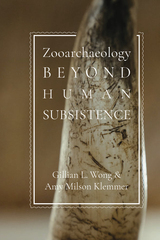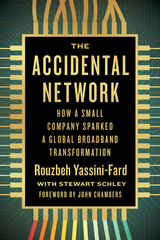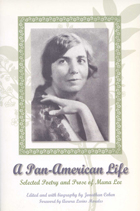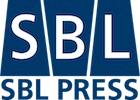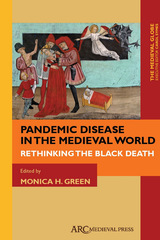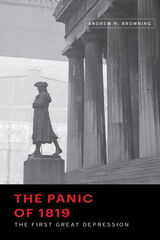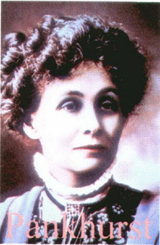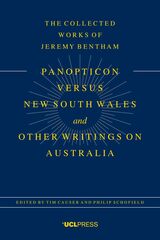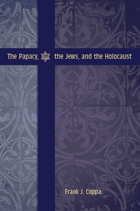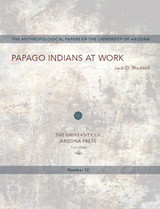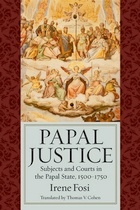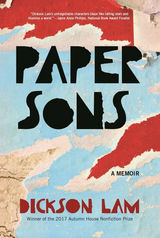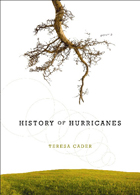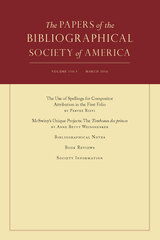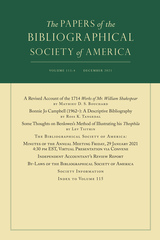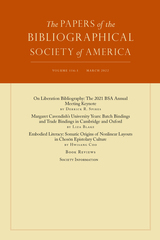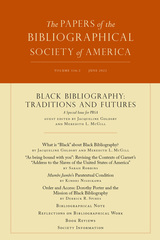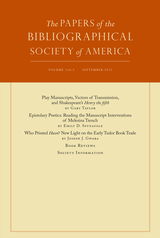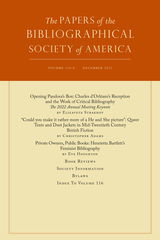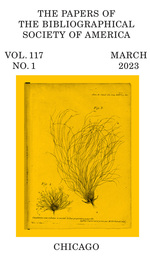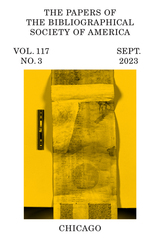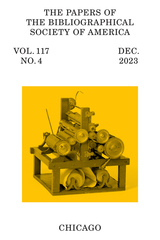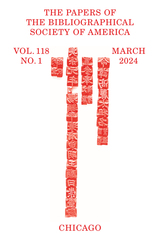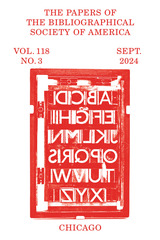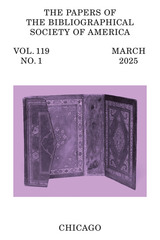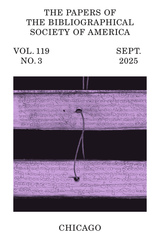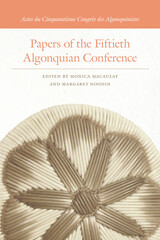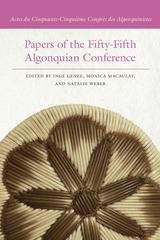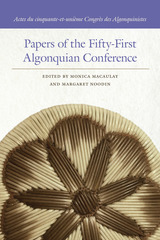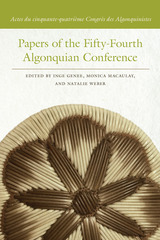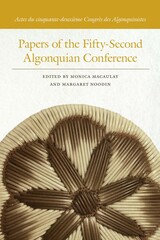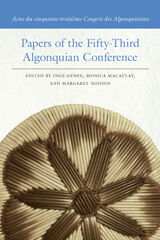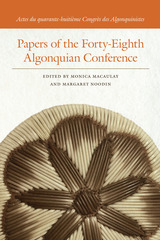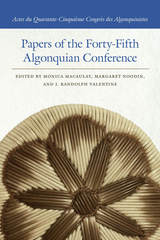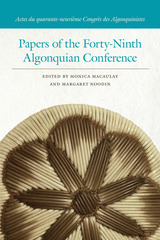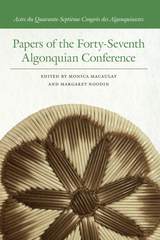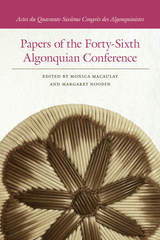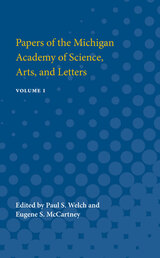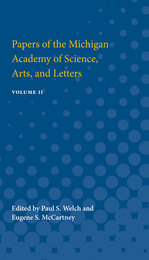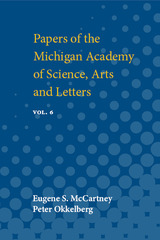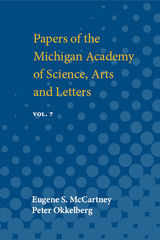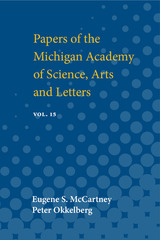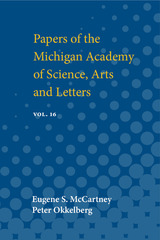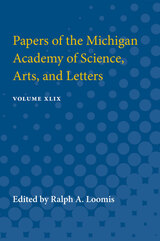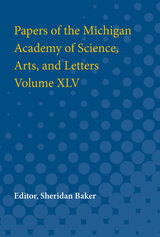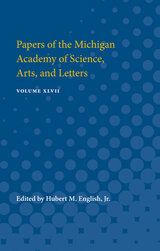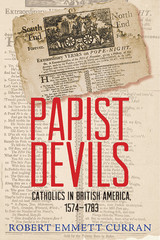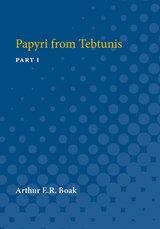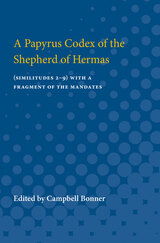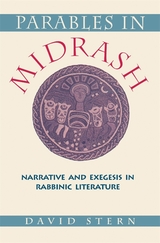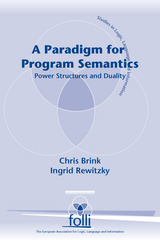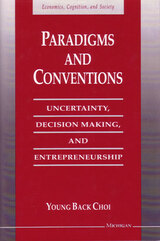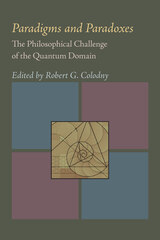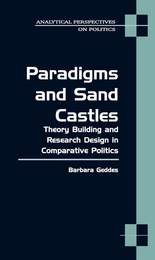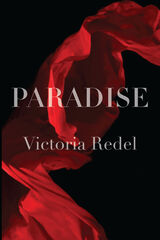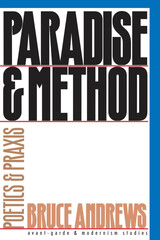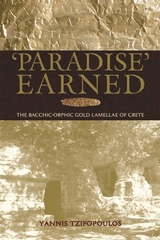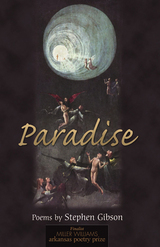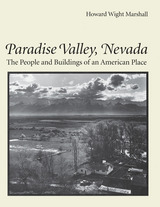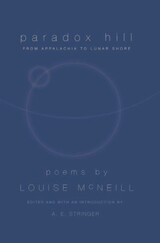A Pan-American Life: Selected Poetry and Prose of Muna Lee
Muna Lee; Edited and with biography by Jonathan M. Cohen
University of Wisconsin Press, 2004 The extraordinary Muna Lee was a brilliant writer, lyric poet, translator, diplomat, feminist and rights activist, and, above all, a Pan-Americanist. During the twentieth century, she helped shape the literary and social landscapes of the Americas. This is the first biography of her remarkable life and a collection of her diverse writings, which embody her vision of Pan America, an old concept that remains new and meaningful today.
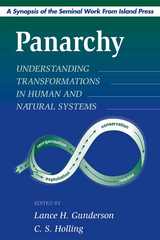 Panarchy Synopsis: Understanding Transformations in Human and Natural Systems
Lance Gunderson; Edited by C. S. Holling
Island Press, 2002 ‘Panarchy’ is a new term coined from the name of the Greek god Pan, a symbol of universal nature and associated with unpredictable change. It represents an alternative framework for managing the issues that emerge from the interaction between people and nature. That interaction generates countless surprises, often the result of slow changes that can accumulate and unexpectedly flip an ecosystem or an economy into a qualitatively different state. That state may be not only impoverished, but also effectively irreversible. Thus, understanding how such change occurs is critical to achieving a sustainable society. Developed from the work of the Resilience Alliance, a worldwide group of leading organizations and individuals involved in ecological and economic research, Panarchy provides a framework to understand the cycles of change in complex systems and to gauge if, when, and how they can be influenced. This synopsis introduces lay readers and decision makers to this widely acclaimed line of inquiry and to the basic concept behind Panarchy, published by Island Press.
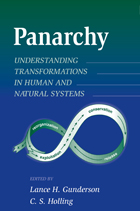 Panarchy: Understanding Transformations in Human and Natural Systems
Edited by Lance H. Gunderson and C. S. Holling
Island Press, 2001 Creating institutions to meet the challenge of sustainability is arguably the most important task confronting society; it is also dauntingly complex. Ecological, economic, and social elements all play a role, but despite ongoing efforts, researchers have yet to succeed in integrating the various disciplines in a way that gives adequate representation to the insights of each. Panarchy, a term devised to describe evolving hierarchical systems with multiple interrelated elements, offers an important new framework for understanding and resolving this dilemma. Panarchy is the structure in which systems, including those of nature (e.g., forests) and of humans (e.g., capitalism), as well as combined human-natural systems (e.g., institutions that govern natural resource use such as the Forest Service), are interlinked in continual adaptive cycles of growth, accumulation, restructuring, and renewal. These transformational cycles take place at scales ranging from a drop of water to the biosphere, over periods from days to geologic epochs. By understanding these cycles and their scales, researchers can identify the points at which a system is capable of accepting positive change, and can use those leverage points to foster resilience and sustainability within the system. This volume brings together leading thinkers on the subject -- including Fikret Berkes, Buz Brock, Steve Carpenter, Carl Folke, Lance Gunderson, C.S. Holling, Don Ludwig, Karl-Goran Maler, Charles Perrings, Marten Scheffer, Brian Walker, and Frances Westley -- to develop and examine the concept of panarchy and to consider how it can be applied to human, natural, and human-natural systems. Throughout, contributors seek to identify adaptive approaches to management that recognize uncertainty and encourage innovation while fostering resilience. The book is a fundamental new development in a widely acclaimed line of inquiry. It represents the first step in integrating disciplinary knowledge for the adaptive management of human-natural systems across widely divergent scales, and offers an important base of knowledge from which institutions for adaptive management can be developed. It will be an invaluable source of ideas and understanding for students, researchers, and professionals involved with ecology, conservation biology, ecological economics, environmental policy, or related fields.
The Panarion of Epiphanius of Salamis: Book I (Sects 1–46)
Frank Williams
SBL Press, 2016 Now in Paperback! Epiphanius, monastic founder and bishop of Salamis on Cyprus for almost forty years of the fourth century, threw heart and soul into the controversies of the time and produced the Panario or Medicine Chest, a historical encyclopedia of sects and heresies and their refutations. Book I deals with material that is also found in Nag Hammadi, other Gnostic writings, and in such patristic authors as Irenaeus and Hippolytus. Students of Nag Hammadi and Gnosticism, patrologists, historians of religion, church historians, and Judaism have found this translation useful. Features: - Paperback format of an essential Brill reference set
- Coverage of Gnostic and Jewish Christian groups
- Documents not available elsewhere in paperback
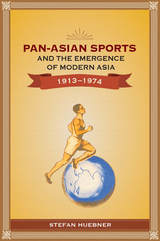 Pan-Asian Sports and the Emergence of Modern Asia, 1913-1974
Stefan Huebner
National University of Singapore Press, 2016 The history of regional sporting events in 20th century Asia yields insights into Western and Asian perspectives on what defines modern Asia, and can be read as a staging of power relations in Asia and between Asia and the West. The Far Eastern Championship Games began in 1913, and were succeeded after the Pacific War by the Asian Games. Missionary groups and colonial administrations viewed sporting success not only as a triumph of physical strength and endurance but also of moral education and social reform. Sporting competitions were to shape a ‘new Asian man’ and later a ‘new Asian woman’ by promoting internationalism, egalitarianism and economic progress, all serving to direct a “rising” Asia toward modernity. Over time, exactly what constituted a “rising” Asia underwent remarkable changes, ranging from the YMCA’s promotion of muscular Christianity, democratization, and the social gospel in the US-colonized Philippines to Iranian visions of recreating the Great Persian Empire.
Based on a vast range of archival materials and spanning sixty years and three continents, Sports and the Emergence of Modern Asia shows how pan-Asian sporting events helped shape anti-colonial sentiments, Asian nationalisms, and pan-Asian aspirations in places as diverse as Japan and Iran, and across the span of countries lying between them.
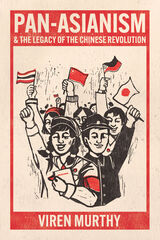 Pan-Asianism and the Legacy of the Chinese Revolution
Viren Murthy
University of Chicago Press, 2023 An intellectual history of pan-Asianist discourse in the twentieth century.
Recent proposals to revive the ancient Silk Road for the contemporary era and ongoing Western interest in China’s growth and development have led to increased attention to the concept of pan-Asianism. Most of that discussion, however, lacks any historical grounding in the thought of influential twentieth-century pan-Asianists. In this book, Viren Murthy offers an intellectual history of the writings of theorists, intellectuals, and activists—spanning leftist, conservative, and right-wing thinkers—who proposed new ways of thinking about Asia in their own historical and political contexts. Tracing pan-Asianist discourse across the twentieth century, Murthy reveals a stronger tradition of resistance and alternative visions than the contemporary discourse on pan-Asianism would suggest. At the heart of pan-Asianist thinking, Murthy shows, were the notions of a unity of Asian nations, of weak nations becoming powerful, and of the Third World confronting the “advanced world” on equal terms—an idea that grew to include non-Asian countries into the global community of Asian nations. But pan-Asianists also had larger aims, imagining a future beyond both imperialism and capitalism. The fact that the resurgence of pan-Asianist discourse has emerged alongside the dominance of capitalism, Murthy argues, signals a profound misunderstanding of its roots, history, and potential.
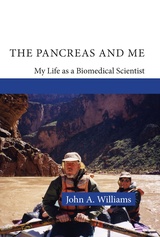 The Pancreas and Me: My Life as a Biomedical Scientist
John A. Williams
Michigan Publishing, 2023 This is a personal story that weaves together the personal and professional aspects of a rewarding life in biomedical research. The book describes the education and career of John A. Williams, a leading biomedical scientist whose research focused on the exocrine pancreas and its function. It is arranged chronologically and covers Dr. Williams’ education, how he developed his interest in the pancreas, and how research on the pancreas developed over his 50 year career. It also provides insight into the state of American biomedical education, medical schools, and how research is funded and published. As a professor, his research was on the exocrine pancreas, its secretion of digestive enzymes, and regulation by gastrointestinal hormones. He published over 400 papers and trained over 60 graduate students and postdoctoral fellows. Dr Williams served as President of two scientific societies, the American Pancreatic Association and the American Physiological Society, and as Editor of four journals. He also founded the Pancreapedia, an open access knowledgbase about the exocrine pancreas. In addition, he taught medical and graduate students with a focus on gastrointestinal function. While a medical student, John married his life partner, Christa Smith, and they have been together 57 years raising two children and helping with four grandchildren and two great-grandchildren. John has a lifetime interest in outdoor activities, nature, and conservation. For the last decade he has been an advocate for reducing the use of fossil fuels. He is also active in the Ann Arbor Friends meeting.
 The Pancreas: Biology and Physiology
John A. Williams
Michigan Publishing, 2021 This book provides comprehensive and definitive coverage of the current understanding of the structure and function of the exocrine pancreas. While emphasis is on normal physiology, the relevant cell biological, developmental and biochemical information is also provided. Where appropriate, chapters also include material on functional changes in pancreatitis. All chapters are fully referenced and provide up to date information. The book has been overseen and published by the American Pancreatic Association with Fred S. Gorelick and John A. Williams as Editors. It includes 26 chapters written by an international group of authorities; completed chapters are also presented in open access format on the Pancreapedia (www.pancreapedia.org). The book contains full-color images and summary diagrams that enhance readability and extend the detail provided in the text. The Pancreas: Biology and Physiology is divided into four sections: - Pancreatic Exocrine Structure and Function Anatomy, Bioenergetics, Cytoskeleton, Intracellular Signaling
- Acinar Cells Digestive enzyme synthesis, intracellular transport, Zymogen granules, Exocytosis
- Exocrine Pancreas Integrative Responses Hormonal and Neural Control of Protein and Fluid Secretion, Molecular mechanisms of fluid and bicarbonate secretion, regulation of growth and regeneration
- Pancreatic Islet and Stellate Cell Structure and Function Structure and vasculature of islets, regulation of islet secretion, Stellate Cells in health and disease
The book is designed to be a reference book for pancreas researchers but its clear and readable text will appeal to teachers, students and all individuals interested in the exocrine pancreas.
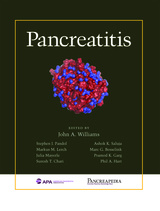 Pancreatitis
John A. Williams, editor
Michigan Publishing, 2016 This book provides comprehensive and definitive coverage of current
understanding of the causes, diagnosis and treatment of the inflammatory
disease pancreatitis. Pancreatitis occurs in both acute and chronic forms
along with the more recently identified autoimmune pancreatitis.
Mechanisms of the disease are studied in animal models with the goal of
developing rational therapy.
The book has been overseen and published by the American Pancreatic
Association with John A. Williams as Editor-in-Chief. It includes 65
chapters written and edited by a worldwide group of authorities;
completed chapters are also presented in open access on the Pancreapedia
(www.pancreapedia.org). Individual chapters are relatively brief, dividing
coverage into smaller units while maintaining depth. The book contains
full-color and summary diagrams for enhanced readability, and a subject
index enhances findability of information on specific topics.
Pancreatitis is divided into four sections:
• Experimental Pancreatitis – Section Editors: Stephen J. Pandol
and Ashok K. Saluja
• Acute Pancreatitis – Section Editors: Markus M. Lerch
and Marc G. Besselink
• Chronic Pancreatitis – Section Editors: Pramod K. Garg
and Julia Mayerle
• Autoimmune Pancreatitis – Section Editors: Suresh T. Chari
and Phil A. Hart
The book is aimed at pancreas researchers and clinical practitioners, but
the clear and readable text will also appeal to students and individuals
interested in the exocrine pancreas and its diseases.
 The Pandemic and the Working Class: How US Labor Navigated COVID-19
Edited by Nick Juravich and Steve Striffler
University of Illinois Press, 2025 During the COVID-19 pandemic, thousands of workers lost their jobs in sectors from hospitality to transportation, while healthcare and frontline service workers faced a new world of brutal hours in unsafe and even deadly conditions. Yet, as the US economy reopened, workers experienced a rare moment of leverage as demand for labor and government support powered a surge of collective action that allowed working people to seek rights, respect, and power on the job through resignations, walkouts, strikes, and union organizing. The lessons and legacies of this upsurge in organizing continue to shape work, activism, and politics across the nation today. Nick Juravich and Steve Striffler edit a collection that examines the effects of the pandemic on workers. Sections of the book focus on specific impacts and government efforts to restructure the economy; the dramatic effect of the pandemic on the hospitality industry; educators’ response on behalf of themselves and their students; frontline healthcare workers; and the innovative forms of labor organizing that emerged during and after COVID. Contributors: Carlos Aramayo, Kathleen Brown, Sandrine Etienne, Ismael García-Colón, Puya Gerami, Maura Hagan, Connor Harney, Devan Hawkins, Leigh Howard, Marian Moser Jones, Doris Joy, Nick Juravich, Eric Larson, Kathryn M. Meyer, Samir Sonti, Steve Striffler, Lia Warner, Andrew B. Wolf, and Jennifer Zelnick
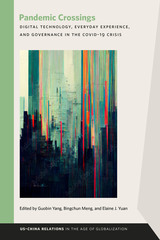 Pandemic Crossings: Digital Technology, Everyday Experience, and Governance in the COVID-19 Crisis
Guobin Yang
Michigan State University Press, 2024 Throughout the COVID-19 crisis, nation states found new ways to assert power under the guise of public health, from closing or tightening borders to expanding the boundaries of acceptable citizen surveillance. As these controls increased in intensity, citizens’ passions to cross borders seemed to grow in proportion. Pandemic Crossings explores how these processes of boundary making and crossing, often mediated by digital technology despite inequity of access, had profound and often contradictory consequences on individual lives, national politics, and U.S.–China relations. This rich and geographically diverse collection of studies informed by everyday, individual experiences contribute new insights to the interplay between digital technologies and state governance during the covid-19 pandemic. It opens up new avenues of research not only on the covid-19 pandemic but also on global health crises more broadly.
Pandemic Disease in the Medieval World: Rethinking the Black Death
Monica H. Green
Arc Humanities Press, 2015 This ground-breaking book brings together scholars from the humanities and social and physical sciences to address the question of how recent work in the genetics, zoology, and epidemiology of plague's causative organism (Yersinia pestis) can allow a rethinking of the Black Death pandemic and its larger historical significance. This book is available as Open Access.
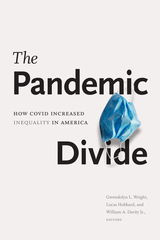 The Pandemic Divide: How COVID Increased Inequality in America
Gwendolyn L. Wright, Lucas Hubbard, and William A. Darrity, editors
Duke University Press, 2022 As COVID-19 made inroads in the United States in spring 2020, a common refrain rose above the din: “We’re all in this together.” However, the full picture was far more complicated—and far less equitable. Black and Latinx populations suffered illnesses, outbreaks, and deaths at much higher rates than the general populace. Those working in low-paid jobs and those living in confined housing or communities already disproportionately beset by health problems were particularly vulnerable. The contributors to The Pandemic Divide explain how these and other racial disparities came to the forefront in 2020. They explore COVID-19’s impact on multiple arenas of daily life—including wealth, health, housing, employment, and education—while highlighting what steps could have been taken to mitigate the full force of the pandemic. Most crucially, the contributors offer concrete public policy solutions that would allow the nation to respond effectively to future crises and improve the long-term well-being of all Americans.
Contributors. Fenaba Addo, Steve Amendum, Leslie Babinski, Sandra Barnes, Mary T. Bassett, Keisha Bentley-Edwards, Kisha Daniels, William A. Darity Jr., Melania DiPietro, Jane Dokko, Fiona Greig, Adam Hollowell, Lucas Hubbard, Damon Jones, Steve Knotek, Arvind Krishnamurthy, Henry Clay McKoy Jr., N. Joyce Payne, Erica Phillips, Eugene Richardson, Paul Robbins, Jung Sakong, Marta Sánchez, Melissa Scott, Kristen Stephens, Joe Trotter, Chris Wheat, Gwendolyn L. Wright
 Pandemic Exposures: Economy and Society in the Time of Coronavirus
Edited by Didier Fassin and Marion Fourcade
HAU, 2021 For people and governments around the world, the onset of the COVID-19 pandemic seemed to place the preservation of human life at odds with the pursuit of economic and social life. Yet this simple alternative belies the complexity of the entanglements the crisis has created and revealed, not just between health and wealth but also around morality, knowledge, governance, culture, and everyday subsistence.
Didier Fassin and Marion Fourcade have assembled an eminent team of scholars from across the social sciences, conducting research on six continents, to reflect on the multiple ways the coronavirus has entered, reshaped, or exacerbated existing trends and structures in every part of the globe. The contributors show how the disruptions caused by the pandemic have both hastened the rise of new social divisions and hardened old inequalities and dilemmas. An indispensable volume, Pandemic Exposures provides an illuminating analysis of this watershed moment and its possible aftermath.
 Pandemic Minds: COVID-19 and Mental Health in Hong Kong
Kate Whitehead
Hong Kong University Press, 2024 Uses stories of life under Hong Kong’s strict pandemic restrictions to inspire mental health awareness.
The COVID-19 pandemic was a global crisis that affected millions of lives and brought mental health challenges to the forefront. In Hong Kong, the situation was worsened by uniquely strict COVID-19 regulations, quarantine measures, and travel restrictions. The mental health issues associated with the pandemic did not end with the lifting of the mask mandate. On the contrary, the repercussions are only just beginning to surface and their impact will be felt for years to come.
This eye-opening book shares the stories of ordinary Hongkongers who faced extraordinary challenges during the pandemic. Through a blend of first-person accounts, psychological insights, and hard data, it offers a compelling and accessible exploration of the toll that the COVID-19 pandemic has taken on mental health in Hong Kong.
However, Pandemic Minds is not only a chronicle of suffering—it is also a guide to healing and hope. It offers practical advice on how to overcome the mental health issues caused by the pandemic, and how to build resilience and well-being. It reveals the lessons that can be learned from Hong Kong’s experience, and how they can help individuals and policymakers around the world.
Pandemic Power: The Covid Response and the Erosion of Democracy - A Liberal Critique
Muriel Blaive
Central European University Press, 2025 Pandemic Power is a thought-provoking exploration of how the response to the Covid pandemic has undermined our understanding of science, freedom, and democracy. It delivers a searing critique of policies and narratives that have, in fact, fueled the rise of the extreme right in many countries.
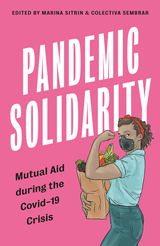 Pandemic Solidarity: Mutual Aid during the Coronavirus Crisis
Marina Sitrin
Pluto Press, 2020 “Helps us to rethink and re-imagine an egalitarian society where no one is left behind”—London School of Economics Review of Books
In times of crisis, when institutions of power are laid bare, people turn to one another. Pandemic Solidarity collects firsthand experiences from around the world of people creating their own narratives of solidarity and mutual aid in the time of the global crisis of COVID-19.
The world's media was quick to weave a narrative of selfish individualism, full of empty supermarket shelves and con-men. However, if you scratch the surface, you find a different story of community and self-sacrifice.
Looking at thirteen countries and regions, including India, Rojava, China and the US, the personal accounts in the book weave together to create a larger picture, revealing a universality of experience - a housewife in Istanbul supports her neighbor in the same way as a punk in Portland, and a grandmother in Italy does. Moving beyond the present, these stories reveal what an alternative society could look like, and reflect the skills and relationships we already have to create that society, challenging institutions of power that have already shown their fragility. Chapters include:
*Capitalism Kills, Solidarity Gives Life": A Glimpse of Solidarity Networks from Turkey
*Solidarity Network in Iraq During Covid-19: This Time the Enemy is Invisible
*Sharing Spaces and Crossing Borders: Voices from Taiwan
*Rethinking Minority and Mainstream in India
*Confronting State Authoritarianism: Civil Society and Community-Based Solidarity in Southern Africa
*On Intersectional Solidarity in Portugal
*Solidarity Networks in Greece
*Argentina: Injustices Magnified; Memories of Resistance Reactivated
*On Grassroots Organizing: Excerpts from Brazil
What happens to society when we are not held back by the neoliberal narrative? What can we do, to protect ourselves and one another, when we organize and act collectively? From the stories told here, maybe more than we expect.
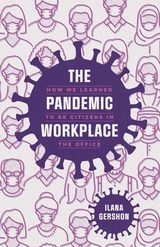 The Pandemic Workplace: How We Learned to Be Citizens in the Office
Ilana Gershon
University of Chicago Press, 2024 A provocative book arguing that the workplace is where we learn to live democratically.
In The Pandemic Workplace, anthropologist Ilana Gershon turns her attention to the US workplace and how it changed—and changed us—during the pandemic. She argues that the unprecedented organizational challenges of the pandemic forced us to radically reexamine our attitudes about work and to think more deeply about how values clash in the workplace. These changes also led us as workers to engage more with the contracts that bind us as we rethought when and how we allow others to tell us what to do.
Based on over two hundred interviews, Gershon’s book reveals how negotiating these tensions during the pandemic made the workplace into a laboratory for democratic living—the key place where Americans are learning how to develop effective political strategies and think about the common good. Exploring the explicit and unspoken ways we are governed (and govern others) at work, this accessible book shows how the workplace teaches us to be democratic citizens.
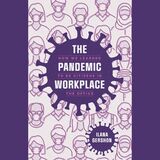 The Pandemic Workplace: How We Learned to Be Citizens in the Office
Ilana Gershon
University of Chicago Press, 2024 This is an auto-narrated audiobook version of this book.
A provocative book arguing that the workplace is where we learn to live democratically.
In The Pandemic Workplace, anthropologist Ilana Gershon turns her attention to the US workplace and how it changed—and changed us—during the pandemic. She argues that the unprecedented organizational challenges of the pandemic forced us to radically reexamine our attitudes about work and to think more deeply about how values clash in the workplace. These changes also led us as workers to engage more with the contracts that bind us as we rethought when and how we allow others to tell us what to do.
Based on over two hundred interviews, Gershon’s book reveals how negotiating these tensions during the pandemic made the workplace into a laboratory for democratic living—the key place where Americans are learning how to develop effective political strategies and think about the common good. Exploring the explicit and unspoken ways we are governed (and govern others) at work, this accessible book shows how the workplace teaches us to be democratic citizens.
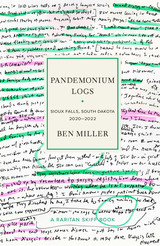 Pandemonium Logs: Sioux Falls, South Dakota, 2020–2022
Ben Miller
Rutgers University Press, 2025 Balcones Prize Winner in Nonfiction
In 2015, Ben Miller and the poet Anne Pierson Wiese moved from New York City to Sioux Falls, South Dakota, to explore their midwestern roots and to focus on their writing careers. Working a day job in a hospital, Miller had a front-row seat to the COVID-19 pandemic as it moved from the coasts to the urban Midwest. Pandemonium Logs casts an unflinching eye on the state of the worker in the US health-care system during a global pandemic, giving voice to the doctors, nurses, support staff, patients, and families caught in the complex swirl of daily dilemmas and crucial choices. In unsparing yet sympathetic prose, Ben Miller creates an intimate portrait of the impact of COVID on the diverse people of South Dakota. Through a wide range of characters—from understandably confused patients to quietly competent nurses—he explores the human complexities of the crisis: a doctor based in Mumbai who treats critically ill patients in the Dakotas via a tenuous hodgepodge of telehealth apparatus, a Hydra of six workplace trainers who together cannot train one employee to do one job, a vice president of corporate hospitality who lives to rip down safety signs as fast as nurses post them, a ninety-year-old hospital volunteer who pushes wheelchairs containing patients half his age. In Pandemonium Logs, Miller provides precise and moving observations of ordinary people doing extraordinary things.
 Pandora’s Box: A History of the First World War
Jörn Leonhard
Harvard University Press, 2020 Winner of the Norman B. Tomlinson, Jr. Prize
“The best large-scale synthesis in any language of what we currently know and understand about this multidimensional, cataclysmic conflict.”
—Richard J. Evans, Times Literary Supplement
In this monumental history of the First World War, Germany’s leading historian of the period offers a dramatic account of its origins, course, and consequences. Jörn Leonhard treats the clash of arms with a sure feel for grand strategy. He captures the slow attrition, the race for ever more destructive technologies, and the grim experiences of frontline soldiers. But the war was more than a military conflict and he also gives us the perspectives of leaders, intellectuals, artists, and ordinary men and women around the world as they grappled with the urgency of the moment and the rise of unprecedented political and social pressures. With an unrivaled combination of depth and global reach, Pandora’s Box reveals how profoundly the war shaped the world to come.
“[An] epic and magnificent work—unquestionably, for me, the best single-volume history of the war I have ever read…It is the most formidable attempt to make the war to end all wars comprehensible as a whole.”
—Simon Heffer, The Spectator
“[A] great book on the Great War…Leonhard succeeds in being comprehensive without falling prey to the temptation of being encyclopedic. He writes fluently and judiciously.”
—Adam Tooze, Die Zeit
“Extremely readable, lucidly structured, focused, and dynamic…Leonhard’s analysis is enlivened by a sharp eye for concrete situations and an ear for the voices that best convey the meaning of change for the people and societies undergoing it.”
—Christopher Clark, author of The Sleepwalkers
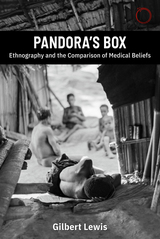 Pandora's Box: Ethnography and the Comparison of Medical Beliefs: The 1979 Lewis Henry Morgan Lectures
Gilbert Lewis
HAU, 2021 In this book, written between 1979 and 2020, Gilbert Lewis distills a lifetime of insights he garnered as a medical anthropologist. He asks: How do different cultures' beliefs about illness influence patients' abilities to heal? Despite the advances of Western medicine, what can it learn from non-Western societies that consider sickness and curing to be as much a matter of social relationships as biological states? What problems arise when one set of therapeutic practices displaces another?
Lewis compares Indigenous medical beliefs in New Guinea in 1968, when villagers were largely self-reliant, and in 1983, after they became dependent on Western medicine. He then widens his comparative scope by turning to West Africa and discussing a therapeutic community run by a prophet who heals the ill through confession and long-term residential care.
Pandora's Box began life with the prestigious Lewis Henry Morgan Lectures that Gilbert Lewis delivered in 1979 at the University of Rochester. He expanded them with materials gathered over the next forty years, completing the manuscript a few weeks before his death. Engagingly written, this book will inspire anthropologists, medical professionals, students, and curious readers to look with new eyes at current crises in world health.
 Pandora’s Hope: Essays on the Reality of Science Studies
Bruno Latour
Harvard University Press, 1999 A scientist friend asked Bruno Latour point-blank: “Do you believe in reality?” Taken aback by this strange query, Latour offers his meticulous response in Pandora’s Hope. It is a remarkable argument for understanding the reality of science in practical terms.
In this book, Latour, identified by Richard Rorty as the new “bête noire of the science worshipers,” gives us his most philosophically informed book since Science in Action. Through case studies of scientists in the Amazon analyzing soil and in Pasteur’s lab studying the fermentation of lactic acid, he shows us the myriad steps by which events in the material world are transformed into items of scientific knowledge. Through many examples in the world of technology, we see how the material and human worlds come together and are reciprocally transformed in this process.
Why, Latour asks, did the idea of an independent reality, free of human interaction, emerge in the first place? His answer to this question, harking back to the debates between Might and Right narrated by Plato, points to the real stakes in the so-called science wars: the perplexed submission of ordinary people before the warring forces of claimants to the ultimate truth.
 Pandora's Locks: The Opening of the Great Lakes-St. Lawrence Seaway
Jeff Alexander
Michigan State University Press, 2009 The St. Lawrence Seaway was considered one of the world's greatest engineering achievements when it opened in 1959. The $1 billion project-a series of locks, canals, and dams that tamed the ferocious St. Lawrence River-opened the Great Lakes to the global shipping industry.
Linking ports on lakes Superior, Michigan, Huron, Erie, and Ontario to shipping hubs on the world's seven seas increased global trade in the Great Lakes region. But it came at an extraordinarily high price. Foreign species that immigrated into the lakes in ocean freighters' ballast water tanks unleashed a biological shift that reconfigured the world's largest freshwater ecosystems.
Pandora's Locks is the story of politicians and engineers who, driven by hubris and handicapped by ignorance, demanded that the Seaway be built at any cost. It is the tragic tale of government agencies that could have prevented ocean freighters from laying waste to the Great Lakes ecosystems, but failed to act until it was too late. Blending science with compelling personal accounts, this book is the first comprehensive account of how inviting transoceanic freighters into North America's freshwater seas transformed these wondrous lakes.
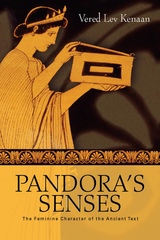 Pandora's Senses: The Feminine Character of the Ancient Text
Vered Lev Kenaan
University of Wisconsin Press, 2010 The notorious image of Pandora haunts mythology: a woman created as punishment for the crimes of man, she is the bearer of hope yet also responsible for the Earth’s desolation. She binds together perpetuating dichotomies that underlie the most fundamental aspects of the Western canon: beauty and evil, body and soul, depth and superficiality, truth and lie. Speaking in multiplicity, Pandora emerges as the first sign of female complexity.
In this compelling study, Vered Lev Kenaan offers a radical revision of the Greek myth of the first woman. She argues that Pandora leaves a decisive mark on ancient poetics and shows that we can unravel the profound impact of Pandora’s image once we recognize that Pandora embodies the very idea of the ancient literary text. Locating the myth of the first woman right at the heart of feminist interrogation of gender and textuality, Pandora’s Senses moves beyond a feminist critique of masculine hegemony by challenging the reading of Pandora as a one-dimensional embodiment of the misogynist vision of the feminine. Uncovering Pandora as a textual principle operating outside of the feminine, Lev Kenaan shows the centrality of this iconic figure among the poetics of such central genres as the cosmological and didactic epic, the Platonic dialogue, the love elegy, and the ancient novel. Pandora’s Senses innovates our understanding of gender as a critical lens through which to view ancient literature.
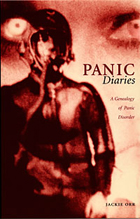 Panic Diaries: A Genealogy of Panic Disorder
Jackie Orr
Duke University Press, 2006 Part cultural history, part sociological critique, and part literary performance, Panic Diaries explores the technological and social construction of individual and collective panic. Jackie Orr looks at instances of panic and its “cures” in the twentieth-century United States: from the mass hysteria following the 1938 radio broadcast of H. G. Wells’s War of the Worlds to an individual woman swallowing a pill to control the “panic disorder” officially recognized by the American Psychiatric Association in 1980. Against a backdrop of Cold War anxieties over atomic attack, Orr highlights the entanglements of knowledge and power in efforts to reconceive panic and its prevention as problems in communication and information feedback. Throughout, she reveals the shifting techniques of power and social engineering underlying the ways that scientific and social scientific discourses—including crowd psychology, Cold War cybernetics, and contemporary psychiatry—have rendered panic an object of technoscientific management. Orr, who has experienced panic attacks herself, kept a diary of her participation as a research subject in clinical trials for the Upjohn Company’s anti-anxiety drug Xanax. This “panic diary” grounds her study and suggests the complexity of her desire to track the diffusion and regulation of panic in U.S. society. Orr’s historical research, theoretical reflections, and biographical narrative combine in this remarkable and compelling genealogy, which documents the manipulation of panic by the media, the social sciences and psychiatry, the U.S. military and government, and transnational drug companies.
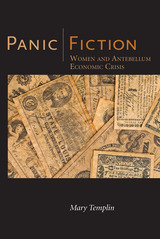 Panic Fiction: Women and Antebellum Economic Crisis
Mary Templin
University of Alabama Press, 2014 Panic Fiction explores a unique body of antebellum American women’s writing that illuminates women’s relationships to the marketplace and the links between developing ideologies of domesticity and the formation of an American middle class.
Between the mid-1830s and the late 1850s, authors such as Hannah Lee, Catharine Sedgwick, Eliza Follen, Maria McIntosh, and Maria Cummins wrote dozens of novels and stories depicting the effects of financial panic on the home and proposing solutions to economic instability. This unique body of antebellum American women’s writing, which integrated economic discourse with the language and conventions of domestic fiction, is what critic Mary Templin terms “panic fiction.”
In Panic Fiction: Antebellum Women Writers and Economic Crisis, Templin draws in part from the methods of New Historicism and cultural studies, situating these authors and their texts within the historical and cultural contexts of their time. She explores events surrounding the panics of 1837 and 1857, prevalent attitudes toward speculation and failure as seen in newspapers and other contemporaneous texts, women’s relationships to the marketplace, and the connections between domestic ideology and middle-class formation.
Although largely unknown today, the phenomena of “panic fiction” was extremely popular in its time and had an enormous influence on nineteenth-century popular conceptions of speculation, failure, and the need for marketplace reform, providing a distinct counterpoint to the analysis of panic found in newspapers, public speeches, and male-authored literary texts of the time.
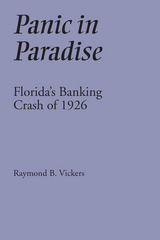 Panic in Paradise: Florida's Banking Crash of 1926
Raymond B. Vickers
University of Alabama Press, 1994 Panic in Paradise is a comprehensive study of bank loan failures during the Florida land boom of the mid-1920s, during the years preceding the stock market crash of 1929. Florida and Georgia experienced a banking panic in 1926 when, in a ten-day period in July, after uncontrollable depositor runs, 117 banks closed in the two states. Uninsured depositors lost millions, and several suicides followed the financial havoc. This volume makes use of banking records that were legally sealed for almost 70 years and provides a shocking story of professional corruption and conspiracy. "An extraordinary and unusual book that makes an important contribution to our understanding of banking history and the general economic history oof the 1920s. The banking collapse in the Southeast is virtually unknown, even to specialists in banking and financial history. No one who is interested in the banking history of the United States will want to miss this book." -- Eugene N. White, Rutgers University "An exhaustively researched pioneering study; brilliant investigative reporting." -- Jack Blicksilver, Georgia State University
 Panic Now?: Tools for Humanizing
Ira Allen
University of Tennessee Press, 2024 When was the best time to panic about the varying crises facing humanity? Twenty years ago. But the next best time? Now?
In line with other considerations of what we have come to call the Anthropocene, in Panic Now? Tools for Humanizing, Ira J. Allen takes the reader on a journey through difficult feelings about the various crises facing humanity, and from there, to new ways of facing impending dread with a sense of empowerment. The interrelated threats of climate collapse, an artificial intelligence revolution, a sixth mass extinction, a novel chemical crisis, and more are all brought to us by what Allen describes as “CaCaCo,” the carbon-capitalism-colonialism assemblage.
After suggesting that it is absolutely time to panic, he asks: how do we manage to panic productively? Admitting there is no one script for everyone to follow, the author traces how we might adopt attitudes and practices that allow us to move through this liminal space between fear and action collectively. This book is a master class in how to create better, more humanizing outcomes by confronting the panic that goes along with the realization that the world as we know it is ending. Rather than remaining mentally, emotionally, imaginatively, and practically stuck in this historical condition, Allen invites us to a very particular, action-oriented mode of panic, which can indeed incite our imaginations to move from panic to empowerment.
The Panic of 1819: The First Great Depression
Andrew H. Browning
University of Missouri Press, 2024 The Panic of 1819 tells the story of the first nationwide economic collapse to strike the United States. Much more than a banking crisis or real estate bubble, the Panic was the culmination of an economic wave that rolled through the United States, forming before the War of 1812, cresting with the land and cotton boom of 1818, and crashing just as the nation confronted the crisis over slavery in Missouri.
The Panic introduced Americans to the new phenomenon of boom and bust, changed the country's attitudes towards wealth and poverty, spurred the political movement that became Jacksonian Democracy, and helped create the sectional divide that would lead to the Civil War. Although it stands as one of the turning points of American history, few Americans today have heard of the Panic of 1819, with the result that we continue to ignore its lessons—and repeat its mistakes.
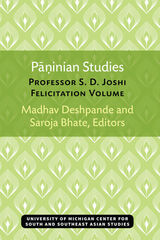 Paninian Studies: Professor S. D. Joshi Felicitation Volume
Madhav Deshpande and Saroja Bhate, Editors
University of Michigan Press, 1991 Pāṇini’s grammar is the oldest surviving grammar of Sanskrit, dating back to the fifth century BCE. In its completeness of coverage of linguistic elements and its theoretical and analytical sophistication, Pāṇini’s grammar is surprisingly modern. It has long provided inspiration for many ideas in modern linguistics, and continues to attract scholars’ attention in the fields of Sanskrit and linguistics. Pāṇinian Studies collects seventeen essays on Pāṇinian linguistics in a single volume dedicated to Professor S. D. Joshi, a stalwart scholar of Pāṇinian grammar. The contributors, all scholors of international acclaim and students and friends of Professor Joshi, include Ashok Aklujkar, Pandit V. B. Bhagwat, Saroja Bhate, Gopikamohan Bhattacharya, Johannes Bronkhorst, George Cardona, Achyutananda Dash, Madhav M. Deshpande, Peter Edwin Hook, Daniel H. H. Ingalls, V. N. Jha, Dinabandhu Kar, Paul Kiparsky, Bimal Krishna Matilal, G. B. Palsule, K. Kunjunni Raja, and J. A. F. Roodbergen. Taken together, their contributions encompass the wide range of interests and specializations within the field of Pāṇinian studies.
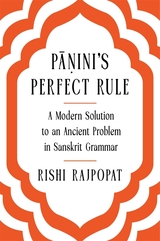 Pāṇini's Perfect Rule: A Modern Solution to an Ancient Problem in Sanskrit Grammar
Rishi Rajpopat
Harvard University Press, 2025 A new interpretation of a 2,500-year-old Sanskrit text upends millennia of debate and affirms an ancient linguist’s remarkably sophisticated grammatical system.
Around 500 BCE, the Indian scholar Pāṇini wrote a treatise on Sanskrit, the Aṣṭādhyāyī, describing a kind of language machine: an algebraic system of rules for producing grammatically correct word forms. The enormity and elegance of that accomplishment—and the underlying computational methodology—cemented Pāṇini’s place as a founder of linguistics. Even so, centuries of commentators have insisted that there are glitches in the machine’s ability to tackle rule conflict (that is, a situation in which two or more rules are simultaneously applicable) and have responded with complex rules and tools aimed at resolving the issues apparently besetting the ancient system.
In one fell swoop, this book renders the overwhelming majority of that work obsolete. Linguist Rishi Rajpopat lays out a novel interpretation of Pāṇini’s grammar, focusing on Pāṇini’s only rule dealing with rule conflict, known as 1.4.2. Pāṇini’s Perfect Rule shows that the Aṣṭādhyāyī indeed functions like a well-oiled machine, capable of handling challenges without any of the complications introduced by later scholars.
Rajpopat thus solves an ancient and important problem in Indology and linguistics that will fascinate anyone interested in how language systems—including those of computer programming—operate. In addition, Pāṇini’s Perfect Rule offers meditations on the history of the early Pāṇinian tradition, its philosophy, the relationship between rule conflict and accentuation, and aspects of theoretical phonology. A nontechnical preface lays out key findings and foregrounds the deep history of Sanskrit scholarship. This volume opens new horizons for the study of Sanskrit, inviting seasoned experts and novices alike to behold its majesty.
Pankhurst
Jad Adams
Haus Publishing, 2003 Emmeline Pankhurst (1858-1928) was a leading suffragette and founder in 1903 of the Women’s Social and Political Union (WSPU). She was incensed by the refusal of the Independent Labour Party to admit women. In reaction she founded the all-female WSPU. Both Emmeline and her daughter Christabel were imprisoned many times for the political stance and militancy, with which they fought for the women’s right to vote. Her battle-cry, ‘remove the political disability of sex’, is as relevant today as it was explosive then.
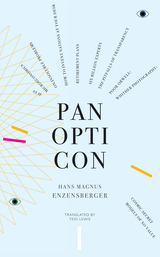 Panopticon
Hans Magnus Enzensberger
Seagull Books, 2018 A collection of daring short essays on topical themes, including politics, economics, religion, society.
Hans Magnus Enzensberger takes the title for this collection not from Jeremy Bentham’s famous prison but from a mid-1930s Cabinet of Curiosities opened in Germany by Karl Valentin. “There,” writes Enzensberger, “viewers could admire, along with implements of torture, all manner of abnormalities and sensational inventions.” And that’s what he offers here: a wide-ranging, surprising look at all manner of strange aspects of our contemporary world.
As masterly with the essay as he is with fiction and poetry, Enzensberger here presents complicated thoughts with a light touch, tying new iterations of old ideas to their antecedents, quoting liberally from his forebears, and presenting himself unapologetically as not an expert but a seeker. Enzensberger the essayist works in the mode of Montaigne, unafraid to take his reader in unexpected directions, knowing that the process of exploration is often in itself sufficient reward for following a line of thought. In an era that regularly laments the death of the public intellectual, Enzensberger is the real deal: a towering figure in German literature who refuses to let his mind or work be bound by the narrow world of the poetry or fiction section.
The Panopticon Versus "New South Wales" and Other Writings on Australia
Tim Causer and Philip Schofield
University College London, 2021 Jeremy Bentham’s writings on Australian governance and colonization.
Jeremy Bentham conceived the panopticon, in part, as an alternative to criminal transportation to Australia. This latest volume in The Collected Works of Jeremy Bentham series draws out these connections by collecting both Bentham’s fragmentary and extended comments on Australian governance and colonization. These writings include a fragment headed “New Wales” (1792) correspondence with William Wilberforce (1802), three letters to Lord Pelham (1802), a “Plea for the Constitution” (1802–3), and “Colonization Company Proposal” (1831)—the majority published here for the first time. Although Bentham’s most famous ideas emerged from his opposition to colonization, these writings demonstrate how the reformer became a vocal advocate for settler colonization near the end of his life.
 Panorama: Intermediate Russian Language and Culture
Benjamin Rifkin, Evgeny Dengub, and Susanna Nazarova
Georgetown University Press, 2017 E-Textbooks are now available to purchase or rent through VitalSource.com! Please visit VitalSource for more information on pricing and availability. As of January 1, 2021, Smart Sparrow Companion Websites are no longer available for any of our textbook programs. New companion websites are coming soon, and will be hosted by Lingco. Instructors may sample the new companion websites now by visiting GUPTextbooks.com/companionwebsites. The full websites will be available for fall 2021 course adoption. Until the new companion websites become available, eBook Workbooks with exercises from the Smart Sparrow Electronic Workbook are available for purchase on the GUP website and VitalSource.com, as are Workbook Answer Keys. They will both be sold in eBook format only. Panorama moves intermediate-level students of Russian toward advanced proficiency by engaging them in a systematic and comprehensive approach to Russian grammar with texts from a variety of genres, including proverbs and sayings to immerse students in Russian culture. By reading and listening to Russian literary classics and contemporary nonfiction texts, students develop a contextual understanding of Russian culture and forms of expression that grow their command of vocabulary, grammar, and complex syntax. The textbook includes comprehensive in-class vocabulary and grammar exercises and discussion topics as well as reading texts (for work in class and at home), summative oral and written exercises, and compelling color photos. An additional eBook Workbook (sold separately) includes essential homework exercises to practice vocabulary, grammar, listening, and speaking. eBook Workbook Answer Keys are also available for purchase for instructor use, or for students to check their own work. Features of Panorama: • Content can be used in one semester/two terms or for a full year• Modular structure allows instructors flexibility to assign chapters in their own sequence• Authentic photojournalist photos to prompt discussion exercises for each chapter topic• Summative exercises for each chapter test student mastery of the grammar topics, vocabulary, and cultural competence related to the chapter theme in a written essay format• Most grammar examples and exercises are drawn from the Russian National Corpus• Readings include blogs, blog comments, articles, and interviews, exposing students to current Russian culture and language. • Audio needed for completing homework exercises is available for free at www.press.georgetown.edu For Teachers: Exam copies of the textbook, Workbook, and Workbook Answer Keys are available free of charge to instructors and must be requested separately. Textbook exam copies can be ordered on this page. To request digital exam copies of the Workbook and Workbook Answer Keys, please visit the pages for each of those products, or visit VitalSource.com. A free online Teachers Manual is also available and features supplementary activities and texts, including ideas for group activities, research projects, songs and video clips for each chapter, audio files of native speakers reading the literary classics from each chapter, and guidance to create a syllabus and exam, with a sample syllabus and sample chapter test. Available at www.press.georgetown.edu.
 Panorama with Website: Intermediate Russian Language and Culture
Benjamin Rifkin, Evgeny Dengub, and Susanna Nazarova
Georgetown University Press, 2021 Panorama with Website moves intermediate-level students of Russian toward advanced proficiency by engaging them in a systematic and comprehensive approach to Russian grammar with texts from a variety of genres, including proverbs and sayings to immerse students in Russian culture. The accompanying companion website–included with the book–offers fully integrated exercises to use alongside the text. By reading and listening to Russian literary classics and contemporary nonfiction texts, students develop a contextual understanding of Russian culture and forms of expression that grow their command of vocabulary, grammar, and complex syntax. The textbook includes comprehensive in-class vocabulary and grammar exercises and discussion topics as well as reading texts (for work in class and at home), summative oral and written exercises, and compelling color photos. Features • Content can be used in one semester/two terms or for a full year • Modular structure allows instructors flexibility to assign chapters in their own sequence • Authentic photojournalist photos to prompt discussion exercises for each chapter topic • Summative exercises for each chapter test student mastery of the grammar topics, vocabulary, and cultural competence related to the chapter theme in a written essay format • Most grammar examples and exercises are drawn from the Russian National Corpus • Readings include blogs, blog comments, articles, and interviews, exposing students to current Russian culture and language. For Instructors: Separate print Teacher’s Editions of Panorama are no longer available. Instead, instructors should submit exam and desk copy requests using ISBN 978-1-64712-195-2. A free online Teachers Manual is also available and features supplementary activities and texts, including ideas for group activities, research projects, songs and video clips for each chapter, audio files of native speakers reading the literary classics from each chapter, and guidance to create a syllabus and exam, with a sample syllabus and sample chapter test. Available at the Publisher’s website.
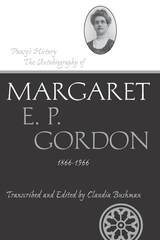 Pansy's History: The Autobiography of Margaret E. P. Gordon, 1866-1966
Claudia L. Bushman
Utah State University Press, 2011 Margaret "Pansy" Gordon's life covered a remarkable span of years and territory. She lived one century, and the years took her from England to residences in British Columbia, Salt Lake City, and an Ojibway village on Georgian Bay; back to Utah and then Canada to homes at the shore of Bear Lake, on an Alberta farm, and in a prairie town; and to Los Angeles for the last decades of her life. She had gone to British Columbia as the daughter of an Anglican missionary to the Tsimshian Indians. She lived in Los Angeles as a Mormon missionary assigned to work as a genealogist. Her personal journey through repeated frontier adventures, religious service, and economic challenges is as worth noting as where she went, but it would be far less engaging if she did not write about it so well. Her memory for detail and her felicity in putting it to paper will reward those who delve into her "Family History," as she titled her memoir. Claudia L. Bushman, descendant of Pansy Gordon, author of numerous books, taught American studies at Columbia University for many years and taught Mormon studies at Claremont Graduate University from 2008 to 2011. She has included letters and other documents that complement this memoir.
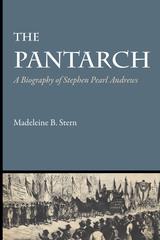 The Pantarch: A Biography of Stephen Pearl Andrews
By Madeleine B. Stern
University of Texas Press, 1968 An abolitionist and a champion of free love and women’s rights would seem decidedly out of place in nineteenth-century Texas, but such a man was Stephen Pearl Andrews (1812–1886), American reformer, civil rights proponent, pioneer in sociology, advocate of reformed spelling, lawyer, and eccentric philosopher. Since his life mirrored and often anticipated the various reform movements spawned not only in Texas but in the United States in the nineteenth century, this first biography of him sharply reflects and elucidates his times. The extremely important role Andrews played in the abolition movement in this country has not heretofore been accorded him. After having witnessed slavery in Louisiana during the 1830s, Andrews came to Texas and began his career as an abolitionist with an audacious attempt to free the slaves there. His singular career, however, comprised many more activities than abolitionism, and most have long been forgotten by historians. He introduced Pitman shorthand into the United States as a means of teaching the uneducated to read; his role in the community of Modern Times, Long Island, was as important as that of Josiah Warren, the “first American anarchist,” although Andrews’s participation in this communal venture, along with the significance of Modern Times itself, has been underestimated. Other causes which Andrews supported included free love and the rights of women, dramatized by his journalistic debate with Horace Greeley and Henry James, Sr., and by his endorsement of Victoria Woodhull as the first woman candidate for the Presidency of the United States. These interests, together with his consequent involvement in the Beecher-Tilton Scandal, provide insight into some of the more colorful aspects of nineteenth-century American reform movements. Andrews’s attacks upon whatever infringed on individual freedom brought him into diverse arenas—economic, sociological, and philosophical. The philosophical system he developed included among its tenets the sovereignty of the individual, a science of society, a universal language (his Alwato long preceded Esperanto), the unity of the sciences, and a “Pantarchal United States of the World.” His philosophy has never before been epitomized nor have its applications to later thought been considered. “I have made it the business of my life to study social laws,” Andrews wrote. “I see now a new age beginning to appear.” This biography of the dynamic reformer examines those social laws and that still-unembodied new age. It reanimates a heretofore neglected American reformer and casts new light upon previously unexplored bypaths of nineteenth-century American social history. The biography is fully documented, based in part upon a corpus of unpublished material in the State Historical Society of Wisconsin.
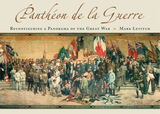 Panthéon De La Guerre: Reconfiguring a Panorama of the Great War
Mark Levitch
University of Missouri Press, 2006
In its day it was, quite simply, the world’s largest painting.
The Panthéon de la Guerre was a cyclorama the size of a football field, featuring 5,000 full-length portraits of prominent figures from World War I—a painting that blatantly sought to arouse patriotic fervor in its viewers. This book traces that work’s shifting fortunes during its unlikely journey from Great War Paris to cold war Kansas City and examines the continuing journeys of its fragments in the world’s art markets.
Mark Levitch has written the first history and analysis of the Panthéon, capturing its social life in a story full of surprising twists and turns and as epic as the painting itself. Created in Paris as an artist-generated propaganda project while the war raged, the Panthéonwas celebrated there as a solemn and nostalgic work after the war, then was promoted as a circuslike spectacle on a postwar tour of the United States when it was “updated” to appeal to Americans’ more celebratory view of the conflict. Consigned to storage and all but forgotten after World War II, the Panthéon was eventually procured for Kansas City’s Liberty Memorial in 1956, where less than 7 percent of the work was reconfigured into a smaller U.S.-centric mural—some of the unused fragments eventually surfacing in Paris flea markets and on eBay.
Levitch looks at the Panthéon as both painting and artifact, combining cultural history, art history, and material culture studies to trace the changing reception of traditional art in the new age of mechanical media. He assesses the changing values attached to the Panthéon and argues that the panorama’s status and frequent reshaping have both informed and been informed by the experience and memory of the First World War in France and the United States—and also reflects on how it has promoted a politically and culturally conservative agenda.
Brimming with facts and insights that will amaze anyone who has known the painting in any of its incarnations, Levitch’s handsomely illustrated book provides a unique lens through which to view a conflict and its commemoration. And as people continue to place importance on commemorative projects, it is a powerful reminder of how ephemeral such grand undertakings can be.
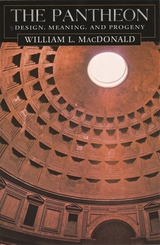 The Pantheon: Design, Meaning, and Progeny, With a New Foreword by John Pinto, Second Edition
William L. MacDonald
Harvard University Press, 2002 The Pantheon in Rome is one of the grand architectural statements of all ages. This richly illustrated book isolates the reasons for its extraordinary impact on Western architecture, discussing the Pantheon as a building in its time but also as a building for all time.
Mr. MacDonald traces the history of the structure since its completion and examines its progeny--domed rotundas with temple-fronted porches built from the second century to the twentieth--relating them to the original. He analyzes the Pantheon's design and the details of its technology and construction, and explores the meaning of the building on the basis of ancient texts, formal symbolism, and architectural analogy. He sees the immense unobstructed interior, with its disk of light that marks the sun's passage through the day, as an architectural metaphor for the ecumenical pretensions of the Roman Empire.
Past discussions of the Pantheon have tended to center on design and structure. These are but the starting point for Mr. MacDonald, who goes on to show why it ranks--along with Cheops's pyramid, the Parthenon, Wren's churches, Mansard's palaces-as an architectural archetype.
 Panthers, Hulks and Ironhearts: Marvel, Diversity and the 21st Century Superhero
Jeffrey A. Brown
Rutgers University Press, 2021 Marvel is one of the hottest media companies in the world right now, and its beloved superheroes are all over film, television and comic books. Yet rather than simply cashing in on the popularity of iconic white male characters like Peter Parker, Tony Stark and Steve Rogers, Marvel has consciously diversified its lineup of superheroes, courting controversy in the process.
Panthers, Hulks, and Ironhearts offers the first comprehensive study of how Marvel has reimagined what a superhero might look like in the twenty-first century. It examines how they have revitalized older characters like Black Panther and Luke Cage, while creating new ones like Latina superhero Miss America. Furthermore, it considers the mixed fan responses to Marvel’s recasting of certain “legacy heroes,” including a Pakistani-American Ms. Marvel, a Korean-American Hulk, and a whole rainbow of multiverse Spidermen.
If the superhero comic is a quintessentially American creation, then how might the increasing diversification of Marvel’s superhero lineup reveal a fundamental shift in our understanding of American identity? This timely study answers those questions and considers what Marvel’s comics, TV series, and films might teach us about stereotyping, Orientalism, repatriation, whitewashing, and identification.
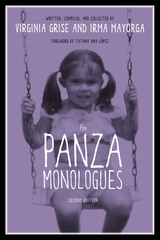 The Panza Monologues
Written, Compiled, and Collected by Virginia Grise and Irma Mayorga
University of Texas Press, 2014 The Panza Monologues is an original solo performance piece based on women's stories about their panzas—tú sabes—that roll of belly we all try to hide. Written, compiled, and collected by Virginia Grise and Irma Mayorga and fashioned into a tour-de-force solo performance, The Panza Monologues features the words of Chicanas speaking with humor and candor. Their stories boldly place the panza front and center as a symbol that reveals the lurking truths about women's thoughts, lives, loves, abuses, and living conditions. This second edition of The Panza Monologues presents the performance script in its entirety, as well as a rich supporting cast of dramaturgical and pedagogical materials. These include a narrative history of the play’s development by the playwrights; critical materials that enhance and expand upon the script’s themes and ideas (a short introduction to San Antonio, where the play was developed; playwright autogeographies; and a manifesto on women of color making theater); and a selection of pedagogical and creative ideas, including guidelines and advice for staging a production of the play and for teaching it in the classroom, community-making activities (screenings, hosting “Panza Parties,” community/group discussions), and creative writing activities connected to the play.
 Panzer Herz: A Live Dissection
Kyle Dargan
Northwestern University Press, 2023 A poet’s final barbed compilation that pierces the inherited and self-inflicted experiences of masculinity
The keen and jagged blade that is Kyle Dargan’s eye is drawn in Panzer Herz: A Live Dissection, the final poetic compilation of a lived and inherited masculinity.
Dargan targets the armored heart, or “panzer herz”—a site where desire, violence, family, politics, blackness, and capitalism all intertwine with gender. Pierced with the question—What if the heart, in the aforementioned capacity, was not a constricting vessel, struggling to withstand internal and external pressures, but instead was a space of release?—the collection opens a cishet masculinity to the inquiries and explorations that the traditional conscription of gender discourages and often vilifies.
I long to abandon this violent / vagrancy, but the roads . . . teem with other men who know / no training, who see upon me / my teachers’ marks and ache / for the elicitation of drawn steel.
The denser blades of compassion and accountability are Dargan’s arms of choice to carry, and not conceal, the weapons he uses to probe his own heart and the hearts of the men and women who shaped him into a man that has been . . . and is unbecoming. The poetic paring of layered lines, the nicking of the process, these poems crimson the page—and not for scarlet spectacle. These versed incisions and sutures are the oeuvre dedicated to the outgrowing of the writer and the “man” that began it.
 Paolo Sorrentino's Cinema and Television
Edited by Annachiara Mariani
Intellect Books, 2021 With a list of critically acclaimed and award-winning films, the Naples-born director and screenwriter Paolo Sorrentino has established himself as an auteur of world renown—arguably the most successful and significant contemporary Italian filmmaker. To date, he has written and directed nine films and won an Academy Award, a BAFTA, and a Golden Globe, among others.
This is the first English-language collection dedicated to the prolific director, who has emerged as one of the most compelling figures in twenty-first-century European cinema. International contributors—from the UK, Italy, France, the Netherlands, Australia, Israel, Canada, and the US—offer original interpretations of Sorrentino’s work in film and television. In an invaluable contribution to the existing literature, they examine Sorrentino’s recurrent grand themes, offer new perspectives and cues for discussion, and challenge established notions about the filmmaker and his career.
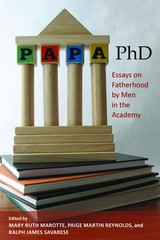 Papa, PhD: Essays on Fatherhood by Men in the Academy
Marotte, Mary Ruth
Rutgers University Press, 2010 It is not easy raising a family and balancing work and personal commitments in academia, regardless of gender. Parents endure the stress of making tenure with the demands of life with children. While women's careers are derailed more often than men's as a result of such competing pressures, fathers, too, experience conflicting feelings about work and home, making parenting ever more challenging.
In Papa, PhD, Mary Ruth Marotte, Paige Martin Reynolds, and Ralph James Savarese bring together a group contributors from a variety of backgrounds and disciplines. They are white, black, South Asian, Asian, and Arab. They are gay and straight, married and divorced. They are tenured and untenured, at research-one universities and at community colleges. Some write at the beginning of their careers, others at the end. But, perhaps most important they do not look back-they look forward to new parental and professional synergies as they reflect on what it means to be a father in the academy.
The fathers writing in Papa, PhD seek to expand their children's horizons, giving them the gifts of better topic sentences and a cosmopolitan sensibility. They seriously consider the implications of gender theory and queer theory-even Marxist theory-and make relevant theoretical connections between their work and the less abstract, more pragmatic, world of fathering. What resonates is the astonishing range of forms that fatherhood can take as these dads challenge traditional norms by actively questioning the status quo.
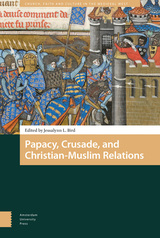 Papacy, Crusade, and Christian-Muslim Relations
Edited by Jessalynn
L. Bird
Amsterdam University Press, 2018 This book examines the role of the papacy and the crusade in the religious life of the late twelfth through late thirteenth centuries and beyond. Throughout the book, the contributors ask several important questions. Was Innocent III more theologian than lawyer-pope and how did his personal experience of earlier crusade campaigns inform his own vigorous promotion of the crusades? How did the outlook and policy of Honorius III differ from that of Innocent III in crucial areas including the promotion of multiple crusades (including the Fifth Crusade and the crusade of William of Montferrat) and how were both pope’s mindsets manifested in writings associated with them? What kind of men did Honorius III and Innocent III select to promote their plans for reform and crusade? How did the laity make their own mark on the crusade through participation in the peace movements which were so crucial to the stability in Europe essential for enabling crusaders to fulfill their vows abroad and through joining in the liturgical processions and prayers deemed essential for divine favor at home and abroad? Further essays explore the commemoration of crusade campaigns through the deliberate construction of physical and literary paths of remembrance. Yet while the enemy was often constructed in a deliberately polarizing fashion, did confessional differences really determine the way in which Latin crusaders and their descendants interacted with the Muslim world or did a more pragmatic position of ‘rough tolerance’ shape mundane activities including trade agreements and treaties?
The Papacy, the Jews, and the Holocaust
Frank J. Coppa
Catholic University of America Press, 2006 This work not only examines Rome's reaction during the fascist period but delves into the broader historical development and the impact of theological anti-Judaism
Papago Indians at Work
Jack O. Waddell
University of Arizona Press, 1969 Intensive analysis of adaptive experiences of five Tohono O'odham laborers in four different occupational environments.
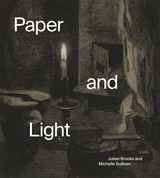 Paper and Light: Luminous Drawings
Julian Brooks
J. Paul Getty Trust, The, 2024 This volume looks at the techniques and materials that artists have utilized since the Renaissance to create spectacular light effects in drawings.
The treatment of light and shadow is one of the building blocks of drawing. From techniques such as highlights and reserves, to material selection and the creation of translucent tracing paper, to the use of light as a medium for viewing artworks, artists for hundreds of years have found innovative and dazzling ways to create light on a sheet of paper.
This publication examines the central relationship between paper and light in the world of drawings in western European art from the Renaissance to the twentieth century. Focusing on drawings from the collection of the J. Paul Getty Museum, as well as works from the British Museum, Musée du Louvre, and others, and featuring masterful works by such artists as Parmigianino, Leonardo da Vinci, Nicolas Poussin, Odilon Redon, Edgar Degas, and Georges Seurat, Paper and Light will entice readers to look longer and more closely at drawings, deriving an even deeper appreciation for the skill and labor that went into them.
This volume is published to accompany an exhibition on view at the J. Paul Getty Museum at the Getty Center from October 15, 2024, to January 19, 2025.
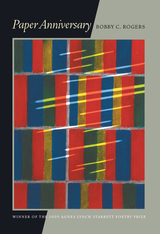 Paper Anniversary
Bobby C. Rogers
University of Pittsburgh Press, 2010 "There is something in American poetry that might be called the book of the small town or, equally, the tale of the good family; or, if you like, the American Grafitti Suite. Poems that discover life's bonuses in new love, wise parents, old books, venerable nature, and the mysteries of all that endures in the face of the viciousness no life escapes--are, well, worth the wait. That’s how I feel about Paper Anniversary. His poems are full of the best news, the kind the soul, as W. C. Williams attested, can get nowhere better than in the life of the lively mind. I think any reader will find this an auspicious, welcome arrival."
--Dave Smith
"In his superb Paper Anniversary, Bobby Rogers is a near mystic of the domestic because love of family and landscape is connected to the eternal--and if not the eternal, our longing for love to last. Rogers is a meditative poet, then, one who knows language and memory are inadequate to hold love in an abiding present: 'But ownership is the last lie/we tell ourselves--nothing goes unshared.' So his moving, widely thoughtful, and commodious poems are full of joy tinged with elegy."
--Andrew Hudgins
Bobby C. Rogers is professor of English at Union University in Jackson, Tennessee. His poems have appeared in the Southern Review, the Georgia Review, Image, Shenandoah, Puerto del Sol, and numerous other magazines. He is the recipient of the Greensboro Review Literary Prize in Poetry and has twice been nominated for a Pushcart Prize.
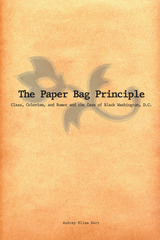 The Paper Bag Principle: Class, Colorism, and Rumor and the Case of Black Washington, D.C.
Audrey Elisa Kerr
University of Tennessee Press, 2006
“This is, to my knowledge, the first full-length treatment of complexion legends and myths, filling a major gap in the literature. . . . It treats controversial issues with great sensitivity and insight.” —Nancy Bonvillain, Simon’s Rock College of Bard
The Paper Bag Principle: Class, Colorism, and Rumor in the Case of Black Washington, D.C. considers the function of oral history in shaping community dynamics among African American residents of the nation’s capitol. The only attempt to document rumor and legends relating to complexion in Black communities,The Paper Bag Principle looks at the divide that has existed between the Black elite and the Black “folk.” While a few studies have dealt with complexion consciousness in Black communities, there has, to date, been no study that has catalogued how the belief systems of members of a Black community have influenced the shaping of its institutions, organizations, and neighborhoods. Audrey Kerr examines how these folk beliefs—exemplified by the infamous “paper bag tests”—inform color discrimination intraracially. Kerr argues that proximity to whiteness (in hue) and wealth have helped create two Black Washingtons and that the Black community, at various times in history, replicated “Jim Crowism” internally to create some standard of exceptionalism in education and social organization. Kerr further contends that within the nomenclature of African Americans, folklore represents a complex negotiation of racism written in ritual, legend, myth, folk poetry, and folk song that captures “boundary building” within African American communities. The Paper Bag Principle focuses on three objectives: to record lore related to the “paper bag principle” (the set of attitudes that granted blacks with light skin higher status in black communities); to investigate the impact that this “principle” has had on the development of Black community consciousness; and to link this material to power that results from proximity to whiteness. The Paper Bag Principle is sure to appeal to scholars and historians interested in African American studies, cultural studies, oral history, folklore, and ethnic and urban studies.
Audrey Kerr is associate professor of English at Southern Connecticut State University. Her articles have appeared in Quodilibet: The Journal of Christian Theology and Philosophy, the Journal of American Folklore, and the Rhetorical Society Quarterly.
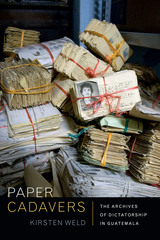 Paper Cadavers: The Archives of Dictatorship in Guatemala
Kirsten Weld
Duke University Press, 2014 In Paper Cadavers, an inside account of the astonishing discovery and rescue of Guatemala's secret police archives, Kirsten Weld probes the politics of memory, the wages of the Cold War, and the stakes of historical knowledge production. After Guatemala's bloody thirty-six years of civil war (1960–1996), silence and impunity reigned. That is, until 2005, when human rights investigators stumbled on the archives of the country's National Police, which, at 75 million pages, proved to be the largest trove of secret state records ever found in Latin America. The unearthing of the archives renewed fierce debates about history, memory, and justice. In Paper Cadavers, Weld explores Guatemala's struggles to manage this avalanche of evidence of past war crimes, providing a firsthand look at how postwar justice activists worked to reconfigure terror archives into implements of social change. Tracing the history of the police files as they were transformed from weapons of counterinsurgency into tools for post-conflict reckoning, Weld sheds light on the country's fraught transition from war to an uneasy peace, reflecting on how societies forget and remember political violence.
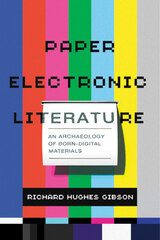 Paper Electronic Literature: An Archaeology of Born-Digital Materials
Richard Hughes Gibson
University of Massachusetts Press, 2021 The field of electronic literature has a familiar catchphrase, "You can't do it on paper." But the field has in fact never gone paperless. Reaching back to early experiments with digital writing in the mainframe era and then moving through the personal computer and Internet revolutions, this book traces the changing forms of paper on which e-lit artists have drawn, including continuous paper, documentation, disk sleeves, packaging, and even artists' books.
Paper Electronic Literature attests that digital literature's old media elements have much to teach us about the cultural and physical conditions in which we compute; the creativity that new media artists have shown in their dealings with old media; and the distinctively electronic issues that confront digital artists. Moving between avant-garde works and popular ones, fiction writing and poetry generation, Richard Hughes Gibson reveals the diverse ways in which paper has served as a component within electronic literature, particularly in facilitating interactive experiences for users. This important study develops a new critical paradigm for appreciating the multifaceted material innovation that has long marked digital literature.
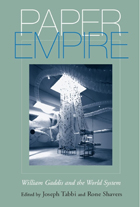 Paper Empire: William Gaddis and the World System
Edited by Joseph Tabbi and Rone Shavers
University of Alabama Press, 2007 Celebrates and illuminates the legacy of one of America’s most innovative and consequential 20th century novelists
In 2002, following the posthumous publication of William Gaddis’s collected nonfiction and his final novel and Jonathan Franzen’s lengthy attack on him in The New Yorker, a number of partisan articles appeared in support of Gaddis’s legacy. In a review in The London Review of Books, critic Hal Foster suggested a reason for disparate responses to Gaddis’s reputation: Gaddis’s unique hybridity, his ability to “write in the gap between two dispensations—between science and literature, theory and narrative, and—different orders of linguistic imagination.
Gaddis (1922-1998) is often cited as the link between literary modernism and postmodernism in the United States. His novels—The Recognitions, JR, Carpenter’s Gothic, and A Frolic of His Own—are notable in the ways that they often restrict themselves to the language and communication systems of the worlds he portrays. Issues of corporate finance, the American legal system, economics, simulation and authenticity, bureaucracy, transportation, and mass communication permeate his narratives in subject, setting, and method. The essays address subjects as diverse as cybernetics theory, the law, media theory, race and class, music, and the perils and benefits of globalization. The collection also contains a memoir by Gaddis’s son, an unpublished interview with Gaddis from just after the publication of JR, and an essay on the Gaddis archive, newly opened at Washington University in St. Louis.
The editors acknowledge that we live in an age of heightened global awareness. But as these essays testify, few American writers have illuminated as poignantly or incisively just how much the systemic forces of capitalism and mass communication have impacted individual lives and identity—imparting global dimensions to private pursuits and desires—than William Gaddis.
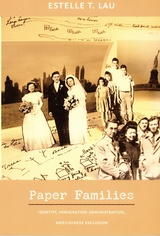 Paper Families: Identity, Immigration Administration, and Chinese Exclusion
Estelle T. Lau
Duke University Press, 2006 The Chinese Exclusion Act of 1882 made the Chinese the first immigrant group officially excluded from the United States. In Paper Families, Estelle T. Lau demonstrates how exclusion affected Chinese American communities and initiated the development of restrictive U.S. immigration policies and practices. Through the enforcement of the Exclusion Act and subsequent legislation, the U.S. immigration service developed new forms of record keeping and identification practices. Meanwhile, Chinese Americans took advantage of the system’s loophole: children of U.S. citizens were granted automatic eligibility for immigration. The result was an elaborate system of “paper families,” in which U.S. citizens of Chinese descent claimed fictive, or “paper,” children who could then use their kinship status as a basis for entry into the United States. This subterfuge necessitated the creation of “crib sheets” outlining genealogies and providing village maps and other information that could be used during immigration processing. Drawing on these documents as well as immigration case files, legislative materials, and transcripts of interviews and court proceedings, Lau reveals immigration as an interactive process. Chinese immigrants and their U.S. families were subject to regulation and surveillance, but they also manipulated and thwarted those regulations, forcing the U.S. government to adapt its practices and policies. Lau points out that the Exclusion Acts and the pseudo-familial structures that emerged in response have had lasting effects on Chinese American identity. She concludes with a look at exclusion’s legacy, including the Confession Program of the 1960s that coerced people into divulging the names of paper family members and efforts made by Chinese American communities to recover their lost family histories.
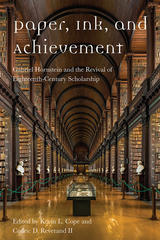 Paper, Ink, and Achievement: Gabriel Hornstein and the Revival of Eighteenth-Century Scholarship
Kevin L. Cope
Bucknell University Press, 2021 During his forty-two years as president of AMS Press, Gabriel Hornstein quietly sponsored and stimulated the revival of “long” eighteenth-century studies. Whether by reanimating long-running research publications; by creating scholarly journals; or by converting daring ideas into lauded books, “Gabe” initiated a golden age of Enlightenment scholarship. This understated publishing magnate created a global audience for a research specialty that many scholars dismissed as antiquarianism. Paper, Ink, and Achievement finds in the career of this impresario a vantage point on the modern study of the Enlightenment. An introduction discusses Hornstein’s life and achievements, revealing the breadth of his influence on our understanding of the early days of modernity. Three sets of essays open perspectives on the business of long-eighteenth-century studies: on the role of publishers, printers, and bibliophiles in manufacturing cultural legacies; on authors whose standing has been made or eclipsed by the book culture; and on literary modes that have defined, delimited, or directed Enlightenment studies.
Published by Bucknell University Press. Distributed worldwide by Rutgers University Press.
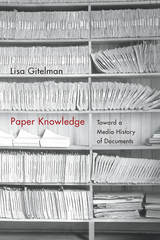 Paper Knowledge: Toward a Media History of Documents
Lisa Gitelman
Duke University Press, 2014 Paper Knowledge is a remarkable book about the mundane: the library card, the promissory note, the movie ticket, the PDF (Portable Document Format). It is a media history of the document. Drawing examples from the 1870s, the 1930s, the 1960s, and today, Lisa Gitelman thinks across the media that the document form has come to inhabit over the last 150 years, including letterpress printing, typing and carbon paper, mimeograph, microfilm, offset printing, photocopying, and scanning. Whether examining late nineteenth century commercial, or "job" printing, or the Xerox machine and the role of reproduction in our understanding of the document, Gitelman reveals a keen eye for vernacular uses of technology. She tells nuanced, anecdote-filled stories of the waning of old technologies and the emergence of new. Along the way, she discusses documentary matters such as the relation between twentieth-century technological innovation and the management of paper, and the interdependence of computer programming and documentation. Paper Knowledge is destined to set a new agenda for media studies.
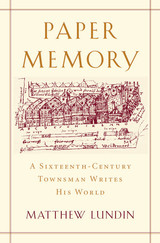 Paper Memory: A Sixteenth-Century Townsman Writes His World
Matthew Lundin
Harvard University Press, 2012 Paper Memory tells the story of one man’s mission to preserve for posterity the memory of everyday life in sixteenth-century Germany. Matthew Lundin takes us inside the mind of an undistinguished German burgher named Hermann Weinsberg, whose personal writings allow us to witness firsthand the great transformations of early modernity: the crisis of the Reformation, the rise of an urban middle class, and the information explosion of the print revolution. This sensitive, faithful portrait reveals a man who sought to make sense of the changes that were unsettling the foundations of his world.
Weinsberg’s decision to undertake the monumental task of documenting his life was astonishing, since he was neither prince nor bishop, but a Catholic lawyer from Cologne with no special claim to fame or fortune. Although he knew that his contemporaries would consider his work vain and foolish, he dutifully recorded the details of his existence, from descriptions of favorite meals to catalogs of his sleeping habits, from the gossip of quarreling neighbors to confessions of his private hopes, fears, and beliefs. More than fifty years—and thousands of pages—later, Weinsberg conferred his Gedenkbuch, or Memory Book, to his descendants, charging them to ensure its safekeeping, for without his careful chronicle, “it would be as if we had never been.”
Desperate to save his past from oblivion, Weinsberg hoped to write himself into the historical record. Paper Memory rescues this not-so-ordinary man from obscurity, as Lundin’s perceptive and graceful prose recovers his extraordinary story.
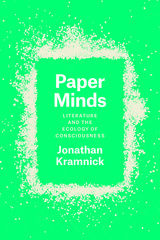 Paper Minds: Literature and the Ecology of Consciousness
Jonathan Kramnick
University of Chicago Press, 2018 How do poems and novels create a sense of mind? What does literary criticism say in conversation with other disciplines that addresses problems of consciousness? In Paper Minds, Jonathan Kramnick takes up these vital questions, exploring the relations between mind and environment, the literary forms that uncover such associations, and the various fields of study that work to illuminate them.
Opening with a discussion of how literary scholarship’s particular methods can both complement and remain in tension with corresponding methods particular to the sciences, Paper Minds then turns to a series of sharply defined case studies. Ranging from eighteenth-century poetry and haptic theories of vision, to fiction and contemporary problems of consciousness, to landscapes in which all matter is sentient, to cognitive science and the rise of the novel, Kramnick’s essays are united by a central thematic authority. This unified approach of these essays shows us what distinctive knowledge that literary texts and literary criticism can contribute to discussions of perceptual consciousness, created and natural environments, and skilled engagements with the world.
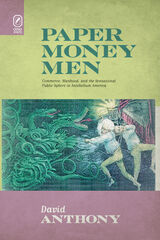 Paper Money Men: Commerce, Manhood, and the Sensational Public Sphere in Antebellum America
David Anthony
Ohio State University Press, 2009 Paper Money Men: Commerce, Manhood, and the Sensational Public Sphere in Antebellum America by David Anthony outlines the emergence of a “sensational public sphere” in antebellum America. It argues that this new representational space reflected and helped shape the intricate relationship between commerce and masculine sensibility in a period of dramatic economic upheaval. Looking at a variety of sensational media—from penny press newspapers and pulpy dime novels to the work of well-known writers such as Irving, Hawthorne, and Melville—this book counters the common critical notion that the period’s sensationalism addressed a primarily working-class audience. Instead, Paper Money Men shows how a wide variety of sensational media was in fact aimed principally at an emergent class of young professional men. “Paper money men” were caught in the transition from an older and more stable mercantilist economy to a panic-prone economic system centered on credit and speculation. And, Anthony argues, they found themselves reflected in the sensational public sphere, a fantasy space in which new models of professional manhood were repeatedly staged and negotiated. Compensatory in nature, these alternative models of manhood rejected fiscal security and property as markers of a stable selfhood, looking instead toward intangible factors such as emotion and race in an effort to forge a secure sense of manhood in an age of intense uncertainty.
Paper Pistol
Raphael Jenkins
University of Arkansas Press, 2026 Following in the footsteps of poets like Hanif Abdurraqib, John Murillo, and Robert Hayden, Raphael Jenkins’s Paper Pistol considers tenderness, heteronormativity, male friendship, grief, and the various violences implemented by and against Black men. Channeling a multitude of speakers, this collection explores Black fatherhood and “the totems we bequeath” to our young, whom the “hunter . . . see[s as] a field of bucks instead of a / field of boys. What marred your vision & made us look so killable?” With humor and vivid imagery, Paper Pistol ultimately champions familial care and poetry as the ultimate weaponry, even in the wake of generational violence. “If a pistol were made of paper,” the poet dreams. “If a piece / of paper were capable of killing. If a peace. If peace / were possible.”
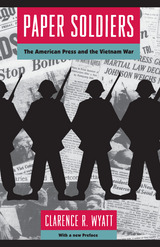 Paper Soldiers: The American Press and the Vietnam War
Clarence R. Wyatt
University of Chicago Press, 1994 Praised and condemned for its aggressive coverage of the Vietnam War, the American press has been both commended for breaking public support and bringing the war to an end and accused of misrepresenting the nature and progress of the war. While in-depth combat coverage and the instantaneous power of television were used to challenge the war, Clarence R. Wyatt demonstrates that, more often than not, the press reported official information, statements, and views. Examining the relationship between the press and the government, Wyatt looks at how difficult it was to obtain information outside official briefings, what sort of professional constraints the press worked under, and what happened when reporters chose not to "get on the team."
"Wyatt makes the Diem period in Saigon come to life—the primitive communications, the police crackdowns, the quarrels within the news organizations between the pessimists in Saigon and the optimists in Washington and New York."—Peter Braestrup, Washington Times
"An important, readable study of the Vietnam press corps—the most maligned group of journalists in modern American history. Clarence Wyatt's insights and assessments are particularly valuable now that the media is rapidly growing in its influence on domestic and international affairs."—Peter Arnett, CNN foreign correspondent
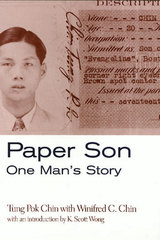 Paper Son: One Man's Story
Tung Chin
Temple University Press, 2000 In this remarkable memoir, Tung Pok Chin casts light on the largely hidden experience of those Chinese who immigrated to this country with false documents during the exclusion era. Although scholars have pieced together their history, first-person accounts are rare and fragmented; many of the so-called "Paper Sons" lived out their lives in silent fear of discovery. Chin's story speaks for the many Chinese who worked in urban laundries and restaurants, but it also introduces an unusually articulate man's perspective on becoming Chinese American.
Chin's story begins in the early 1930s, when he followed the example of his father and countless other Chinese who bought documents that falsely identified them as children of Chinese Americans. Arriving in Boston and later moving to New York City, he worked and lived in laundries. Chin was determined to fit into American life and dedicated himself to learning English. But he also became an active member of key organizations -- a church, the Chinese Hand Laundrymen's Alliance, and the Chinese Consolidated Benevolent Association -- that anchored him in the community. A self-reflective and expressive man, Chin wrote poetry commenting on life in China and the hardships of being an immigrant in the United States. His work was regularly published in the China Daily News and brought him to the attention of the FBI, then intent on ferreting out communists and illegal immigrants. His vigorous narrative speaks to the day-to-day anxieties of living as a Paper Son as well as the more universal immigrant experiences of raising a family in modest circumstances and bridging cultures.
Historian K. Scott Wong introduces Chin's memoir, discussing the limitations on immigration from China and what is known about Exclusion-era Chinese American communities. Set in historical context, Tung Pok Chin's unique story offers and engaging account of a twentieth-century Paper Son.
Paper Sons: A Memoir
Dickson Lam
Autumn House Press, 2018 Set in a public housing project in San Francisco, Lam's memoir explores his transformation from a teenage graffiti writer to a high school teacher working with troubled youth while navigating the secret violence in his immigrant's family's past.
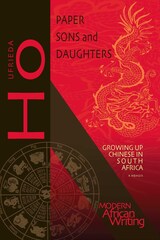 Paper Sons and Daughters: Growing up Chinese in South Africa
Ufrieda Ho
Ohio University Press, 2011 Ufrieda Ho’s compelling memoir describes with intimate detail what it was like to come of age in the marginalized Chinese community of Johannesburg during the apartheid era of the 1970s and 1980s. The Chinese were mostly ignored, as Ho describes it, relegated to certain neighborhoods and certain jobs, living in a kind of gray zone between the blacks and the whites. As long as they adhered to these rules, they were left alone. Ho describes the separate journeys her parents took before they knew one another, each leaving China and Hong Kong around the early 1960s, arriving in South Africa as illegal immigrants. Her father eventually became a so-called “fahfee man,” running a small-time numbers game in the black townships, one of the few opportunities available to him at that time. In loving detail, Ho describes her father’s work habits: the often mysterious selection of numbers at the kitchen table, the carefully-kept account ledgers, and especially the daily drives into the townships, where he conducted business on street corners from the seat of his car. Sometimes Ufrieda accompanied him on these township visits, offering her an illuminating perspective into a stratified society. Poignantly, it was on such a visit that her father—who is very much a central figure in Ho’s memoir—met with a tragic end. In many ways, life for the Chinese in South Africa was self-contained. Working hard, minding the rules, and avoiding confrontations, they were able to follow traditional Chinese ways. But for Ufrieda, who was born in South Africa, influences from the surrounding culture crept into her life, as did a political awakening. Paper Sons and Daughters is a wonderfully told family history that will resonate with anyone having an interest in the experiences of Chinese immigrants, or perhaps any immigrants, the world over.
 Paper Tangos
Julie Taylor
Duke University Press, 1998 Tango. A multidimensional expression of Argentine identity, one that speaks to that nation’s sense of disorientation, loss, and terror. Yet the tango mesmerizes dancers and audiences alike throughout the world. In Paper Tangos, Julie Taylor—a classically trained dancer and anthropologist—examines the poetics of the tango while describing her own quest to dance this most dramatic of paired dances. Taylor, born in the United States, has lived much of her adult life in Latin America. She has spent years studying the tango in Buenos Aires, dancing during and after the terror of military dictatorships. This book is at once an account of a life lived crossing the borders of two distinct and complex cultures and an exploration of the conflicting meanings of tango for women who love the poetry of its movement yet feel uneasy with the roles it bestows on the male and female dancers. Drawing parallels among the violences of the Argentine Junta, the play with power inherent in tango dancing, and her own experiences with violence both inside and outside the intriguing tango culture, Taylor weaves the line between engaging memoir and insightful cultural critique. Within the contexts of tango’s creative birth and contemporary presentations, this book welcomes us directly into the tango subculture and reveals the ways that personal, political, and historical violence operate in our lives. The book’s experimental design includes photographs on every page, which form a flip-book sequence of a tango. Not simply a book for tango dancers and fans, Paper Tangos will reward students of Latin American studies, cultural studies, anthropology, feminist studies, dance studies, and the art of critical memoir.
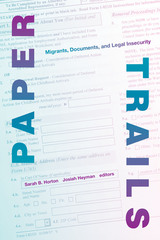 Paper Trails: Migrants, Documents, and Legal Insecurity
Sarah B. Horton and Josiah Heyman, editors
Duke University Press, 2020 Across the globe, states have long aimed to control the movement of people, identify their citizens, and restrict noncitizens' rights through official identification documents. Although states are now less likely to grant permanent legal status, they are increasingly issuing new temporary and provisional legal statuses to migrants. Meanwhile, the need for migrants to apply for frequent renewals subjects them to more intensive state surveillance. The contributors to Paper Trails examine how these new developments change migrants' relationship to state, local, and foreign bureaucracies. The contributors analyze, among other toics, immigration policies in the United Kingdom, the issuing of driver's licenses in Arizona and New Mexico, the Deferred Action for Childhood Arrivals program, and community know-your-rights campaigns. By demonstrating how migrants are inscribed into official bureaucratic systems through the issuance of identification documents, the contributors open up new ways to understand how states exert their power and how migrants must navigate new systems of governance.
Contributors. Bridget Anderson, Deborah A. Boehm, Susan Bibler Coutin, Ruth Gomberg-Muñoz, Sarah B. Horton, Josiah Heyman, Cecilia Menjívar, Juan Thomas Ordóñez, Doris Marie Provine, Nandita Sharma, Monica Varsanyi
The Paper Wasp
Teresa Cader
Northwestern University Press, 1998 In these poems, Teresa Cader undertakes three poetic explorations, all of them deriving from the book's opening image of a paper wasp spinning its white nest on a terrace in ancient China. The paper universe assembled by the wasp teems with both destructive and creative forces and will lead to the invention of paper and the power of writing. The book's first section explores the mystery of creativity; the second looks beneath the papery surface of the nest at the connection between physical and figurative birth. "Internal Exile," winner of the Poetry Society of America's 1997 George Bogin Memorial Award, forms the third section of the collection, addressing the invasion of the nest by destructive powers in the example of the life of Soviet writer Eugenia Ginzburg.
 The Paper Zoo: 500 Years of Animals in Art
Charlotte Sleigh
University of Chicago Press, 2017 As children, our first encounters with the world’s animals do not arise during expeditions through faraway jungles or on perilous mountain treks. Instead, we meet these creatures between the pages of a book, on the floor of an obliging library. Down through the centuries, illustrated books have served as our paper zoos, both documenting the world’s extraordinary wildlife in exquisite detail and revealing, in hindsight, how our relationship to and understanding of these animals have evolved over time.
In this stunning book, historian of science Charlotte Sleigh draws on the ultimate bibliophile’s menagerie—the collections of the British Library—to present a lavishly illustrated homage to this historical collaboration between art and science. Gathering together a breathtaking range of nature illustrations from manuscripts, prints, drawings, and rare printed books from across the world, Sleigh brings us face to face (or face to tentacle) with images of butterflies, beetles, and spiders, of shells, fish, and coral polyps. Organized into four themed sections—exotic, native, domestic, and paradoxical—the images introduce us to some of the world’s most renowned natural history illustrators, from John James Audubon to Mark Catesby and Ernst Haeckel, as well as to lesser-known artists. In her accompanying text, Sleigh traces the story of the art of natural history from the Renaissance through the great age of exploration and into the nineteenth century, offering insight into the changing connections between the natural and human worlds.
But the story does not end there. From caterpillars to crabs, langurs to dugongs, stick insects to Old English pigs; from the sinuous tail feathers of birds of paradise to the lime-green wings of New Zealand’s enormous flightless parrot, the kakapo; from the crenellated plates of a tortoise’s shell to imagined likenesses of unicorns, mermaids, and dinosaurs, the story continues in this book. It is a Paper Zoo for all time.
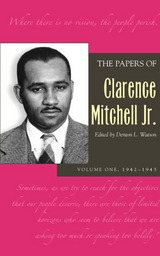 The Papers of Clarence Mitchell Jr., Volume I: 1942–1943
Clarence Mitchell Jr.
Ohio University Press, 2005 Clarence Mitchell Jr. was the driving force in the movement for passage of civil rights laws in America. The foundation for Mitchell’s struggle was laid during his tenure at the Fair Employment Practice Committee, where he led implementation of President Roosevelt’s policy barring racial discrimination in employment in the national defense and war industry programs. Mitchell’s FEPC reports and memoranda chart the beginning of the modern civil rights movement. The first two volumes of a projected five-volume documentary edition of The Papers of Clarence Mitchell Jr. illuminate the FEPC’s work as a federal affirmative-action agency and the government’s struggle to enforce the nation’s antidiscrimination policy in industry, federal agencies, and labor unions. Subsequent volumes will trace Mitchell’s successive enlistment of seven presidents in establishing and enforcing a permanent national nondiscrimination policy. Through his efforts, Congress passed the 1957, 1960, and 1964 Civil Rights Acts prohibiting discrimination in public accommodations, federal spending, and employment based on race, color, sex, and national origin; the 1965 Voting Rights Act; and the 1968 Fair Housing Act. Editor Denton L. Watson introduces and annotates Mitchell’s writings, providing context and insight for students and scholars of civil rights history, government, law, and sociology.
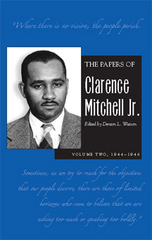 The Papers of Clarence Mitchell Jr., Volume II: 1944–1946
Clarence Mitchell Jr.
Ohio University Press, 2005 Clarence Mitchell Jr. was the driving force in the movement for passage of civil rights laws in America. The foundation for Mitchell’s struggle was laid during his tenure at the Fair Employment Practice Committee, where he led implementation of President Roosevelt’s policy barring racial discrimination in employment in the national defense and war industry programs. Mitchell’s FEPC reports and memoranda chart the beginning of the modern civil rights movement. The first two volumes of a projected five-volume documentary edition of The Papers of Clarence Mitchell Jr. illuminate the FEPC’s work as a federal affirmative-action agency and the government’s struggle to enforce the nation’s antidiscrimination policy in industry, federal agencies, and labor unions. Subsequent volumes will trace Mitchell’s successive enlistment of seven presidents in establishing and enforcing a permanent national nondiscrimination policy. Through his efforts, Congress passed the 1957, 1960, and 1964 Civil Rights Acts prohibiting discrimination in public accommodations, federal spending, and employment based on race, color, sex, and national origin; the 1965 Voting Rights Act; and the 1968 Fair Housing Act. Editor Denton L. Watson introduces and annotates Mitchell’s writings, providing context and insight for students and scholars of civil rights history, government, law, and sociology.
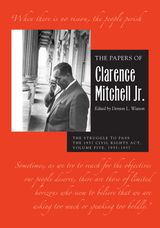 The Papers of Clarence Mitchell Jr., Volume V: The Struggle to Pass the 1957 Civil Rights Act, 1955–1958
Clarence Mitchell Jr.
Ohio University Press, 2021 Volume V of The Papers of Clarence Mitchell Jr. records the successful effort to pass the 1957 Civil Rights Act: the first federal civil rights legislation since 1875. Prior to the US Supreme Court’s landmark 1954 decision in Brown v. Board of Education, the NAACP had faced an impenetrable wall of opposition from southerners in Congress. Basing their assertions on the court’s 1896 “separate but equal” decision in Plessy v. Ferguson, legislators from the South maintained that their Jim Crow system was nondiscriminatory and thus constitutional. In their view, further civil rights laws were unnecessary. In ruling that legally mandated segregation of public schools was unconstitutional, the Brown decision demolished the southerners’ argument. Mitchell then launched the decisive stage of the struggle to pass modern civil rights laws. The passage of the Civil Rights Act of 1957 was the first comprehensive lobbying campaign by an organization dedicated to that purpose since Reconstruction. Coming on the heels of the Brown decision, the 1957 law was a turning point in the struggle to accord Black citizens full equality under the Constitution. The act’s passage, however, was nearly derailed in the Senate by southern opposition and Senator Strom Thurmond’s record-setting filibuster, which lasted more than twenty-four hours. Congress later weakened several provisions of the act but—crucially—it broke a psychological barrier to the legislative enactment of such measures. The Papers of Clarence Mitchell Jr. is a detailed record of the NAACP leader’s success in bringing the legislative branch together with the judicial and executive branches to provide civil rights protections during the twentieth century.
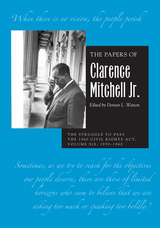 The Papers of Clarence Mitchell Jr., Volume VI: The Struggle to Pass the 1960 Civil Rights Act, 1959–1960
Clarence Mitchell Jr.
Ohio University Press, 2021 The Civil Rights Act of 1960 aimed to close loopholes in its 1957 predecessor that had allowed continued voter disenfranchisement for African Americans and for Mexicans in Texas. In early 1959, the newly seated Eighty-Sixth Congress had four major civil rights bills under consideration. Eventually consolidated into the 1960 Civil Rights Act, their purpose was to correct the weaknesses in the 1957 law. Mitchell’s papers from 1959 to 1960 show the extent to which congressional resistance to the passage of meaningful civil rights laws contributed to the lunch counter sit-ins in Greensboro, North Carolina, and to subsequent demonstrations. The papers reveal how the repercussions of these events affected the NAACP’s work in Washington and how, despite their dislike of demonstrations, NAACP officials used them to intensify the civil rights struggle. Among the act’s seven titles were provisions authorizing federal inspection of local voter registration rolls and penalties for anyone attempting to interfere with voters on the basis of race or color. The law extended the powers of the US Commission on Civil Rights and broadened the legal definition of the verb to vote to encompass all elements of the process: registering, casting a ballot, and properly counting that ballot. Ultimately, Mitchell considered the 1960 act unsuccessful because Congress had failed to include key amendments that would have further strengthened the 1957 act. In the House, representatives used parliamentary tactics to stall employment protections, school desegregation, poll-tax elimination, and other meaningful civil rights reforms. The fight would continue. The Papers of Clarence Mitchell Jr. series is a detailed record of the NAACP leader’s success in bringing the legislative branch together with the judicial and executive branches to provide civil rights protections during the twentieth century.
The Papers of James Madison, Volume 5: 1 August-31 December 1782
James Madison
University of Chicago Press, 1967 During the last five months of 1782, Madison continued to advocate close co-operation with France. To assure the durability of the Confederation, he endeavored to induce delinquent states to pay their financial quotas, and advocated adoption of a proposed impost amendment.
The Papers of James Madison, Volume 6: 1 January 1783-30 April 1783
James Madison
University of Chicago Press, 1969 During the first four months of 1783, when the United States was neither wholly at war nor wholly at peace, a cluster of difficult problems confronted James Madison and his fellow delegates in Congress. Faced with the interlocking issues of finance, demobilization, and foreign affairs, Congress held many contentious sessions early in the year. The sparseness of the official journal enhances the value of the notes on debates, recorded by Madison, for illuminating the discussions.
 The Papers of James Madison, Volume 7: 3 May 1783-29 February 1784
James Madison
University of Chicago Press, 1971 During the first six of the ten months covered by this volume, Madison completed his initial period of service as a delegate from Virginia in the Congress of the Confederation. His correspondence with Thomas Jefferson and Edmund Randolph, as well as his other papers, reveal the mounting difficulties besetting him and his fellow nationalists who sought to preserve a union among the thirteen states. The major problems, which included demobilizing the discontented army, obtaining public revenue, funding the Confederation debt, pressing the British to evacuate their military posts, enforcing the preliminary articles of peace, creating a public domain in the West, locating a provisional or permanent capital of the Confederation, and negotiating commercial treaties with European powers, fostered sectionalism, factionalism, and an emphasis upon state sovereignty. As a prominent member of Congress, Madison sought legislative and constitutional remedies for this menacing divisiveness. To him the maintenence of the new nation embodied "the greatest trust ever confided to a political society," for it was "the last and fairest experiment in favor of the rights of human nature."
Early in December, after an absence of over three years, Madison returned to Montpelier, his father's estate. There during the winter of 1783-1784, he studied law, renewed old friendships, and canvassed the residents of Orange County for support of his candidacy for election to the House of Delegates of the Virginia General Assembly.
maintenance
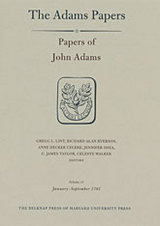 Papers of John Adams
Edited by Gregg L. Lint, Margaret A. Hogan, C. James Taylor, Anne Decker Cecere, Richard Alan Ryerson, Jennifer Shea, and Celeste Walker
Harvard University Press, 1977 In mid-March 1781, John Adams received his commission and instructions as minister to the Netherlands and embarked on the boldest initiative of his diplomatic career. Disappointed by the lack of interest shown by Dutch investors in his efforts to raise a loan for the United States, Adams changed his tactics, and in a memorial made a forthright appeal to the States General of the Netherlands for immediate recognition of the United States. Published in Dutch, English, and French, it offered all of Europe a radical vision of the ordinary citizen’s role in determining political events. In this volume, for the first time, the circumstances and reasoning behind Adams’s bold moves in the spring of 1781 are presented in full.
In July the French court summoned Adams, the only American in Europe empowered to negotiate an Anglo–American peace, to Paris for consultations regarding an offer made by Austria and Russia to mediate the Anglo–French war. In his correspondence with France’s foreign minister, the Comte de Vergennes, Adams passionately insisted that the United States was fully and unambiguously independent and sovereign and must be recognized as such by Great Britain before any negotiations took place. This volume shows John Adams to be a determined and resourceful diplomat, unafraid to go beyond the bounds of traditional diplomacy to implement his vision of American foreign policy.
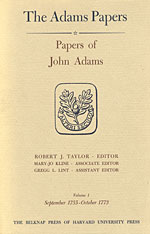 Papers of John Adams
John Adams
Harvard University Press, 1977 No family in three generations has contributed so much to American history as the Adamses. John Adams, John Quincy Adams, and Charles Francis Adams, despite periods of doubt, knew that history, if not their contemporaries, would recognize their accomplishments. When the Adams Papers series is complete, the writings of these three statesmen will have been examined thoroughly.
Aside from the Legal Papers of John Adams, published in 1965, these two volumes are the first in Series III: General Correspondence and Other Papers of the Adams Statesmen. Volumes 1 and 2 of the Papers of John Adams include letters to and from friends and colleagues, reports of committees on which he served, his polemical writings, published and unpublished, and state papers to which he made a contribution.
All of Adams’s newspaper writings, including “A Dissertation on the Canon and the Feudal Law,” are in these two volumes. In addition to being a condemnation of the Stamp Act, the “Dissertation” is shown to be one of the building blocks of the theory of a commonwealth of independent states under the king, which reaches complete statement in the Novanglus letters. For the first time, all thirteen of these letters appear in full with annotation.
The period September 1755 to April 1775 covers Adams’s public service in Braintree and Boston town meetings, the Massachusetts House of Representatives, the First Continental Congress, and the First Provincial Congress of Massachusetts. During this time his political future was being shaped by circumstances not always of his choosing. He hesitated at first at the threshold of a public career, political ambition in conflict with concern for his family’s well-being. But as the confrontation with Great Britain sharpened, the crisis became acute; no choice remained. For Adams there was no shirking the path of duty.
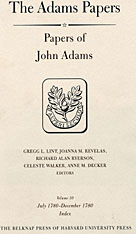 Papers of John Adams
John Adams
Harvard University Press, 1977 On the last day of December 1780, John Adams wrote that he had just spent “the most anxious and mortifying Year of my whole Life.” He had resided first at Paris, then at Amsterdam, attempting, without success, to open Anglo–American peace negotiations and to raise a Dutch loan. In volumes 9 and 10 of the Papers of John Adams, over 600 letters and documents that Adams sent to and received from numerous correspondents in Europe and America provide an unparalleled view of Adams’s diplomacy and a wealth of detail on the world in which he lived.
These volumes chronicle Adams’s efforts to convince the British people and their leaders that Britain’s economic survival demanded an immediate peace; his “snarling growling” debate with the French foreign minister, the Comte de Vergennes, over the proper Franco–American relationship; and his struggle to obtain a loan in the Netherlands, where policies were dictated by Mammon rather than republican virtue. Adams’s writings, diplomatic dispatches, and personal correspondence all make clear the scope of his intelligence gathering and his propaganda efforts in the British, French, and Dutch press. The letters reflect his interest in Bordeaux wines, the fate of Massachusetts Constitution that he had drafted in 1779, and political developments in Philadelphia, Boston, London, and St. Petersburg. The volumes leave no doubt as to John Adams’s unwavering commitment to the American cause. Even in this most difficult year, he believed the revolution in America to be “the greatest that ever took Place among Men.” He felt honored to serve a new nation where “the Wisdom and not the Man is attended to,” whose citizens were fighting a “People’s War” from which the United States would inevitably emerge victorious to take its rightful place on the world stage.
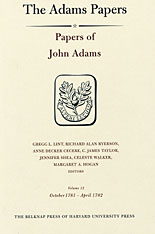 Papers of John Adams
Edited by Gregg L. Lint, Margaret A. Hogan, C. James Taylor, Anne Decker Cecere, Richard Alan Ryerson, Jennifer Shea, and Celeste Walker
Harvard University Press, 1977 The American victory at Yorktown in October 1781 and the fall of Lord North’s ministry in March 1782 opened the possibility that John Adams might soon be involved in negotiations to end the war for American independence. To prepare for the occasion, Adams and Benjamin Franklin discussed in their letters the fundamentals for peace. Adams made it clear to the British government that there would be no negotiations without British recognition of the United States as independent and sovereign.
This volume chronicles Adams’s efforts, against great odds, to achieve formal recognition of the new United States. The documents include his vigorous response to criticism of his seemingly unorthodox methods by those who would have preferred that he pursue a different course, including Congress’s newly appointed secretary for foreign affairs, Robert R. Livingston.
In April 1782 the Netherlands recognized the United States and admitted John Adams as its minister. For Adams it was “the most Signal Epocha, in the History of a Century,” and he would forever see it as the foremost achievement of his diplomatic career. The volume ends with Adams, at long last a full-fledged member of the diplomatic corps, describing his reception by the States General and his audiences with the Prince and Princess of Orange.
 Papers of John Adams
John Adams
Harvard University Press, 1977 "You may well Suppose that I was the Focus of all Eyes," John Adams wrote on 2 June 1785 of his first audience with George III, which formally inaugurated the post of American minister to Great Britain. Eager to restore "the old good Nature and the old good Humour" between the two nations, Adams spent the following months establishing the U.S. legation at No. 8 Grosvenor Square. For Adams, it was a period of multiple responsibilities and mixed success. He remained minister to the Netherlands and one of the joint commissioners charged with negotiating commercial treaties with the nations of Europe and North Africa--sensitive duties that occasionally called for Adams to encode his correspondence with the aid of his new secretary and future son-in-law, Col. William Stephens Smith.
Rebuffed by the British ministry in his mission to enforce the peace treaty of 1783 and renew Anglo-American commerce, Adams identified and achieved other goals. He preserved American credit despite the bankruptcy of a Dutch banking house that handled U.S. loans, petitioned for the release of impressed sailors, marked the ratification of the Prussian-American treaty, championed the needs of the American Episcopal Church, and laid the groundwork for negotiations with the Barbary States. His attention was not confined solely to foreign affairs. John Adams's letters from London, laced with his trademark candor, demonstrate his ripening Federalist view of the new American government's vulnerability and promise.
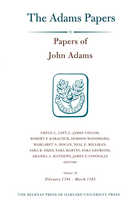 Papers of John Adams
John Adams
Harvard University Press, 1977 “Once more after an Interruption of ten Years, I pronounce myself a happy Man, and pray Heaven to continue me so.” Thus wrote John Adams in late August 1784 after the arrival in Europe of his wife Abigail and daughter Nabby. Adams and his family were living together in the pleasant Paris suburb of Auteuil. There Adams, with Benjamin Franklin and Thomas Jefferson, formed a joint commission to conclude commercial treaties with the nations of Europe and North Africa. For the first time since he had left America in 1778 on his first diplomatic mission, Adams was no longer engaged in “militia diplomacy.”
Volume 16 of the Papers of John Adams chronicles fourteen months of Adams’ diplomatic career. As minister to the Netherlands he raised a new Dutch loan to save America from financial ruin. As joint commissioner he negotiated a commercial treaty with Prussia, proposed similar treaties with other European nations, and prepared to negotiate with the Barbary states. The commissioners also sought to resolve Anglo-American differences left over from the peace negotiations and arising from the two nations’ burgeoning trade. Volume 16 thus forms a prelude to the next phase of John Adams’ diplomatic career, for his February 1785 appointment as minister to the Court of St. James meant that the management of Anglo-American relations would be his responsibility alone.
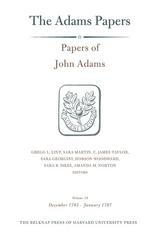 Papers of John Adams
Edited by Gregg L. Lint, Sara Martin, C. James Taylor, Sara Georgini, Hobson Woodward, Sara B. Sikes, Amanda M. Norton
Harvard University Press, 2016 Volume 18 is the final volume of the Papers of John Adams wholly devoted to Adams’ diplomatic career. It chronicles fourteen months of his tenure as minister to Great Britain and his joint commission, with Thomas Jefferson, to negotiate treaties with Europe and North Africa. With respect to Britain, Adams found it impossible to do “any Thing Satisfactory, with this Nation,” and the volume ends with his decision to resign his posts. His diplomatic efforts, Adams thought, were too much akin to “making brick without straw.”
John Adams’ ministerial efforts in London were disappointing, but other aspects of his life were not. He and Jefferson failed to finalize treaties with Portugal and Great Britain, but they did, through agent Thomas Barclay, conclude a treaty with Morocco. Barclay’s letters are the earliest and most evocative American accounts of that region. Adams witnessed the marriage of his daughter, Abigail 2d, to William Stephens Smith, promoted the ordination of American Episcopal bishops, and toured the English countryside, first with Thomas Jefferson and then with his family. Most significant perhaps was the publication of the first volume of Adams’ Defence of the Constitutions of Government of the United States of America. This work is often attributed to concern over Shays’ Rebellion, of which Adams knew little when he began drafting. In fact, it was Adams’ summer 1786 visit to the Netherlands that provoked his work. There, Dutch Patriot friends, involved in their own revolution, expressed interest in seeing “upon paper” his remarks “respecting Government.”
 Papers of John Adams
John Adams
Harvard University Press, 1977 As the American colonies grew more restive, and a break with the mother country ceased to be unthinkable, John Adams was forced to spend less and less time with his beloved family. Although burdened by ever-expanding responsibilities in the Second Continental Congress, he found time for an amazing amount of correspondence. The majority of his letters were written to secure the facts that would enable this duty-ridden man to decide and act effectively on the issues being debated. Military affairs, a source of never-ending concern, provide some of the most fascinating subjects, including several accounts of the Battle of Bunker Hill, assessments of various high-ranking officers, and complaints about the behavior of the riflemen sent from three states southward to aid the Massachusetts troops.
The heated question of pay for soldiers and officers strained relations between New England and southern colonies early. By refusing to confront the issue of slavery when it was raised by several correspondents, Adams sought to avoid exacerbating regional sensitivities further. When the question of independent governments for former colonies arose, at the request of several colleagues Adams sketched a model, Thoughts on Government, three versions of which are included here.
His optimistic republicanism, however, was balanced by fear that a “Spirit of Commerce” would undermine the virtue requisite for republican institutions. Adams' important committee work included his draft in 1775 of rules for regulation of the Continental Navy, which have remained the basis for the governance of the United States Navy down into our own time, and his plan of treaties, which would guide American diplomats up to World War II. Both were derivative, but he skillfully adapted his materials to American needs and circumstances. These volumes reflect the spirit of those tumultuous years when the leaders emerging in America confronted each other, and exciting new ideas, as they tried to resolve the issues of a revolutionary period.
 Papers of John Adams
Edited by Gregg L. Lint, Margaret A. Hogan, C. James Taylor, Hobson Woodward, Mary T. Claffey, Sara B. Sikes, and Judith S. Graham
Harvard University Press, 1977 John Adams reached Paris on October 26, 1782, for the final act of the American Revolution: the peace treaty. This volume chronicles his role in the negotiations and the decision to conclude a peace separate from France. Determined that the United States pursue an independent foreign policy, Adams's letters criticized Congress's naive confidence in France. But in April 1783, frustrated at delays over the final treaty and at real and imagined slights from Congress and Benjamin Franklin, Adams believed the crux of the problem was Franklin's moral bankruptcy and servile Francophilia in the service of a duplicitous Comte de Vergennes.
Volume 14 covers more than just the peace negotiations. As American minister to the Netherlands, Adams managed the distribution of funds from the Dutch-American loan. Always an astute observer, he commented on the fall of the Shelburne ministry and its replacement by the Fox-North coalition, the future of the Anglo-American relationship, and the prospects for the United States in the post-revolutionary world. But he was also an anxious father, craving news of John Quincy Adams's slow journey from St. Petersburg to The Hague. By May 1783, Adams was tired of Europe, but resigned to remaining until his work was done.
 Papers of John Adams
John Adams
Harvard University Press, 1977 These volumes document John Adams’s thinking and actions during the final years of his congressional service and take him through his first five months as a Commissioner in France in association with Benjamin Franklin and Arthur Lee.
While Adams was still in Philadelphia, military matters continued to he his major concern. Most demanding was his presidency of the Board of War, which took up his “whole Time, every Morning and Evening.” In general, though, the documents and reports of his conduct reveal a commitment to a national outlook. Congress should be a national legislature, and personal, state, and regional rivalries should give way to concern for the greater good—these were his deeply held convictions.
When chosen a Commissioner to France, Adams was reluctant to go. But duty and the honor of the position, along with the encouragement of an understanding and self-sacrificing wife, persuaded him to accept. With son John Quincy for a companion, he crossed the Atlantic to a new career. His initiation into the complexities of diplomacy brought a growing awareness of European affairs and the problems facing the new nation in the diplomatic arena. Letters deal with such varied topics as the supervision of American commercial agents in French ports, regulation of privateers, settlement of disputes between crews and officers, negotiation of loans, and help for American prisoners in England. Personal letters run the gamut from Adams’s views on the proper conduct of American diplomacy to strangers’ pleas for aid in locating relatives in America. Contrary to the usual impression of Adams as little more than a clerk for the Commission, evidence shows that he was its chief administrator.
Acclimation to living abroad among diplomats did not stifle Adams’s yearning for the simplicities of private life in the midst of his family. Yet as the important and interesting documents of this volume show, the groundwork was being laid for his even more significant role in diplomacy.
 Papers of John Adams
Adams FamilyEdited by Gregg L. Lint, C. James Taylor, Robert F. Karachuk, Hobson Woodward, Margaret A. Hogan, Sara B. Sikes, Mary T. Claffey, and Karen N. Barzilay
Harvard University Press, 1977 On September 3, 1783, John Adams, Benjamin Franklin, and John Jay signed the definitive Anglo-American peace treaty. Adams and his colleagues strived to establish a viable relationship between the new nation and its largest trading partner but were stymied by rising British anti-Americanism.
Adams’ diplomatic efforts were also complicated by domestic turmoil. Americans, in a rehearsal for the later Federalist-Antifederalist conflict over the United States Constitution, were debating the proper relationship between the central government and the states. Adams, a Federalist as early as 1783, argued persuasively for a government that honored its treaties and paid its foreign debts. But when bills far exceeding the funds available for their redemption were sent to Europe, he was forced to undertake a dangerous winter journey to the Netherlands to raise a new loan and save the United States from financial disaster.
None of the founding fathers equals the candor of John Adams’ observations of his eighteenth-century world. His letters, always interesting, reveal with absolute clarity Adams’ positions on the personalities and issues of his times.
 Papers of John Adams
John Adams
Harvard University Press, 1977 These volumes provide an unparalleled account of the conduct of American diplomacy in the early years of the republic, while the war with Britain continued and after the treaty of alliance with France was signed. John Adams served for ten months as a commissioner to France. Though he was the newest member of the three-man commission, he was its chief administrator, handling most of its correspondence, and his papers are the first full documentary record of the commission ever published. They provide a wealth of detail on every aspect of diplomacy, from negotiations with ministers of state to the arranging of prisoner exchanges.
The documents throw new light on Adams’s relations with his fellow commissioners, Benjamin Franklin and Arthur Lee. Historians have depicted Adams as hostile to Franklin and supportive of Lee, but the record shows that he found himself increasingly in disagreement with Lee, while working harmoniously with Franklin from the outset. Moreover, after the commission was disbanded in February 1779 and Franklin was appointed Minister to France—a move Adams had advocated—he undertook an important mission at Franklin’s behest. It is now clear that the rift that developed between the two statesmen did not begin until after Adams’s return to Paris in 1780.
Legal and constitutional scholars will find Volume 8 of particular interest. The Massachusetts Constitution of 1780, drafted by John Adams in 1779, served as a crucial source for the Constitution of the United States; today it is the oldest written constitution in the world still in effect. The earliest surviving version of Adams’s text, the Report of a Constitution for the Commonwealth of Massachusetts, is here published with full annotation for the first time. It is John Adams’s most enduring constitutional work.
 Papers of John Adams
John Adams
Harvard University Press, 1977 “Huzza for the new World and farewell to the Old One,” John Adams wrote in late 1787, wrapping up a decade’s worth of diplomatic service in Europe. Volume 19 of the Papers of John Adams chronicles Adams’s last duties in London and The Hague. In the twenty-eight months documented here, he petitioned the British ministry to halt impressment of American sailors, toured the English countryside, and observed parliamentary politics. Adams salvaged U.S. credit by contracting two new Dutch loans amid the political chaos triggered by William V’s resurgence. Correspondents like Thomas Jefferson and the Marquis de Lafayette mulled over the Anglo–American trade war that followed the Revolution and reported on the French Assembly of Notables—topics that Adams commented on with trademark candor. He wrote the final two volumes of his work, A Defence of the Constitutions of Government of the United States of America.
Adams yearned to return home and see the American republic take shape. “For a Man who has been thirty Years rolling like a stone,” Adams wrote, the choice was whether to “set down in private Life to his Plough; or push into turbulent scenes of Sedition and Tumult; whether be sent to Congress, or a Convention or God knows what.” Back on his native soil of Massachusetts in June 1788, Adams settled into rural retirement with wife Abigail and watched the U.S. Constitution’s ratification evolve. By volume’s end, John Adams again resumes public life, ready to serve as America’s first vice president.
 Papers of John Adams
John Adams
Harvard University Press, 1977 John Adams’s shaping of the vice presidency dominates this volume of the Papers of John Adams, which chronicles a formative era in American government spanning June 1789 to February 1791. As the first federal Congress struggled to interpret the US Constitution and implement a new economic framework, Adams held fast to federalist principles and staked out boundaries for his executive powers. Meeting in New York City, Adams and his colleagues warred over how to collect revenue and where to locate the federal seat. They established and staffed the departments of state, treasury, and war. Adams focused on presiding over the Senate, where he broke several ties. Enduring the daily grind of politics, he lauded the “National Spirit” of his fellow citizens and pledged to continue laboring for the needs of the American people. “If I did not love them now, I would not Serve them another hour—for I very well know that Vexation and Chagrine, must be my Portion, every moment I shall continue in public Life,” Adams wrote. He plunged back into writing, using his Discourses on Davila to synthesize national progress with republican history. Whether or not the union would hold, as regional interests impeded congressional action, remained Adams’s chief concern. “There is every Evidence of good Intentions on all sides but there are too many Symptoms of old Colonial Habits: and too few, of great national Views,” he observed. Once again, John Adams’s frank letters reveal firsthand the labor of nation-building in an age of constitutions.
 Papers of John Adams
John Adams
Harvard University Press, 1977 Vice President John Adams and the US government faced a turbulent world of rebellion in this volume of the Papers of John Adams, which chronicles the period from March 1791 to January 1797. The grim shadow of the French Revolution and the whirlwind of a massive European war left political leaders like Adams struggling to uphold the young nation’s neutrality. “I Suffer inexpressible Pains, from the bloody feats of War and Still more from those of Party Passions,” he observed. With the federal system newly in place, fresh challenges crept in on all sides. Adams and his colleagues sought to bolster the government against the effects of the Whiskey Rebellion, a seething partisan press, a brutal yellow fever epidemic in Philadelphia, and violent clashes with Native peoples on the Ohio frontier. Working with George Washington and an increasingly fractious cabinet, Adams approached a set of issues that defined US foreign policy for decades to come, including the negotiation, ratification, and funding of the controversial Jay Treaty, as well as the awkward cultivation of ties with France. Revealing exchanges to Adams from son John Quincy, a junior statesman who sent rich reports from war-torn Europe, underline the family’s enduring commitment to public service. Pausing on the cusp of his presidency, John Adams amplified his lifelong dedication to sustaining democracy, amid bouts of internal and external crisis: “I am happy that it has fallen to my share to do some thing towards setting the Machine in motion,” he wrote.
 Papers of John Adams
Edited by Gregg L. Lint, Margaret A. Hogan, C. James Taylor, Jessie May Rodrique, Mary T. Claffey, and Hobson Woodward
Harvard University Press, 1977 A new chapter in John Adams's diplomatic career opened when the Dutch recognized the United States in April 1782. Operating from the recently purchased American legation at The Hague, Adams focused his energies on raising a much needed loan from Dutch bankers and negotiating a Dutch-American commercial treaty. This volume chronicles Adams's efforts to achieve these objectives, but it also provides an unparalleled view of eighteenth-century American diplomacy on the eve of a peace settlement ending the eight-year war of the American Revolution.
John Adams was a shrewd observer of the political and diplomatic world in which he functioned and his comments on events and personalities remain the most candid and revealing of any American in Europe. His correspondence traces the complex negotiations necessary to raise a Dutch loan and throws new light on his conclusion of a treaty of amity and commerce with the Netherlands, achievements of which he was most proud. Events in England and elsewhere in Europe also provided grist for his pen. Would the establishment in July of a new ministry under the earl of Shelburne hinder or advance the cause of peace? That question bedeviled Adams and his correspondents for the fate of the new nation literally rode on its answer. The volume ends with Adams's triumphal departure from The Hague to face new challenges at Paris as one of the American commissioners to negotiate an Anglo-American peace treaty.
 Papers of John Adams
John Adams
Harvard University Press, 1977 Entering the presidency in full service to the American people, John Adams vowed: “Their Confidence, which has been the Chief Consolation of my Life, is too prescious and Sacred a deposit ever to be considered lightly.” This volume of the Papers of John Adams charts the period from February 1797 to February 1798, exploring the United States’ diplomatic rupture with France and the Adams administration’s pivot toward the Quasi-War. Adams spent his first year in office struggling to uphold a form of neutrality that would shield American shipping and commerce from France’s mounting attacks. The US government labored to shift money and resources for military preparedness. “I should hold myself guilty of a neglect of Duty, if I forebore to recommend that We Should make every exertion to protect our Commerce, and to place our Country in a Suitable posture of defence,” he wrote. Adams kept careful watch over imperial tensions on the western frontiers, where Spain, France, Great Britain, Native nations, and the United States wrestled for local control. The second president faced a resurgence of yellow fever in Philadelphia, public debates in the press about his abilities, and an ambitious cabinet. From the opening moments of his inauguration to his headlong rush to heal the United States’ relations with France, this volume reveals how John Adams evolved the American presidency.
The Papers of Robert Morris, 1781–1784, Vol. 9
Robert Morris
University of Pittsburgh Press, 1999 Although Robert Morris (1734-1806), "the Financier of the American Revolution," was a signer of the Declaration of Independence, the Articles of Confederation, and the Constitution, a powerful committee chairman in the Continental Congress, an important figure in Pennsylvania politics, and perhaps the most prominent businessman of his day, he is today least known of the great national leaders of the Revolutionary era.This oversight is being rectified by this definitive publication project that transcribes and carefully annotates the Office of Finance diary, correspondence, and other official papers written by Morris during his administration as superintendent of finance from 1781 to 1784.
The Papers of Robert Morris, 1781–1784, Volume 1
Robert Morris
University of Pittsburgh Press, 1973 Although Robert Morris (1734-1806), "the Financier of the American Revolution," was a signer of the Declaration of Independence, the Articles of Confederation, and the Constitution, a powerful committee chairman in the Continental Congress, an important figure in Pennsylvania politics, and perhaps the most prominent businessman of his day, he is today least known of the great national leaders of the Revolutionary era.This oversight is being rectified by this definitive publication project that transcribes and carefully annotates the Office of Finance diary, correspondence, and other official papers written by Morris during his administration as superintendent of finance from 1781 to 1784.
The Papers Of Robert Morris, 1781-1784, Volume 2
Robert Morris
University of Pittsburgh Press, 1975 Although Robert Morris (1734-1806), "the Financier of the American Revolution," was a signer of the Declaration of Independence, the Articles of Confederation, and the Constitution, a powerful committee chairman in the Continental Congress, an important figure in Pennsylvania politics, and perhaps the most prominent businessman of his day, he is today least known of the great national leaders of the Revolutionary era.This oversight is being rectified by this definitive publication project that transcribes and carefully annotates the Office of Finance diary, correspondence, and other official papers written by Morris during his administration as superintendent of finance from 1781 to 1784.
The Papers of Robert Morris, 1781–1784, Volume 3
Robert Morris
University of Pittsburgh Press, 1977 Although Robert Morris (1734-1806), "the Financier of the American Revolution," was a signer of the Declaration of Independence, the Articles of Confederation, and the Constitution, a powerful committee chairman in the Continental Congress, an important figure in Pennsylvania politics, and perhaps the most prominent businessman of his day, he is today least known of the great national leaders of the Revolutionary era.This oversight is being rectified by this definitive publication project that transcribes and carefully annotates the Office of Finance diary, correspondence, and other official papers written by Morris during his administration as superintendent of finance from 1781 to 1784.
The Papers of Robert Morris, 1781–1784, Volume 4
Robert Morris
University of Pittsburgh Press, 1978 Although Robert Morris (1734-1806), "the Financier of the American Revolution," was a signer of the Declaration of Independence, the Articles of Confederation, and the Constitution, a powerful committee chairman in the Continental Congress, an important figure in Pennsylvania politics, and perhaps the most prominent businessman of his day, he is today least known of the great national leaders of the Revolutionary era.This oversight is being rectified by this definitive publication project that transcribes and carefully annotates the Office of Finance diary, correspondence, and other official papers written by Morris during his administration as superintendent of finance from 1781 to 1784.
The Papers of Robert Morris, 1781–1784, Volume 5
Robert Morris
University of Pittsburgh Press, 1980 Although Robert Morris (1734-1806), "the Financier of the American Revolution," was a signer of the Declaration of Independence, the Articles of Confederation, and the Constitution, a powerful committee chairman in the Continental Congress, an important figure in Pennsylvania politics, and perhaps the most prominent businessman of his day, he is today least known of the great national leaders of the Revolutionary era.This oversight is being rectified by this definitive publication project that transcribes and carefully annotates the Office of Finance diary, correspondence, and other official papers written by Morris during his administration as superintendent of finance from 1781 to 1784.
The Papers of Robert Morris, 1781–1784, Volume 6
Robert Morris
University of Pittsburgh Press, 1984 Although Robert Morris (1734-1806), "the Financier of the American Revolution," was a signer of the Declaration of Independence, the Articles of Confederation, and the Constitution, a powerful committee chairman in the Continental Congress, an important figure in Pennsylvania politics, and perhaps the most prominent businessman of his day, he is today least known of the great national leaders of the Revolutionary era.This oversight is being rectified by this definitive publication project that transcribes and carefully annotates the Office of Finance diary, correspondence, and other official papers written by Morris during his administration as superintendent of finance from 1781 to 1784.
The Papers of Robert Morris, 1781–1784, Volume 7
Robert Morris
University of Pittsburgh Press, 1989 Although Robert Morris (1734-1806), "the Financier of the American Revolution," was a signer of the Declaration of Independence, the Articles of Confederation, and the Constitution, a powerful committee chairman in the Continental Congress, an important figure in Pennsylvania politics, and perhaps the most prominent businessman of his day, he is today least known of the great national leaders of the Revolutionary era.This oversight is being rectified by this definitive publication project that transcribes and carefully annotates the Office of Finance diary, correspondence, and other official papers written by Morris during his administration as superintendent of finance from 1781 to 1784.
The Papers of Robert Morris, 1781–1784, Volume 8
Robert Morris
University of Pittsburgh Press, 1996 Although Robert Morris (1734-1806), "the Financier of the American Revolution," was a signer of the Declaration of Independence, the Articles of Confederation, and the Constitution, a powerful committee chairman in the Continental Congress, an important figure in Pennsylvania politics, and perhaps the most prominent businessman of his day, he is today least known of the great national leaders of the Revolutionary era.This oversight is being rectified by this definitive publication project that transcribes and carefully annotates the Office of Finance diary, correspondence, and other official papers written by Morris during his administration as superintendent of finance from 1781 to 1784.
The Papers Of Thaddeus Stevens Volume 1: January 1814–March 1865
Thaddeus Stevens
University of Pittsburgh Press, 1997
Hailed as “the most important congressman in the House of Representatives during the Civil War” and still honored in Pennsylvania as the father of its public school system, Thaddeus Stevens grappled in his day with many of the issues that confront us today: racial and economic equality, affirmative action, and equal access to education.
Volume one of the projected two-volume edition of The Papers of Thaddeus Stevens covers Steven’s political career from his Vermont youth to the end of the Civil War. It includes letters and speeches from his early days as a Gettysburg lawyer and as a representative in the Pennsylvania assembly through his antislavery efforts to the 1865 passage of the Thirteenth Amendment, freeing all slaves.
The Papers Of Thaddeus Stevens Volume 2: April 1865-August 1868
Thaddeus Stevens
University of Pittsburgh Press, 1998 Thaddeus Stevens has been called “the greatest dictator Congress ever had,” a man who in 1867 held more political power than any man in the nation, including the president. In his day Stevens grappled with many of the issues that confront us today: racial and economic equality, affirmative action, and equal access to education. The second volume of a two-volume edition covers Steven’s later years during the tumultuous period from the end of the Civil War to his death in1868. It includes letters, speeches, and remarks Stevens delivered as he championed equal rights for the freedmen and steered key Reconstruction measures through Congress. This volume also contains letters from loyalists and ex-Confederates to Stevens reflecting their reactions to conditions in the South.
The Papers of the Bibliographical Society of America, volume 110 number 1 (March 2016)
The University of Chicago Press
University of Chicago Press Journals, 2016 This is volume 110 issue 1 of The Papers of the Bibliographical Society of America. Published on behalf of the oldest scholarly society in North America dedicated to the study of books and other textual artifacts in traditional and emerging formats, The Papers of the Bibliographical Society of America contains articles on book and manuscript production, publication, distribution, collecting, and reading in all periods, geographical regions, and media, as well as editorial and textual scholarship across all disciplines. The journal publishes original articles, book reviews, bibliographical notes, and review essays.
The Papers of the Bibliographical Society of America, volume 115 number 4 (December 2021)
The University of Chicago Press
University of Chicago Press Journals, 2021 This is volume 115 issue 4 of The Papers of the Bibliographical Society of America. Published on behalf of the oldest scholarly society in North America dedicated to the study of books and other textual artifacts in traditional and emerging formats, The Papers of the Bibliographical Society of America contains articles on book and manuscript production, publication, distribution, collecting, and reading in all periods, geographical regions, and media, as well as editorial and textual scholarship across all disciplines. The journal publishes original articles, book reviews, bibliographical notes, and review essays.
The Papers of the Bibliographical Society of America, volume 116 number 1 (March 2022)
The University of Chicago Press
University of Chicago Press Journals, 2022 This is volume 116 issue 1 of The Papers of the Bibliographical Society of America. Published on behalf of the oldest scholarly society in North America dedicated to the study of books and other textual artifacts in traditional and emerging formats, The Papers of the Bibliographical Society of America contains articles on book and manuscript production, publication, distribution, collecting, and reading in all periods, geographical regions, and media, as well as editorial and textual scholarship across all disciplines. The journal publishes original articles, book reviews, bibliographical notes, and review essays.
The Papers of the Bibliographical Society of America, volume 116 number 2 (June 2022)
The University of Chicago Press
University of Chicago Press Journals, 2022 This is volume 116 issue 2 of The Papers of the Bibliographical Society of America. Published on behalf of the oldest scholarly society in North America dedicated to the study of books and other textual artifacts in traditional and emerging formats, The Papers of the Bibliographical Society of America contains articles on book and manuscript production, publication, distribution, collecting, and reading in all periods, geographical regions, and media, as well as editorial and textual scholarship across all disciplines. The journal publishes original articles, book reviews, bibliographical notes, and review essays.
The Papers of the Bibliographical Society of America, volume 116 number 3 (September 2022)
The University of Chicago Press
University of Chicago Press Journals, 2022 This is volume 116 issue 3 of The Papers of the Bibliographical Society of America. Published on behalf of the oldest scholarly society in North America dedicated to the study of books and other textual artifacts in traditional and emerging formats, The Papers of the Bibliographical Society of America contains articles on book and manuscript production, publication, distribution, collecting, and reading in all periods, geographical regions, and media, as well as editorial and textual scholarship across all disciplines. The journal publishes original articles, book reviews, bibliographical notes, and review essays.
The Papers of the Bibliographical Society of America, volume 116 number 4 (December 2022)
The University of Chicago Press
University of Chicago Press Journals, 2022 This is volume 116 issue 4 of The Papers of the Bibliographical Society of America. Published on behalf of the oldest scholarly society in North America dedicated to the study of books and other textual artifacts in traditional and emerging formats, The Papers of the Bibliographical Society of America contains articles on book and manuscript production, publication, distribution, collecting, and reading in all periods, geographical regions, and media, as well as editorial and textual scholarship across all disciplines. The journal publishes original articles, book reviews, bibliographical notes, and review essays.
The Papers of the Bibliographical Society of America, volume 117 number 1 (March 2023)
The University of Chicago Press
University of Chicago Press Journals, 2023 This is volume 117 issue 1 of The Papers of the Bibliographical Society of America. Published on behalf of the oldest scholarly society in North America dedicated to the study of books and other textual artifacts in traditional and emerging formats, The Papers of the Bibliographical Society of America contains articles on book and manuscript production, publication, distribution, collecting, and reading in all periods, geographical regions, and media, as well as editorial and textual scholarship across all disciplines. The journal publishes original articles, book reviews, bibliographical notes, and review essays.
The Papers of the Bibliographical Society of America, volume 117 number 3 (September 2023)
The University of Chicago Press
University of Chicago Press Journals, 2023 This is volume 117 issue 3 of The Papers of the Bibliographical Society of America. Published on behalf of the oldest scholarly society in North America dedicated to the study of books and other textual artifacts in traditional and emerging formats, The Papers of the Bibliographical Society of America contains articles on book and manuscript production, publication, distribution, collecting, and reading in all periods, geographical regions, and media, as well as editorial and textual scholarship across all disciplines. The journal publishes original articles, book reviews, bibliographical notes, and review essays.
The Papers of the Bibliographical Society of America, volume 117 number 4 (December 2023)
The University of Chicago Press
University of Chicago Press Journals, 2023 This is volume 117 issue 4 of The Papers of the Bibliographical Society of America. Published on behalf of the oldest scholarly society in North America dedicated to the study of books and other textual artifacts in traditional and emerging formats, The Papers of the Bibliographical Society of America contains articles on book and manuscript production, publication, distribution, collecting, and reading in all periods, geographical regions, and media, as well as editorial and textual scholarship across all disciplines. The journal publishes original articles, book reviews, bibliographical notes, and review essays.
The Papers of the Bibliographical Society of America, volume 118 number 1 (March 2024)
The University of Chicago Press
University of Chicago Press Journals, 2024 This is volume 118 issue 1 of The Papers of the Bibliographical Society of America. Published on behalf of the oldest scholarly society in North America dedicated to the study of books and other textual artifacts in traditional and emerging formats, The Papers of the Bibliographical Society of America contains articles on book and manuscript production, publication, distribution, collecting, and reading in all periods, geographical regions, and media, as well as editorial and textual scholarship across all disciplines. The journal publishes original articles, book reviews, bibliographical notes, and review essays.
The Papers of the Bibliographical Society of America, volume 118 number 2 (June 2024)
The University of Chicago Press
University of Chicago Press Journals, 2024 This is volume 118 issue 2 of The Papers of the Bibliographical Society of America. Published on behalf of the oldest scholarly society in North America dedicated to the study of books and other textual artifacts in traditional and emerging formats, The Papers of the Bibliographical Society of America contains articles on book and manuscript production, publication, distribution, collecting, and reading in all periods, geographical regions, and media, as well as editorial and textual scholarship across all disciplines. The journal publishes original articles, book reviews, bibliographical notes, and review essays.
The Papers of the Bibliographical Society of America, volume 118 number 3 (September 2024)
The University of Chicago Press
University of Chicago Press Journals, 2024 This is volume 118 issue 3 of The Papers of the Bibliographical Society of America. Published on behalf of the oldest scholarly society in North America dedicated to the study of books and other textual artifacts in traditional and emerging formats, The Papers of the Bibliographical Society of America contains articles on book and manuscript production, publication, distribution, collecting, and reading in all periods, geographical regions, and media, as well as editorial and textual scholarship across all disciplines. The journal publishes original articles, book reviews, bibliographical notes, and review essays.
The Papers of the Bibliographical Society of America, volume 118 number 4 (December 2024)
The University of Chicago Press
University of Chicago Press Journals, 2024 This is volume 118 issue 4 of The Papers of the Bibliographical Society of America. Published on behalf of the oldest scholarly society in North America dedicated to the study of books and other textual artifacts in traditional and emerging formats, The Papers of the Bibliographical Society of America contains articles on book and manuscript production, publication, distribution, collecting, and reading in all periods, geographical regions, and media, as well as editorial and textual scholarship across all disciplines. The journal publishes original articles, book reviews, bibliographical notes, and review essays.
The Papers of the Bibliographical Society of America, volume 119 number 1 (March 2025)
The University of Chicago Press
University of Chicago Press Journals, 2025 This is volume 119 issue 1 of The Papers of the Bibliographical Society of America. Published on behalf of the oldest scholarly society in North America dedicated to the study of books and other textual artifacts in traditional and emerging formats, The Papers of the Bibliographical Society of America contains articles on book and manuscript production, publication, distribution, collecting, and reading in all periods, geographical regions, and media, as well as editorial and textual scholarship across all disciplines. The journal publishes original articles, book reviews, bibliographical notes, and review essays.
The Papers of the Bibliographical Society of America, volume 119 number 2 (June 2025)
The University of Chicago Press
University of Chicago Press Journals, 2025 This is volume 119 issue 2 of The Papers of the Bibliographical Society of America. Published on behalf of the oldest scholarly society in North America dedicated to the study of books and other textual artifacts in traditional and emerging formats, The Papers of the Bibliographical Society of America contains articles on book and manuscript production, publication, distribution, collecting, and reading in all periods, geographical regions, and media, as well as editorial and textual scholarship across all disciplines. The journal publishes original articles, book reviews, bibliographical notes, and review essays.
The Papers of the Bibliographical Society of America, volume 119 number 3 (September 2025)
The University of Chicago Press
University of Chicago Press Journals, 2025 This is volume 119 issue 3 of The Papers of the Bibliographical Society of America. Published on behalf of the oldest scholarly society in North America dedicated to the study of books and other textual artifacts in traditional and emerging formats, The Papers of the Bibliographical Society of America contains articles on book and manuscript production, publication, distribution, collecting, and reading in all periods, geographical regions, and media, as well as editorial and textual scholarship across all disciplines. The journal publishes original articles, book reviews, bibliographical notes, and review essays.
Papers of the Fiftieth Algonquian Conference
Monica Macaulay
Michigan State University Press, 2021 Papers of the Algonquian Conference is a collection of peer-reviewed scholarship from an annual international forum that focuses on topics related to the languages and cultures of Algonquian peoples. This series touches on a variety of subject areas, including anthropology, archaeology, education, ethnography, history, Indigenous studies, language studies, literature, music, political science, psychology, religion, and sociology. Contributors often cite never-before-published data in their research, giving the reader a fresh and unique insight into the Algonquian peoples and rendering these papers essential reading for those interested in studying Algonquian society.
Papers of the Fifty-Fifth Algonquian Conference: Actes du Cinquante-Cinquième Congrès des Algonquinistes
Inge Genee
Michigan State University Press, 2026 Papers of the Algonquian Conference is a collection of peer-reviewed scholarship from an annual international forum that focuses on topics related to the languages and cultures of Algonquian peoples. This series touches on a variety of subject areas, including anthropology, archaeology, education, ethnography, history, Indigenous studies, language studies, literature, music, political science, psychology, religion, and sociology. Contributors often cite never-before-published data in their research, giving the reader a fresh and unique insight into the Algonquian peoples and rendering these papers essential reading for those interested in studying Algonquian society
Papers of the Fifty-First Algonquian Conference
Monica Macaulay
Michigan State University Press, 2022 Papers of the Algonquian Conference is a collection of peer-reviewed scholarship from an annual international forum that focuses on topics related to the languages and cultures of Algonquian peoples. This series touches on a variety of subject areas, including anthropology, archaeology, education, ethnography, history, Indigenous studies, language studies, literature, music, political science, psychology, religion, and sociology. Contributors often cite never before published data in their research, giving the reader a fresh and unique insight into the Algonquian peoples and rendering these papers essential reading for those interested in studying Algonquian society.
Papers of the Fifty-Fourth Algonquian Conference: Actes du cinquante-quatrième Congrès des Algonquinistes
Inge Genee
Michigan State University Press, 2025 Papers of the Algonquian Conference is a collection of peer-reviewed scholarship from an annual international forum that focuses on topics related to the languages and cultures of Algonquian peoples. This series touches on a variety of subject areas, including anthropology, archaeology, education, ethnography, history, Indigenous studies, language studies, literature, music, political science, psychology, religion, and sociology. Contributors often cite never-before-published data in their research, giving the reader a fresh and unique insight into the Algonquian peoples and rendering these papers essential reading for those interested in studying Algonquian society.
Papers of the Fifty-Second Algonquian Conference
Monica Macaulay
Michigan State University Press, 2023 Papers of the Algonquian Conference is a collection of peer-reviewed scholarship from an annual international forum that focuses on topics related to the languages and cultures of Algonquian peoples. This series touches on a variety of subject areas, including anthropology, archaeology, education, ethnography, history, Indigenous studies, language studies, literature, music, political science, psychology, religion, and sociology. Contributors often cite never-before-published data in their research, giving the reader a fresh and unique insight into the Algonquian peoples and rendering these papers essential reading for those interested in studying Algonquian society.
Papers of the Fifty-Third Algonquian Conference / Actes du cinquante-troisième Congrès des Algonquinistes
Inge Genee
Michigan State University Press, 2024 Papers of the Algonquian Conference is a collection of peer-reviewed scholarship from an annual international forum that focuses on topics related to the languages and cultures of Algonquian peoples. This series touches on a variety of subject areas, including anthropology, archaeology, education, ethnography, history, Indigenous studies, language studies, literature, music, political science, psychology, religion, and sociology. Contributors often cite never-before-published data in their research, giving the reader a fresh and unique insight into the Algonquian peoples and rendering these papers essential reading for those interested in studying Algonquian society.
Papers of the Forty-Eighth Algonquian Conference
Monica Macaulay
Michigan State University Press, 2019 Papers of the Algonquian Conference is a collection of peer-reviewed scholarship from an annual international forum that focuses on topics related to the languages and cultures of Algonquian peoples. This series touches on a variety of subject areas, including anthropology, archaeology, education, ethnography, history, Indigenous studies, language studies, literature, music, political science, psychology, religion, and sociology. Contributors often cite never-before-published data in their research, giving the reader a fresh and unique insight into the Algonquian peoples and rendering these papers essential reading for those interested in studying Algonquian society.
Papers of the Forty-Fifth Algonquian Conference
Monica Macaulay
Michigan State University Press, 2017 Papers of the Algonquian Conference is a collection of peer-reviewed presentations from an annual international forum that focuses on topics related to the languages and cultures of Algonquian peoples. This volume touches on a variety of subject areas, including anthropology, archaeology, education, ethnography, history, Indigenous studies, language studies, literature, music, political science, psychology, religion, and sociology. Contributors often cite never-before-published data in their research, giving the reader a fresh and unique insight into the Algonquian peoples and rendering these papers essential reading for those interested in studying Algonquian society.
Papers of the Forty-Ninth Algonquian Conference
Monica Macaulay
Michigan State University Press, 2020 Papers of the Algonquian Conference is a collection of peer-reviewed scholarship from an annual international forum that focuses on topics related to the languages and cultures of Algonquian peoples. This series touches on a variety of subject areas, including anthropology, archaeology, education, ethnography, history, Indigenous studies, language studies, literature, music, political science, psychology, religion, and sociology. Contributors often cite never-before-published data in their research, giving the reader a fresh and unique insight into the Algonquian peoples and rendering these papers essential reading for those interested in studying Algonquian society.
Papers of the Forty-Seventh Algonquian Conference
Monica Macaulay
Michigan State University Press, 2018 Papers of the Algonquian Conference is a collection of peer-reviewed presentations from an annual international forum that focuses on topics related to the languages and cultures of Algonquian peoples. This series touches on a variety of subject areas, including anthropology, archaeology, education, ethnography, history, Indigenous studies, language studies, literature, music, political science, psychology, religion, and sociology. Contributors often cite never-before-published data in their research, giving the reader a fresh and unique insight into the Algonquian peoples and rendering these papers essential reading for those interested in studying Algonquian society.
Papers of the Forty-Sixth Algonquian Conference
Monica Macaulay
Michigan State University Press, 2017 Papers of the Algonquian Conference is a collection of peer-reviewed presentations from an annual international forum that focuses on topics related to the languages and cultures of Algonquian peoples. This series touches on a variety of subject areas, including anthropology, archaeology, education, ethnography, history, Indigenous studies, language studies, literature, music, political science, psychology, religion, and sociology. Contributors often cite never-before-published data in their research, giving the reader a fresh and unique insight into the Algonquian peoples and rendering these papers essential reading for those interested in studying Algonquian society.
Papers of the Michigan Academy of Science, Arts and Letters: containing papers submitted at the annual meeting in 1921
Edited by Paul S. Welch and Eugene S. McCartney
University of Michigan Press, 1923 The Papers of the Michigan Academy of Science, Arts and Letters is an annual volume of papers published under the joint direction of the Council of the Academy and of the Executive Board of the Graduate School of the University of Michigan, and edited by Paul S. Welch and Eugene S. McCartney. The agreement to publish jointly was an opportunity to establish closer relations between the University and the Academy, thus contributing to higher scholarship and original investigation. This volume from the 1921 annual meeting includes an array of papers on Anthropology, Botany, Economics, Geology, Psychology, and Zoology.
Papers of the Michigan Academy of Science, Arts and Letters: containing papers submitted at the annual meeting in 1922
Edited by Paul S. Welch and Eugene S. McCartney
University of Michigan Press, 1923 The Papers of the Michigan Academy of Science, Arts and Letters is an annual volume of papers published under the joint direction of the Council of the Academy and of the Executive Board of the Graduate School of the University of Michigan, and edited by Paul S. Welch and Eugene S. McCartney. The agreement to publish jointly was an opportunity to establish closer relations between the University and the Academy, thus contributing to higher scholarship and original investigation. This volume from the 1922 annual meeting includes an array of papers on Biology, Economics, Geology, Meteorology, Psychology, Sanitary and Medical Science, and Zoology.
Papers of the Michigan Academy of Science, Arts and Letters: containing papers submitted at the annual meeting in 1926
Edited by Eugene S. McCartney and Peter Okkelberg
University of Michigan Press, 1927 The Papers of the Michigan Academy of Science, Arts and Letters is an annual volume of papers published under the joint direction of the Council of the Academy and of the Executive Board of the Graduate School of the University of Michigan, and edited by Eugene S. McCartney and Peter Okkelberg. The agreement to publish jointly was an opportunity to establish closer relations between the University and the Academy, thus contributing to higher scholarship and original investigation. This volume from the 1926 annual meeting includes an array of papers on Botany.
Papers of the Michigan Academy of Science, Arts and Letters: containing papers submitted at the annual meeting in 1926
Edited by Eugene S. McCartney and Peter Okkelberg
University of Michigan Press, 1927 The Papers of the Michigan Academy of Science, Arts and Letters is an annual volume of papers published under the joint direction of the Council of the Academy and of the Executive Board of the Graduate School of the University of Michigan, and edited by Eugene S. McCartney and Peter Okkelberg. The agreement to publish jointly was an opportunity to establish closer relations between the University and the Academy, thus contributing to higher scholarship and original investigation. This volume from the 1926 annual meeting includes an array of papers on Anthropology, Economics, Geology, History, Language and Literature, and Zoology.
Papers of the Michigan Academy of Science, Arts and Letters: containing papers submitted at the annual meeting in 1931
Edited by Eugene S. McCartney and Peter Okkelberg
University of Michigan Press, 1932 The Papers of the Michigan Academy of Science, Arts and Letters is an annual volume of papers published under the joint direction of the Council of the Academy and of the Executive Board of the Graduate School of the University of Michigan, and edited by Eugene S. McCartney and Peter Okkelberg. The agreement to publish jointly was an opportunity to establish closer relations between the University and the Academy, thus contributing to higher scholarship and original investigation. This volume from the 1931 annual meeting includes an array of papers on Botany, Forestry, and Zoology.
Papers of the Michigan Academy of Science, Arts and Letters: containing papers submitted at the annual meeting in 1931
Edited by Eugene S. McCartney and Peter Okkelberg
University of Michigan Press, 1932 The Papers of the Michigan Academy of Science, Arts and Letters is an annual volume of papers published under the joint direction of the Council of the Academy and of the Executive Board of the Graduate School of the University of Michigan, and edited by Eugene S. McCartney and Peter Okkelberg. The agreement to publish jointly was an opportunity to establish closer relations between the University and the Academy, thus contributing to higher scholarship and original investigation. This volume from the 1931 annual meeting includes an array of papers on Anthropology, Geography, Geology and Mineralogy, History and Political Science, Language and Literature, Psychology, and Sanitary and Medical Science.
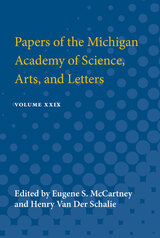 Papers of the Michigan Academy of Science, Arts and Letters: containing papers submitted at the annual meeting in 1943
Edited by Eugene S. McCartney and Henry Van Der Schalie
University of Michigan Press, 1944 The Papers of the Michigan Academy of Science Arts and Letters is an annual volume of papers published under the joint direction of the Council of the Academy and of the Executive Board of the Graduate School of the University of Michigan. The agreement to publish jointly was an opportunity to establish closer relations between the University and the Academy, thus contributing to higher scholarship and original investigation. In this volume, the editor for the Academy is Henry van der Schalie and the editor for the University is Eugene S. McCartney. This volume from the 1943 annual meeting includes an array of papers on Botany and Forestry, Zoology, Geography and Geology, Psychology, Anthropology, Economics, Folklore, History and Political Science, Language and Literature, Philosophy, and Sociology.
Papers of the Michigan Academy of Science, Arts, and Letters: Volume XLIX
Edited by Ralph A. Loomis
University of Michigan Press, 1964 This volume collects outstanding papers in the sciences, humanities, and social sciences that have been organized by the Michigan Academy of Science, Arts, and Letters, a regional, interdisciplinary professional organization. Essays cover topics such as medicine, geology, paleontology, botany, forestry, zoology, art, literature, linguistics, economics, geography, history, and political science. Essays related to the state of Michigan are a particular emphasis; however national and international topics are also included. Contributing authors are primarily affiliated with colleges and universities across Michigan, though independent scholars are also featured. Photos, illustrations, charts, graphs, and tables appear as needed.
Papers of the Michigan Academy of Science, Arts and Letters volume XLV
Editor, Sheridan Baker
University of Michigan Press, 1960 This volume collects outstanding papers in the sciences, humanities, and social sciences that have been organized by the Michigan Academy of Science, Arts, and Letters, a regional, interdisciplinary professional organization. Essays cover topics such as medicine, geology, paleontology, botany, forestry, zoology, art, literature, linguistics, economics, geography, history, and political science. Essays related to the state of Michigan are a particular emphasis; however national and international topics are also included. Contributing authors are primarily affiliated with colleges and universities across Michigan, though independent scholars are also featured. Photos, illustrations, charts, graphs, and tables appear as needed.
Papers of the Michigan Academy of Science, Arts, and Letters: Volume XLVII
Edited by Hubert M. English, Jr.
University of Michigan Press, 1962 This volume collects outstanding papers in the sciences, humanities, and social sciences that have been organized by the Michigan Academy of Science, Arts, and Letters, a regional, interdisciplinary professional organization. Essays cover topics such as medicine, geology, paleontology, botany, forestry, zoology, art, literature, linguistics, economics, geography, history, and political science. Essays related to the state of Michigan are a particular emphasis, but national and international topics are also included. Contributing authors are primarily affiliated with colleges and universities across Michigan, though independent scholars are also featured. Photos, illustrations, charts, graphs, and tables appear as needed.
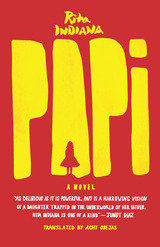 Papi: A Novel
Rita Indiana
University of Chicago Press, 2016 “Papi’s there, around any corner,” says the eight-year-old girl at the heart of Papi. “But you can’t sit down and wait for him cuz that’s a longer and more painful death.” Living in Santo Domingo, she waits for her father to come back from the United States and lavish her with the glorious rewards of his fame and fortune—shiny new cars and polo shirts, gold chains and Nikes. But when Papi does come back, he turns out to be more “like Jason, the guy from Friday the 13th," than a prince. Papi is a drug dealer, a man who is clearly unreliable and dangerous but nevertheless makes his daughter feel powerful and wholly, terrifyingly alive.
Drawing on her memories of a childhood split between Santo Domingo and visits with her father amid the luxuries of the United States, Rita Indiana mixes satire with a child’s imagination, horror with science fiction, in a swirling tale of a daughter’s love, the lure of crime and machismo, and the violence of the adult world. Expertly translated into English for the first time by Achy Obejas, who renders the rhythmic lyricism of Indiana’s Dominican Spanish in language that propels the book forward with the relentless beat of a merengue, Papi is furious, musical, and full of wit—a passionate, overwhelming, and very human explosion of artistic virtuosity.
Papist Devils
Robert Emmett Curran
Catholic University of America Press, 2014 This is a brief highly readable history of the Catholic experience in British America, which shaped the development of the colonies and the nascent republic in the seventeenth and eighteenth centuries. Historian Robert Emmett Curran begins his account with the English reformation, which helps us to understand the Catholic exodus from England, Ireland, and Scotland that took place over the nearly two centuries that constitute the colonial period. The deeply rooted English understanding of Catholics as enemies of the political and religious values at the heart of British tradition, ironically acted as a catalyst for the emergence of a Catholic republican movement that was a critical factor in the decision of a strong majority of American Catholics in 1775 to support the cause for independence
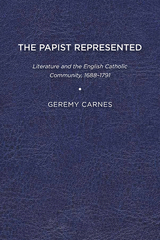 The Papist Represented: Literature and the English Catholic Community, 1688-1791
Geremy Carnes
University of Delaware Press, 2017 Most eighteenth-century literary scholarship implicitly or explicitly associates the major developments in English literature and culture during the rise of modernity with a triumphant and increasingly tolerant Protestantism while assuming that the English Catholic community was culturally moribund and disengaged from Protestant society and culture. However, recent work by historians has shown that the English Catholic community was a dynamic and adaptive religious minority, its leaders among the aristocracy cosmopolitan, its intellectuals increasingly attracted to Enlightenment ideals of liberty and skepticism, and its membership growing among the middle and working classes. This community had an impact on the history of the English nation out of all proportion with its size—and yet its own history is glimpsed only dimly, if at all, in most modern accounts of the period.
The Papist Represented reincorporates the history of the English Catholic community into the field of eighteenth-century literary studies. It examines the intersections of literary, religious, and cultural history as they pertain to the slow acceptance by both Protestants and Catholics of the latter group’s permanent minority status. By focusing on the Catholic community’s perspectives and activities, it deepens and complicates our understanding of the cultural processes that contributed to the significant progress of the Catholic emancipation movement over the course of the century. At the same time, it reveals that this community’s anxieties and desires (and the anxieties and desires it provoked in Protestants) fuel some of the most popular and experimental literary works of the century, in forms and modes including closet drama, elegy, the novel, and the Gothic. By returning the Catholic community to eighteenth-century literary history, The Papist Represented challenges the assumption that eighteenth-century literature was a fundamentally Protestant enterprise.
Published by University of Delaware Press. Distributed worldwide by Rutgers University Press.
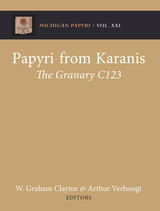 Papyri from Karanis: The Granary C123
W. Graham Claytor and Arthur Verhoogt, editors
University of Michigan Press, 2018 Papyri from Karanis: The Granary C123 is the twenty- first volume of University of Michigan papyri and the fourth devoted to texts from the University’s excavations at Karanis. The volume offers a contextualized edition of thirty-seven documents found in a single structure, a large granary (C123) originally built in the first century CE, in addition to an analysis of the archaeology and history of the structure.
The documents are presented with an introduction, transcription of the original Greek or Latin, translation, commentary, and images. A unique community prayer to the emperor and gods (827) is the volume’s most notable contribution. The other papyri are a mix of private and public documents (petitions, declarations, letters, lists, etc.) that date from between the first century BCE and the fourth century CE. The typological and chronological mix of texts shows that they do not form an undisturbed archive but were rather a dump of wastepaper and other household objects.
Michigan’s excavated papyri are here presented for the first time on the basis of their archaeological find spot rather than being organized according to content. The volume’s introduction provides a possible model for analyzing legacy data from the Karanis excavations stored at the University of Michigan. The book will be of interest to papyrologists, ancient historians, and archaeologists of Greco- Roman Egypt.
Papyri from Tebtunis: Part I
Arthur E.R. Boak
University of Michigan Press, 1944 The papyri that appear in this volume form a part of the collection of documents from the grapheion or records office of Tebtunis. These texts have been selected because they present an interesting picture of the operation of the grapheion of Tebtunis.
Papyrus Codex of the Shepherd of Hermas: (Similitudes 2-9) With a Fragment of the Mandates
Edited by Campbell Bonner
University of Michigan Press, 1934 A Papyrus Codex of the Shepherd of Hermas presents a publication of a manuscript of The Shepherd of Hermas, a Christian religious text of generally the first century CE. The author documents its condition and date, presentational conventions, spelling and grammatical forms, and so on. It offers a text together with supplementary notes.
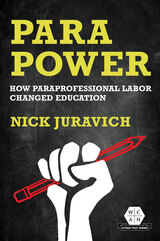 Para Power: How Paraprofessional Labor Changed Education
Nick Juravich
University of Illinois Press, 2024 Paraprofessional educators entered US schools amidst the struggles of the late 1960s. Immersed in the crisis of care in public education, paras improved systems of education and social welfare despite low pay and second-rate status. Understanding paras as key players in Black and Latino struggles for jobs and freedom, Nick Juravich details how the first generation of paras in New York City transformed work in public schools and the relationships between schools and the communities they served. Paraprofessional programs created hundreds of thousands of jobs in working-class Black and Latino neighborhoods. These programs became an important pipeline for the training of Black and Latino teachers in the1970s and early 1980s while paras’ organizing helped drive the expansion and integration of public sector unions. An engaging portrait of an invisible profession, Para Power examines the lives and practices of the first generation of paraprofessional educators against the backdrop of struggles for justice, equality, and self-determination.
 The Para-Academic Handbook: A Toolkit for Making-Learning-Creating-Acting
Alex Wardrop
Intellect Books, 2014 Frustrated by the lack of opportunities to research, create learning experiences or make a basic living within the university on our own terms, para-academics don't seek out alternative careers in the face of an evaporated future; we just continue to do what we've always done: write, research, learn, think and facilitate that process for others. As the para-academic community grows, there is a real need to build supportive networks, share knowledge, ideas and strategies that can allow these types of interventions to become sustainable and flourish. There is a very real need to create spaces of solace, action and creativity.
Para-academics mimic academic practices so they are liberated from the confines of the university. Our work, and our lives, reflect how the idea of a university as a place for knowledge production, discussion and learning, has become distorted by neo-liberal market forces.
We create alternative, genuinely open access, learning-thinking-making-acting spaces on the internet, in publications, in exhibitions, discussion groups or through other mediums that seem appropriate to the situation. We don’t sit back and worry about our career developments paths. We write for the love of it; we think because we have to; we do it because we care.
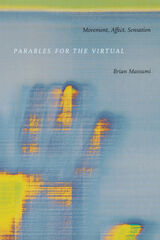 Parables for the Virtual: Movement, Affect, Sensation
Brian Massumi
Duke University Press, 2002 Although the body has been the focus of much contemporary cultural theory, the models that are typically applied neglect the most salient characteristics of embodied existence—movement, affect, and sensation—in favor of concepts derived from linguistic theory. In Parables for the Virtual Brian Massumi views the body and media such as television, film, and the Internet, as cultural formations that operate on multiple registers of sensation beyond the reach of the reading techniques founded on the standard rhetorical and semiotic models.
Renewing and assessing William James's radical empiricism and Henri Bergson's philosophy of perception through the filter of the post-war French philosophy of Deleuze, Guattari, and Foucault, Massumi links a cultural logic of variation to questions of movement, affect, and sensation. If such concepts are as fundamental as signs and significations, he argues, then a new set of theoretical issues appear, and with them potential new paths for the wedding of scientific and cultural theory. Replacing the traditional opposition of literal and figural with new distinctions between stasis and motion and between actual and virtual, Parables for the Virtual tackles related theoretical issues by applying them to cultural mediums as diverse as architecture, body art, the digital art of Stelarc, and Ronald Reagan's acting career. The result is an intriguing combination of cultural theory, science, and philosophy that asserts itself in a crystalline and multi-faceted argument.
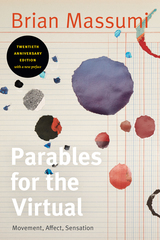 Parables for the Virtual: Movement, Affect, Sensation
Brian Massumi
Duke University Press, 2021 Since its publication twenty years ago, Brian Massumi's pioneering Parables for the Virtual has become an essential text for interdisciplinary scholars across the humanities. Massumi views the body and media such as television, film, and the internet as cultural formations that operate on multiple registers of sensation. Renewing and assessing William James's radical empiricism and Henri Bergson's philosophy of perception through the filter of the postwar French philosophy of Deleuze, Guattari, and Foucault, Massumi links a cultural logic of variation to questions of movement, affect, and sensation. Replacing the traditional opposition of literal and figural with distinctions between stasis and motion and between actual and virtual, Massumi tackles related theoretical issues by applying them to cultural mediums as diverse as architecture, body art, the digital art of Stelarc, and Ronald Reagan's acting career. The result is an intriguing combination of cultural theory, science, and philosophy that asserts itself in a crystalline and multifaceted argument.
This twentieth anniversary edition includes a new preface in which Massumi situates the book in relation to developments since its publication and outlines the evolution of its main concepts. It also includes two short texts, “Keywords for Affect” and “Missed Conceptions about Affect,” in which Massumi explicates his approach to affect in ways that emphasize the book's political and philosophical stakes.
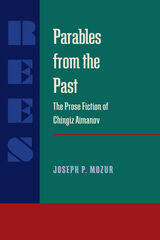 Parables from the Past: The Prose Fiction of Chingiz Aitmatov
Joseph P. Mozur
University of Pittsburgh Press, 1995 James Mozur traces the development of Chingiz Aitmatov's fiction from the early 1950s through the mid-1970s, including Farewell, Gul'sary!, The White Ship, The Day Lasts More Than a Hundred Years, and The Place of the Skull. He discusses each major work against the political and cultural background in which it was created and thereby widens our understanding of post-Stalinist Soviet literature.
Chingiz Aitmatov was born in Kirghizstan in 1928 and published his first stories in the 1950s in both Russian and Kirghiz. He soon took his place as spokesman for the progressive wing of official Soviet Russian literature, striving for greater openness in Soviet letters and for a new approach toward diverse nationalities. Unlike many other writers, Aitmatov continued to flourish in the cultural tumult following the collapse of the communist state, being appointed to government posts by Gorbachev and becoming Soviet ambassador to Luxembourg in 1991.
Parables in Midrash: Narrative and Exegesis in Rabbinic Literature
David Stern
Harvard University Press, 1991 David Stern shows how the parable or mashal—the most distinctive type of narrative in midrash—was composed, how its symbolism works, and how it serves to convey the ideological convictions of the rabbis. He describes its relation to similar tales in other literatures, including the parables of Jesus in the New Testament and kabbalistic parables. Through its innovative approach to midrash, this study reaches beyond its particular subject, and will appeal to all readers interested in narrative and religion.
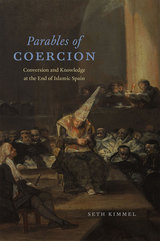 Parables of Coercion: Conversion and Knowledge at the End of Islamic Spain
Seth Kimmel
University of Chicago Press, 2015 In the sixteenth and seventeenth centuries, competing scholarly communities sought to define a Spain that was, at least officially, entirely Christian, even if many suspected that newer converts from Islam and Judaism were Christian in name only. Unlike previous books on conversion in early modern Spain, however, Parables of Coercion focuses not on the experience of the converts themselves, but rather on how questions surrounding conversion drove religious reform and scholarly innovation.
In its careful examination of how Spanish authors transformed the history of scholarship through debate about forced religious conversion, Parables of Coercion makes us rethink what we mean by tolerance and intolerance, and shows that debates about forced conversion and assimilation were also disputes over the methods and practices that demarcated one scholarly discipline from another.
Parabolic Equation Methods for Electromagnetic Wave Propagation
Mireille Levy
The Institution of Engineering and Technology, 2000 This book is the first to present the application of parabolic equation methods in electromagnetic wave propagation. These powerful numerical techniques have become the dominant tool for assessing clear-air and terrain effects on radiowave propagation and are growing increasingly popular for solving scattering problems.
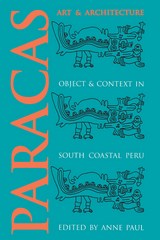 Paracas Art and Architecture: Object and Context in South Coastal Peru
Anne Paul
University of Iowa Press, 1991 The word "Paracas" evokes images of dazzling textiles, handsome, polychrome-crusted pottery painted with rich resin pigments, and extraordinarily thin, finely crafted monochrome pottery. These are the principal artistic manifestations of a 900-year-long cultural tradition that flourished many centuries ago on Peru's south coast. During the past decade, an increasing number of scholars have devoted their studies to Paracas or to Paracas-related material. Paracas Art and Architecture is the first interdisciplinary collection of the current research results—historiographical, archaeological, cultural, architectural, technical, iconographic, and stylistic—of some of these path-breaking scholars. Bringing a much-needed well-roundedness to their media and data, the contributors include archaeologists, art historians, a fiber artist, and a fiber chemist, all of whose varied skills and approaches help unify our emerging view of this endlessly interesting area. Anne Paul provides insightful notes of the social implications of the Paracas burials, while Kathryn Jakes outlines the methodology that can be used to determine patterns of textile degradation, preservation, and alteration. Through Mary Frame's meticulous analysis of the structure of Paracas headbands, abstract concepts of space, number, and order in this preliterate society are revealed. Culture and influence are examined by Dwight Wallace, who demonstrates the Chavin culture's influence on the south coast's Carhua painted textiles, and by Sarah Massay, who provides a valuable description of late Paracas site distributions in the lower Ica Valley. Ann Peters interprets social and ecological relationships depicted on a group of textiles from Cerro Colorado on the Paracas Peninsula. Richard Daggett gives an excellent overview of the discovery of the Paracas cemeteries, while Helaine Silverman provides insightful comments on the stylistic, cultural, and ethnic differences on the Paracas, Topará, and Nasca polities.
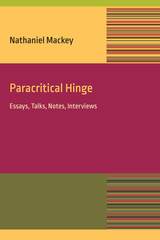 Paracritical Hinge: Essay, Talks, Notes, Interviews
Nathaniel Mackey
University of Iowa Press, 2018 Paracritical Hinge is a collection of varied yet interrelated pieces highlighting Nathaniel Mackey’s multifaceted work as writer and critic. It embraces topics ranging from Walt Whitman’s interest in phrenology to the marginalization of African American experimental writing; from Kamau Brathwaite’s “calibanistic” language practices to Federico García Lorca’s flamenco aesthetic of duende and its continuing repercussions; from H. D.’s desert measure and coastal way of knowing to the altered spatial disposition of Miles Davis’s trumpet sound; from Robert Duncan’s serial poetics to diasporic syncretism; from the lyric poem’s present-day predicaments to gnosticism. Offering illuminating commentary on these and other artists including Amiri Baraka, Mississippi Fred McDowell, Wilson Harris, Jack Spicer, John Coltrane, Jay Wright, and Bob Kaufman, Paracritical Hinge also sheds light on Mackey’s own work as a poet, fiction writer, and editor.
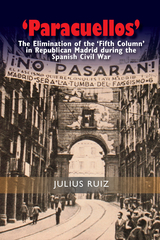 'Paracuellos': The Elimination of the 'Fifth Column' in Republican Madrid During the Spanish Civil War
Julius Ruiz
Sussex Academic Press, 2022 This book examines the most polemical atrocity of the Spanish civil war: the massacre of 2,500 political prisoners by Republican security forces in the villages of Paracuellos and Torrejon de Ardoz near Madrid in November and December 1936. The atrocity took place while Santiago Carrillo-later a Communist Party leader in the 1970s-was responsible for public order. Although Carrillo played a key role in the transition to democracy after Franco's death in 1975, he passed away at the age of 97 in 2012 still denying any involvement in 'Paracuellos' (the generic term for the massacres). The issue of Carrillo's responsibility has been the focus of much historical research. Julius Ruiz places Paracuellos in the wider context of the 'Red Terror' in Madrid, where a minimum of 8,000 'fascists' were murdered after the failure of the military rebellion in July 1936. This book argues that Republican actions influenced the Soviets, not the other way round: Paracuellos intensified Stalin's fears of a 'Fifth Column' within the USSR that facilitated the Great Terror of 1937-38. It concludes that the perpetrators of 'Paracuellos' were primarily members of the Provincial Committee of Public Investigation (CPIP), a murderous all-leftist revolutionary tribunal created in August 1936. Its work of eliminating the 'Fifth Column' (an imaginary clandestine Francoist organisation) was supported not just by Carrillo, but also by the Republican government. In Autumn 2015, this book was serialized in El Mundo, Spain's second largest selling daily, to great acclaim. [Subject: Spanish Civil War, History, Military Studies]
A Paradigm for Program Semantics
Chris Brink and Ingrid Rewitsky
CSLI, 2001 This book provides a synthesis of four versions of program semantic—srelational semantics, predicate transformer semantics, information systems, and domain theory—showing, through an exhaustive case study analysis, that it is possible to do back-and-forth translation from any of these versions of program semantics into any of the others, and demonstrating that while there are many variations of each, in principle they may be thought of as intertranslatable.
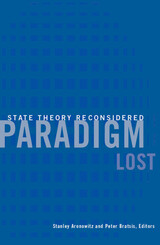 Paradigm Lost: State Theory Reconsidered
Stanley Aronowitz
University of Minnesota Press, 2002 Analyzes the ongoing relevance of a revitalized state theory to today’s political debates. With increasing globalization, the meaning and role of the nation-state are in flux. At the same time, state theory, which might help to explain such a trend, has fallen victim to the general decline of radical movements, particularly the crisis in Marxism. This volume seeks to enrich and complicate current political debates by bringing state theory back to the fore and assessing its relevance to the social phenomena and thought of our day. Throughout, it becomes clear that, whether confronting the challenges of postmodern and neo-institutionalist theory or the crisis of the welfare state and globalization, state theory still has great analytical and strategic value. Contributors: Clyde W. Barrow, U of Massachusetts, Dartmouth; Richard A. Cloward; Adriano Nervo Codato, Federal U of Paraná, Brazil; Bob Jessop, Lancaster U, UK; Andreas Kalyvas, U of Michigan; Rhonda F. Levine, Colgate U; Leo Panitch, York U; Renato Monseff Perissinotto, Federal U of Paraná, Brazil; Frances Fox Piven, CUNY; Paul Thomas, U of California, Berkeley; Constantine Tsoukalas, U of Athens.
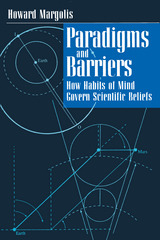 Paradigms and Barriers: How Habits of Mind Govern Scientific Beliefs
Howard Margolis
University of Chicago Press, 1993 In Paradigms and Barriers Howard Margolis offers an
innovative interpretation of Thomas S. Kuhn's landmark idea
of "paradigm shifts," applying insights from cognitive
psychology to the history and philosophy of science.
Building upon the arguments in his acclaimed Patterns,
Thinking, and Cognition, Margolis suggests that the
breaking down of particular habits of mind—of critical
"barriers"—is key to understanding the processes through
which one model or concept is supplanted by another.
Margolis focuses on those revolutionary paradigm shifts—
such as the switch from a Ptolemaic to a Copernican
worldview—where challenges to entrenched habits of mind
are marked by incomprehension or indifference to a new
paradigm. Margolis argues that the critical problem for a
revolutionary shift in thinking lies in the robustness of the
habits of mind that reject the new ideas, relative to the
habits of mind that accept the new ideas.
Margolis applies his theory to famous cases in the history of
science, offering detailed explanations for the transition
from Ptolemaic to cosmological astronomy, the emergence of
probability, the overthrow of phlogiston, and the emergence
of the central role of experiment in the seventeenth century.
He in turn uses these historical examples to address larger
issues, especially the nature of belief formation and
contemporary debates about the nature of science and the
evolution of scientific ideas.
Howard Margolis is a professor in the Harris Graduate School
of Public Policy Studies and in the College at the University
of Chicago. He is the author of Selfishness, Altruism,
and Rationality and Patterns, Thinking, and
Cognition, both published by the University of Chicago
Press.
Paradigms and Paradoxes: The Philosophical Challenge of the Quantum Domain
Robert G. Colodny
University of Pittsburgh Press, 1972 The revolution involving the foundations of the physical sciences heralded by relativity and quantum theories has been stimulating philosophers for many years. Both of these comprehensive sets of concepts have involved profound challenges to traditional theories of epistemology, ontology, and language. This volume gathers six experts in physics, logic and philosophy to discuss developments in space exploration and nuclear science and their impact on the philosophy of science.
Paradigms and Sand Castles: Theory Building and Research Design in Comparative Politics
Barbara Geddes
University of Michigan Press, 2003 Paradigms and Sand Castles demonstrates the relationship between thoughtful research design and the collection of persuasive evidence in support of theory. It teaches the craft of research through interesting and carefully selected examples from the field of comparative development studies.
Barbara Geddes is Professor of Political Science at the University of California, Los Angeles.
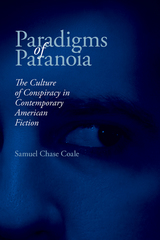 Paradigms of Paranoia: The Culture of Conspiracy in Contemporary American Fiction
Samuel Chase Coale
University of Alabama Press, 2005 An examination of the American fascination with conspiracy and the distrust it sows
The recent popularity of The DaVinci Code and The Matrix trilogy exemplifies the fascination Americans have with conspiracy-driven subjects. Though scholars have suggested that in modern times the JFK assassination initiated an industry of conspiracy (i.e., Vietnam and the Pentagon Papers, Area 51, Iran-Contra Affair), Samuel Chase Coale reminds us in this book that conspiracy is foundational in American culture—from the apocalyptic Biblical narratives in early Calvinist households to the fear of Mormon, Catholic, Jewish, and immigrant populations in the 19th century.
Coale argues that contemporary culture—a landscape characterized by doubt, ambiguity, fragmentation, information overload, and mistrust—has fostered a radical skepticism so pervasive that the tendency to envision or construct conspiracies often provides the best explanation for the chaos that surrounds us.
Conspiracy as embodied in narrative form provides a fertile field for explorations of the anxiety lying at the heart of the postmodern experience. Thomas Pynchon's The Crying of Lot 49, Don DeLillo's Underworld, Toni Morrison's Jazz and Paradise, Joan Didion's Democracy, Tim O'Brien's In the Lake of the Woods, and Paul Auster's New York City Trilogy are some of the texts Coale examines for their representations of isolated individuals at the center of massive, anonymous master plots that lay beyond their control. These narratives remind us that our historical sense of national identity has often been based on the demonizing of others and that American fiction arose and still flourishes with apocalyptic visions.
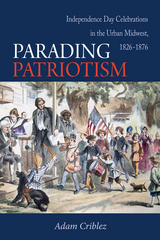 Parading Patriotism: Independence Day Celebrations in the Urban Midwest, 1826-1876
Adam Criblez
Northern Illinois University Press, 2012 Parading Patriotism covers a critical fifty-year period in the nineteenth-century when the American nation was starting to expand and cities across the Midwest were experiencing rapid urbanization and industrialization. Historian Adam Criblez offers a unique and fascinating study of five midwestern cities—Chicago, Cincinnati, Cleveland, Columbus, and Indianapolis—and how celebrations of the Fourth of July in each of them formed a microcosm for the country as a whole in defining and establishing patriotic nationalism and new conceptions of what it was like to be an American.
Criblez exposes a rich tapestry of mid-century midwestern social and political life by focusing on the nationalistic rites of Independence Day. He shows how the celebratory façade often masked deep-seated tensions involving such things as race, ethnicity, social class, political party, religion, and even gender. Urban celebrations in these cities often turned violent, with incidents marked by ethnic conflict, racial turmoil, and excessive drunkenness. The celebration of Independence Day became an important political, cultural, and religious ritual on social calendars throughout this time period, and Criblez illustrates how the Midwest adapted cultural developments from outside the region—brought by European immigrants and westward migrants from eastern states like New York, Virginia, and Massachusetts. The concepts of American homegrown nationalism were forged in the five highlighted midwestern cities, as the new country came to terms with its own independence and how historical memory and elements of zealous and belligerent patriotism came together to construct a new and unique national identity.
This ground-breaking book draws on both unpublished sources (including diaries, manuscript collections, and journals) and copious but under-utilized print resources from the region (newspapers, periodicals, travelogues, and pamphlets) to uncover the roots of how the Fourth of July holiday is celebrated today. Criblez’s insightful book shows how political independence and republican government was promoted through rituals and ceremonies that were forged in the wake of this historical moment.
Paradise
Victoria Redel
Four Way Books, 2022 Rewriting Eden, Victoria Redel interrogates the idea of paradise within the historical context of borders, exile, and diaspora that brought us to the present global migration crisis. Drawing from a long family history of flight and refuge, the poems in Paradise interweave religion and myth, personal lore and nation-building, borders actual and imagined. They ask: What if what we fell from was never, actually, grace? What is a boundary, really? Redel navigates geopolitical perimeters while also questioning the border between the living and the dead and delineating the migrations aging women make in their bodies and lives. With stark lyricism and unflinching attention, Paradise considers how a legacy of trauma shapes imagination and asks readers to see the threads that tie contemporary catastrophes to the exigencies and flight paths that made us.
Paradise
Victoria Redel
Four Way Books, 2022 Rewriting Eden, Victoria Redel interrogates the idea of paradise within the historical context of borders, exile, and diaspora that brought us to the present global migration crisis. Drawing from a long family history of flight and refuge, the poems in Paradise interweave religion and myth, personal lore and nation-building, borders actual and imagined. They ask: What if what we fell from was never, actually, grace? What is a boundary, really? Redel navigates geopolitical perimeters while also questioning the border between the living and the dead and delineating the migrations aging women make in their bodies and lives. With stark lyricism and unflinching attention, Paradise considers how a legacy of trauma shapes imagination and asks readers to see the threads that tie contemporary catastrophes to the exigencies and flight paths that made us.
Paradise and Method: Poetry and Praxis
Bruce Andrews
Northwestern University Press, 1996 Paradise & Method: Poetics and Praxis collects nearly two decades of work on poetics by one of the pioneers of the "language poetry" movement.
Addressing poetics from a poet's perspective, Andrews focuses on the ways in which meaning is produced and challenged. His essays aim "to map out opportunities for making sense (or making noise)--both in reading and writing contemporary literature. At the center has been a desire to explore language, as up close as possible, as a material and social medium for restagings of meaning and power." Andrews analyzes poetics and the production of meaning; alternative traditions and canons; and innovative contemporary poetry, particularly its break with many of the premises and constraints of even the most forward-looking modernisms.
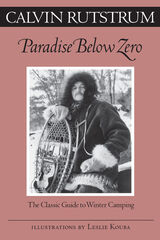 Paradise Below Zero: The Classic Guide to Winter Camping
Calvin Rutstrum
University of Minnesota Press, 2000 Indispensable advice on enjoying the great outdoors in winter. With the public’s growing interest in outdoor adventure and in simple pastimes, winter wilderness camping has again become an exhilarating alternative to sheltered urban life. Originally published in 1968, this classic guide for cold-weather enthusiasts by renowned wilderness expert Calvin Rutstrum is available again, now in an easy-to-pack paperback edition. Paradise Below Zero provides essential information on wilderness adventure in subzero temperatures. Readers benefit from Rutstrum’s knowledge of winter clothing, from choosing the proper mittens to selecting the indispensable footwear; traveling methods, including running a dogsled team; and emergency techniques, such as treating snow blindness and caring for someone who has broken through the ice. Rutstrum affectionately reflects on winter life and enthusiastically gives examples of how native peoples of the north and trappers have fought the cold. This colorful book will be of interest to anyone who has ever survived a northern winter.
Paradise Earned: The Bacchic-Orphic Gold Lamellae of Crete
Yannis Tzifopoulos
Harvard University Press, 2010 This is a study of the twelve small gold lamellae from Crete that were tokens for entrance into a golden afterlife: the deceased who were buried or cremated with them believed that they had 'earned Paradise.' The lamellae are placed within the context of a small corpus of similar texts, and published with extensive commentary on their topography, lettering and engraving, dialect and orthography, meter, chronology, and usage. The texts reveal a hieros logos whose poetics and rituals are not much different from Homeric rhapsodizing and prophetic discourses. Cretan contexts, both literary and archaeological, are also brought to bear on these incised objects and on the burial custom involved. Finally, this work adduces parallels to the texts on the lamellae from the Byzantine period and modern Greece to illuminate the everlasting and persistent human quest for 'earning Paradise.'
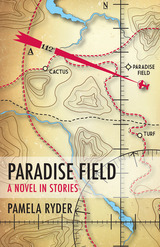 Paradise Field: A Novel in Stories
Pamela Ryder
University of Alabama Press, 2017 Interconnected stories depicting the last years of a WWII bomber pilot, his relationship with his daughter as both child and adult, and his drift into infirmity and death.
When life dwindles to its irrevocable conclusion, recollections are illuminated, even unto the grave. Such is the narrative of Paradise Field: A Novel in Stories, whose title is taken from a remote airfield in the American Southwest, and while the father recalls his flying days, his daughter—who nurses the old man—reflects as well.
Pamela Ryder’s stories vary in style and perspective, and time lines overlap as death advances and retreats. This unique and shifting narrative explores the complexities of a relationship in which the father—who has been a high-flying outsider—descends into frailty and becomes dependent upon the daughter he has never really known.
The opening story, “Interment for Yard and Garden,” begins as a simple handbook for Jewish burial and bereavement, although the narrator cannot help but reveal herself and her motives. From there, the telling begins anew and unfolds chronologically, returning to the adult daughter’s childhood: a family vacation in France, the grotesqueries of the dinner table, the shadowy sightings of a father who has flown away.
A final journey takes father and daughter back to the Southwest in search of Paradise Field. Their travels through that desolate landscape foreshadow the father’s ultimate decline, as portrayed in the concluding stories that tell of the uneasy transformation in the bond between them and in the transcendence of his demise. Taken together, the stories in Paradise Field are an eloquent but unsparing depiction of infirmity and death, as well as solace and provocation for anyone who has been left to stand graveside and confront eternity.
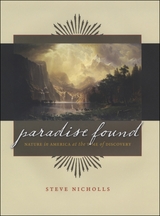 Paradise Found: Nature in America at the Time of Discovery
Steve Nicholls
University of Chicago Press, 2009 The first Europeans to set foot on North America stood in awe of the natural abundance before them. The skies were filled with birds, seas and rivers teemed with fish, and the forests and grasslands were a hunter’s dream, with populations of game too abundant and diverse to even fathom. It’s no wonder these first settlers thought they had discovered a paradise of sorts. Fortunately for us, they left a legacy of copious records documenting what they saw, and these observations make it possible to craft a far more detailed evocation of North America before its settlement than any other place on the planet. Here Steve Nicholls brings this spectacular environment back to vivid life, demonstrating with both historical narrative and scientific inquiry just what an amazing place North America was and how it looked when the explorers first found it. The story of the continent’s colonization forms a backdrop to its natural history, which Nicholls explores in chapters on the North Atlantic, the East Coast, the Subtropical Caribbean, the West Coast, Baja California, and the Great Plains. Seamlessly blending firsthand accounts from centuries past with the findings of scientists today, Nicholls also introduces us to a myriad cast of characters who have chronicled the changing landscape, from pre–Revolutionary era settlers to researchers whom he has met in the field. A director and writer of Emmy Award–winning wildlife documentaries for the Smithsonian Channel, Animal Planet, National Geographic, and PBS, Nicholls deploys a cinematic flair for capturing nature at its most mesmerizing throughout. But Paradise Found is much more than a celebration of what once was: it is also a reminder of how much we have lost along the way and an urgent call to action so future generations are more responsible stewards of the world around them. The result is popular science of the highest order: a book as remarkable as the landscape it recreates and as inspired as the men and women who discovered it.
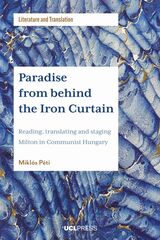 Paradise from behind the Iron Curtain: Reading, Translating and Staging Milton in Communist Hungary
Miklós Péti
University College London, 2022 The role and reception of Milton’s work in Communist Hungary.
This book provides a detailed survey of the key responses to Milton’s work in Hungarian state socialism. The four decades between 1948 and 1989 saw a radical revision of previous critical and artistic positions and resulted in the emergence of some characteristically Eastern European responses to Milton’s works. Appraisals of Milton’s works in the communist era proved more controversial than receptions of other major Western authors: on the one hand, Milton’s participation in the Civil War earned him the title of a “revolutionary hero,” on the other hand, religious aspects of his works were often disregarded and sometimes proactively suppressed. This book highlights these diverging responses and places them in the wider context of socialist cultural policy. In addition, it presents the full Hungarian script of the 1970 theatrical performance of Milton’s Paradise Lost, the first of its kind since the work’s publication, alongside a parallel English translation, enabling a deeper reflection on Milton’s original theodicy and its possible interpretations in communist Hungary.
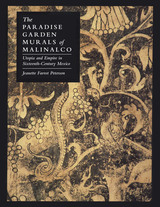 The Paradise Garden Murals of Malinalco: Utopia and Empire in Sixteenth-Century Mexico
By Jeanette Favrot Peterson
University of Texas Press, 1993 Winner, Charles Rufus Morey Award, 1993 The valley of Malinalco, Mexico, long renowned for its monolithic Aztec temples, is a microcosm of the historical changes that occurred in the centuries preceding and following the Spanish conquest in the sixteenth century. In particular, the garden frescoes uncovered in 1974 at the Augustinian monastery of Malinalco document the collision of the European search for Utopia with the reality of colonial life. In this study, Jeanette F. Peterson examines the murals within the dual heritage of pre-Hispanic and European muralism to reveal how the wall paintings promoted the political and religious agendas of the Spanish conquerors while preserving a record of pre-Columbian rituals and imagery. She finds that the utopian themes portrayed at Malinalco and other Augustinian monasteries were integrated into a religious and political ideology that, in part, camouflaged the harsh realities of colonial policies toward the native population. That the murals were ultimately whitewashed at the end of the sixteenth century suggests that the "spiritual conquest" failed. Peterson argues that the incorporation of native features ultimately worked to undermine the orthodoxy of the Christian message. She places the murals' imagery within the pre-Columbian tlacuilo (scribe-painter) tradition, traces a "Sahagún connection" between the Malinalco muralists and the native artists working at the Franciscan school of Tlatelolco, and explores mural painting as an artistic response to acculturation. The book is beautifully illustrated with 137 black-and-white figures, including photographs and line drawings. For everyone interested in the encounter between European and Native American cultures, it will be essential reading.
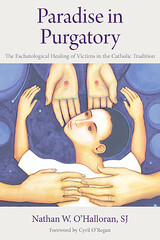 Paradise in Purgatory: The Eschatological Healing of Victims in the Catholic Tradition
Nathan W. O'Halloran
Catholic University of America Press, 2024 The claim of this book is that it is a precondition for Heaven that victims experience an eschatological healing of their other-inflicted wounds. Nathan O’Halloran, SJ, argues that the best theological space in which to locate this eschatological healing is in what he terms Paradise-in-Purgatory. The doctrine of Purgatory developed as a postmortem theological category for addressing sins committed after baptism and for which adequate penance has not been completed before death. In its full doctrinal articulations at Lyons II, Florence, and Trent, Purgatory is a doctrine concerned with personal, self-inflicted sin. Victims, on the other hand, require healing from other-inflicted sin rather than self-inflicted sin. For this reason, a certain expansion of this Catholic doctrine is required to make theological space for victims.
O’Halloran argues that he has found that theological space within the Church’s ample tradition. The wellspring from which the doctrine of Purgatory emerged contains a richer content than has been represented thus far by conciliar definitions. Paradise in Purgatory maintains that the soteriological logic out of which Purgatory developed can be extended also to the postmortem healing of victims, and the soteriological logic of the New Testament supports this conclusion. Using as fundamental touchstones the wiping away of victims’ tears in the Book of Revelation, and the healing of Dinocrates through the prayers of his sister Perpetua in the Passion of Perpetua and Felicity, O’Halloran argues that victims must have an opportunity to experience full postmortem salvation from other-inflicted sin. The volume concludes that Purgatory can be theologically expanded to include a Paradise-in-Purgatory, i.e., a process that heals the other-inflicted wounds of sin which victims carry with them through death. The wounds of victims cannot be eschatologically discarded but must be subjected to the healing salvation which Christ came to offer.
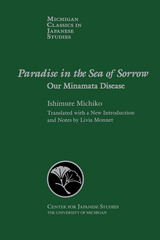 Paradise in the Sea of Sorrow: Our Minamata Disease
Ishimure Michiko
University of Michigan Press, 2003 In the early 1950s, numerous cases of organic mercury poisoning were discovered in the fishing villages around Minamata, Japan. Yet for decades after, victims of what is now known as Minamata disease suffered neglect, discrimination, and ostracism by Minamata residents, local government, labor unions, Minamata disease certification committees, and fishers’ cooperatives. Fifty years later, renewed efforts began to conserve the environment and reconcile with victims of poisoning, including a flurry of museum-building, citizen waste recycling campaigns, and conferences, symposia, and exhibitions. But this rapprochement in the 1990s took place slowly and with difficulty, as the pain of previous decades was still alive and aching. Ishimure Michiko served as a key activist and spokesperson for the Minamata protest movement, producing over forty volumes of writings in various genres: docufiction, historical novels, reportage, autobiography, poetry, children’s books, and a Nō drama. Beyond playing an outsized role in organizing the Minamata struggle, Ishimure influenced the movement’s cultural history and memory and articulated its symbolic legacy. Paradise in the Sea of Sorrow is a powerful record of victims’ suffering and the movement to support them. Its lyrical descriptions of fishing villages and fishers’ way of life, as well as of the scenic beauty of the Shiranui Sea area, are among the most effective in contemporary Japanese literature. Paradise is a work of testimonial resistance literature—a militant, hybrid autoethnography featuring both a local community as a plurality of speakers and an autobiographical voice through which Ishimure plays an unassuming participant observer who insists on the accuracy, truthfulness, and necessity of her testimony.
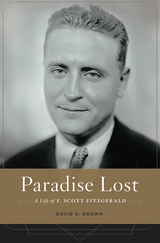 Paradise Lost: A Life of F. Scott Fitzgerald
David S. Brown
Harvard University Press, 2017 Pigeonholed in popular memory as a Jazz Age epicurean, a playboy, and an emblem of the Lost Generation, F. Scott Fitzgerald was at heart a moralist struck by the nation’s shifting mood and manners after World War I. In Paradise Lost, David Brown contends that Fitzgerald’s deepest allegiances were to a fading antebellum world he associated with his father’s Chesapeake Bay roots. Yet as a midwesterner, an Irish Catholic, and a perpetually in-debt author, he felt like an outsider in the haute bourgeoisie haunts of Lake Forest, Princeton, and Hollywood—places that left an indelible mark on his worldview.
In this comprehensive biography, Brown reexamines Fitzgerald’s childhood, first loves, and difficult marriage to Zelda Sayre. He looks at Fitzgerald’s friendship with Hemingway, the golden years that culminated with Gatsby, and his increasing alcohol abuse and declining fortunes which coincided with Zelda’s institutionalization and the nation’s economic collapse.
Placing Fitzgerald in the company of Progressive intellectuals such as Charles Beard, Randolph Bourne, and Thorstein Veblen, Brown reveals Fitzgerald as a writer with an encompassing historical imagination not suggested by his reputation as “the chronicler of the Jazz Age.” His best novels, stories, and essays take the measure of both the immediate moment and the more distant rhythms of capital accumulation, immigration, and sexual politics that were moving America further away from its Protestant agrarian moorings. Fitzgerald wrote powerfully about change in America, Brown shows, because he saw it as the dominant theme in his own family history and life.
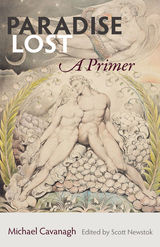 Paradise Lost: A Primer
Michael Cavanagh
Catholic University of America Press, 2020 A record of a teacher’s lifelong love affair with the beauty, wit, and profundity of Paradise Lost, celebrating John Milton’s un-doctrinal, complex, and therefore deeply satisfying perception of the human condition. After surveying Milton’s recurrent struggle as a reconciler of conflicting ideals, this Primer undertakes a book-by-book reading of Paradise Lost, reviewing key features of Milton’s “various style,” and why we treasure that style. Cavanagh constantly revisits Milton the singer and maker, and the artistic problems he faced in writing this almost impossible poem.
This book is emphatically for first-time readers of Milton, with little or no prior exposure, but with ambition to encounter challenging poetry. These are readers who tell you they “have always been meaning to read Paradise Lost,” who seek to enjoy the epic without being overwhelmed by its daunting learning and expansive frame of reference. Avoiding the narrowly specialized focus of most Milton scholarship, Cavanagh deals forthrightly with issues that recur across generations of readers, gathering selected voices—from scholars and poets alike—from 1674 through the present.
Lively and jargon-free, this Primer makes Paradise Lost accessible and fresh, offering a credible beginning to what is a great intellectual and aesthetic adventure.
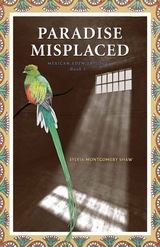 Paradise Misplaced: Book 1 of the Mexican Eden Trilogy
Sylvia Montgomery Shaw
Swedenborg Foundation Publishers, 2012 I knew the secret as a child before anyone else did—that God planted the Garden of Eden just seventy-five kilometers south of Mexico City, near the town of Cuernavaca. He scattered seeds so only the most colorful flowers and the best climbing trees would grow in that semitropical paradise. He filled the stables with the fastest, strongest Arabians; mother’s aviary with more birds than anywhere else in the world. Then he constructed a wall twice as tall as Father and encircled our Eden to keep it safe. We named the garden the Hacienda of San Serafin. I swore that I would spend the rest of my life there, where nothing bad ever happens . . .
Captain Benjamín Nyman Vizcarra, son of the wealthiest man in Mexico, has everything a young man could want. But in the days leading up to the Mexican Revolution of 1910, he finds himself questioning whether he can support the old regime—and more and more distracted by his brother’s bewitching fiancee, Isabel. Setting out to expose her as a gold-digger, he instead falls deeply in love, setting himself on a path that leads to war, poverty, and alienation from his family.
Accused and convicted of his father’s murder after a fateful late-night encounter, Benjamín faces his inner demons, beginning a process that Swedenborg describes as regeneration. As he plots escape with a fellow prisoner, a Tarahumara Indian known only as El Brujo, he relives his love affair and eventual marriage to Isabel. A new question begins to form: will he run, or will he stay to confront his mistakes and win back the woman he loves?
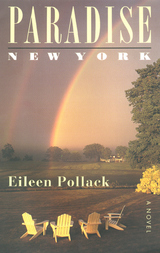 Paradise, New York: A Novel
Eileen Pollack
Temple University Press, 2000 We first meet Lucy Appelbaum, the heroine of Paradise, New York, n 1970, when she is a nine year old girl enjoying her family's Catskills hotel, the Garden of Eden. Ten years later, having found nothing else at which she can distinguish herself, she tries to save the Eden by capitalizing on a wave of nostalgia for the Borscht Belt, running the hotel as a sort of living museum of Yiddish culture.
In the course of that season, Lucy comes to realize her love for the hotel's black handyman, Mr. Jefferson -- and the difficulties she faces in overcoming the barriers between them. She battles her grandmother's not-so-subtle attempts to sabotage her success, her parents' superstitious fear of anything that attracts attention to the Jews, and her brother's contention that what Lucy is doing is more a matter of ego than authentic religious feeling.
On top of all this, Lucy must contend with the Hasid who buys the chicken farm next door, a cell of ancient Jewish Communist who foment a strike among Eden's overworked young staff, and a gay chef and a gay baker who want to prove to the world that kosher cuisine can satisfy the most sophisticated gourmet.
Among the novel's characters are Shirley and Nat Feidel, who barely survived the Holocaust but refuse to allow bitterness to rule their lives; Mami Goshgarian, the Eden's tumeler; and Jimmy Kilcoin, and Irish Catholic insurance adjustor who has earned a reputation as "the Don Juan of the Catskills" and is determined to seduce Lucy before summer's end.
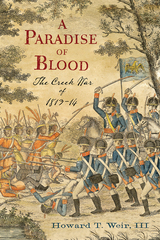 A Paradise of Blood: The Creek War of 1813–14
Howard T. Weir, III
Westholme Publishing, 2016 The War for an Idyllic Wilderness That Brought Andrew Jackson to National Prominence, Transformed the South, and Changed America Forever
In 1811, a portion of the Creek Indians who inhabited a vast area across Georgia, Alabama, and parts of Florida and Mississippi, interpreted an earth tremor as a sign that they had to return to their traditional way of life. What was an internal Indian dispute soon became engulfed in the greater War of 1812 to become perhaps the most consequential campaign of that conflict. At immediate stake in what became known as the Creek War of 1813–14 was whether the Creeks and their inconstant British and Spanish allies or the young United States would control millions of acres of highly fertile Native American land. The conflict’s larger issue was whether the Indian nations of the lower American South—the Creek, Cherokee, Choctaw, and Chickasaw—would be able to remain in their ancestral homes.
Beginning with conquistador Ferdinand DeSoto’s fateful encounter with Indians of the southeast in the 1500s, A Paradise of Blood: The Creek War of 1813–14 by Howard T. Weir, III, narrates the complete story of the cultural clash and centuries-long struggle for this landscape of stunning beauty. Using contemporary letters, military reports, and other primary sources, the author places the Creek War in the context of Tecumseh’s fight for Native American independence and the ongoing war between the United States and European powers for control of North America. The Creek War was marked by savagery, such as the murder of hundreds of settlers at Fort Mims, Alabama—the largest massacre of its kind in United States history—and fierce battles, including Horseshoe Bend, where more Indian warriors were confirmed killed than in any other single engagement in the long wars against the Indians. Many notable personalities fought during the conflict, including Andrew Jackson, who gained national prominence for his service, Sam Houston, War Chief William Weatherford, and Davy Crockett. When the war was over, more than twenty million acres had been added to the United States, thousands of Indians were dead or homeless, and Jackson was on his way to the presidency. The war also eliminated the last effective Native American resistance to westward expansion east of the Mississippi, and by giving the United States land that was ideal for large-scale cotton planting, it laid the foundation for the Civil War a generation later. A Paradise of Blood is a comprehensive and masterful history of one of America’s most important and influential early wars.
 A Paradise of Dainty Devices (1576–1606)
Richard Edwards
Harvard University Press Richard Edwards, a distinguished lyricist and playwright, compiled the Paradise; in 1576 Henry Disle published it. Its popularity was immediate and great. By 1606 it had run through ten known editions. One edition, that of 1577, seems to be completely lost, but nine are extant, all varying more or less from one another. Yet in spite of its importance as an anthology of typical Elizabethan verse, it has never received scholarly attention until now. The present is the first critical edition ever made. The introduction gives every scrap of attainable information about the history of the work and about the contributing poets. There is a complete and valuable glossary. The nine available texts have been generously annotated and accurately collated. Professor Rollins has done a thorough, painstaking, scholarly piece of work that was well worth doing, for the Paradise, collected in the richest period of English literature, is animated with the spirit of poetry, and has an interest not merely for scholars but for every reader sensitive to the charm of Elizabethan verse.
Paradise: Poems
Stephen Gibson
University of Arkansas Press, 2011 In Paradise, Stephen Gibson's fourth poetry collection, we are taken on a journey through history and myth, wars past and present, public discoveries and private loss. As the reader confronts past horrors and present truths as well as the speaker's personal ones (an abused mother, a shellshocked father), it becomes apparent that the paradise sought-not in the hereafter but in the here and now-lies just beyond reach. It all ends, suggest these verses, with the understanding that behind everything we find nothing more divine than the human.
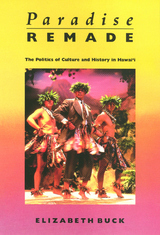 Paradise Remade: The Politics of Culture and History in Hawai'i
Elizabeth Buck
Temple University Press, 1994 This is a book about the politics of competing cultures and myths in a colonized nation. Elizabeth Buck considers the transformation of Hawaiian culture focusing on the indigenous population rather than on the colonizers. She describes how Hawaii's established religious, social, political, and economic relationships have changed in the past 200 years as a result of Western imperialism. Her account is particularly timely in light of the current Hawaiian demands for sovereignty 100 years after the overthrow of the monarchy in 1893. Buck examines the social transformation Hawaii from a complex hierarchical, oral society to an American state dominated by corporate tourism and its myths of paradise. She pays particular attention to the ways contemporary Hawaiians are challenging the use of their traditions as the basis for exoticized entertainment. Buck demonstrates that sacred chants and hula were an integral part of Hawaiian social life; as the repository of the people's historical memory, chants and hula practices played a vital role in maintaining the links between religious, political, and economic relationships. Tracing the ways in which Hawaiian culture has been variously suppressed and constructed by Western explorers, New England missionaries, the tourist industry, ethnomusicologists, and contemporary Hawaiians, Buck offers a fascinating "rereading" of Hawaiian history.
Paradise Valley, Nevada: The People and Buildings of an American Place
Howard Wight Marshall
University of Arizona Press, 1995 Stonemasons from the Alpine valleys of northwestern Italy shaped the architectural face of Paradise Valley in northern Nevada in the 1860s and 1870s. Drawing on their own distinctive skills, they constructed the constellation of granite and sandstone buildings that are the region's most visible landmarks. Marshall's analysis of this architectural legacy, illustrated with 229 photographs and 70 line drawings, is not only a valuable resource for scholars in vernacular architecture, folklore, and cultural geography, but also a verbal and visual treat for all who love the American West.
 The Paradisiacs: Last Kingdom IV
Pascal Quignard
Seagull Books, 2025 Pascal Quignard delves into the uncanny bond between recognition and loss, outlining how our earliest experiences shape our longing for a paradise we can never reclaim.
What if paradise was not a place we lost, but one we never truly knew? In Paradisiacs, the fourth volume of the Last Kingdom series, Pascal Quignard meditates on the nature of paradise—not as an Eden to which we might return, but as a place of origin that lingers in myth. Through his signature blend of ancient texts, Paleolithic art, psychoanalysis, and personal reflection, Quignard explores our primal longing for recognition. He traces this yearning back to the erstwhile, a prenatal paradise from which we are expelled at birth, and examines how resemblance and recognition shape our identities.
At once poetic and philosophical, Paradisiacs invites readers into Quignard’s singular world, where language and history coalesce into a profound rumination on the origins of selfhood. With John Taylor’s masterly translation, this latest installment of Last Kingdom is a hypnotic and revelatory reading experience for those drawn to the intersections of philosophy and the ineffable.
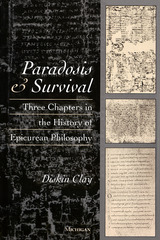 Paradosis and Survival: Three Chapters in the History of Epicurean Philosophy
Diskin Clay
University of Michigan Press, 1998 Paradosis and Survival presents Diskin Clay's fifteen essays devoted to recovering the three main phases of Epicureanism in antiquity: the origin in the first generation of the school in Athens; its spread to Italy in the first century b.c.e.; and its movement to Lycia in the second century c.e. Clay recognizes the subtle intertwining of philosophy and lifestyle, and he makes use of papyri and inscriptions as well as familiar philosophical texts to illuminate both.
The first series of essays concentrates on the mechanisms Epicurus devised to assure the survival of the philosophy beyond its Athenian roots. Clay presents social history on an equal footing with doctrine, and offers for the first time evidence for hero cults among philosophers who believed that the soul died with the body. The second set of essays concentrates Epicureanism in the age of Cicero, Philodemus, and Lucretius. In the four essays on De Rerum Natura, Lucretius is viewed not as a transparency through which we can view the Greek of Epicurus, but a Roman philosopher in control of both doctrine and rhetoric. The book concludes with the study of the philosophy in Oenoanda, Lycia, in which the author brilliantly situates post-1968 discoveries from Oenoanda and the Villa de Papiri in Herculaneum in the context of the second-century mountain city.
This study of Epicureanism as a social movement will be of interest to students of ancient philosophy and the philosophy of early modern Europe, when Epicureanism was revived. In addition, scholars of the New Testament will find parallels to the rise and spread of Christianity.
Diskin Clay is the R. J. R. Nabisco Distinguished Professor of Classical Studies, Duke University.
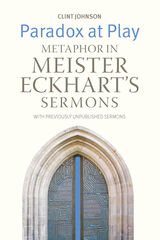 Paradox at Play: Metaphor in Meister Eckhart's Sermons: with previously unpublished sermons
Clint Johnson
Catholic University of America Press, 2022 Fresh translations of Meister Eckhart’s sermons are made available in this volume: three for the first time in English and sixteen others for the first time since C. de B. Evans translated them in 1924 and 1931, long before the critical editions of the manuscripts were published in 2003. Other important sermons are included in the translations as well. They improve upon previous translations which were not as sensitive to Eckhart’s metaphorical repertoire and his subtle word choice and phrasing.
The extended introductory essay describes Eckhart’s metaphors and how they work together to form a cohesive whole. By looking at what his metaphors tell us about what an individual person is and how the view of the individual changed in the late medieval world, his ostensibly shocking rhetoric (in places where it is actually novel) is shown to be indicative of a larger cultural tide that culminated in the modern worldview. Finally, all of his homiletic choices are shown to be in service of the greater goal: catalyzing transformative change in his audience by stubbornly insisting on his paradoxes and jarring people out of their customary way of relating to God and themselves.
PARADOX HILL: "FROM APPALACHIA TO LUNAR SHORE, REVISED EDITION"
Poems by Louise McNeill, Edited and with an Introduction by A. E. Stringer
West Virginia University Press, 2009 With a new introduction by A.E. Stringer, this reprint of Louise McNeill's classic work remains as vivid as when it was first published. Containing poems from several decades of her career, Paradox Hill: From Appalachia to Lunar Shore is a must-have collection of a beloved poet's heartfelt exploration of her physical and cultural surroundings.
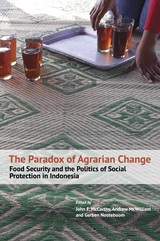 The Paradox of Agrarian Change: Food Security and the Politics of Social Protection in Indonesia
Edited by John McCarthy, Andrew McWilliam, and Gerben Nooteboom
National University of Singapore Press, 2023 A detailed study of agrarian change, the persistence of food insecurity, and the most significant policy to address poverty in rural Indonesia.
Economic growth in the middle-income countries of Southeast Asia over the past few decades has been widely praised for reducing poverty in both absolute and relative terms. Indonesia is a prime example. But while poverty has declined in Indonesia, patterns of food poverty persist across Indonesia. What explains this troubling paradox? How does it relate to Indonesia’s enthusiastic embrace of the “entitlements revolution,” the use of direct cash transfers as a tool for reducing poverty and building social inclusion?
This book analyzes the nature and social consequences of economic development and agrarian change processes in rural Indonesia in relation to the scope and effectiveness of Indonesia’s social protection programs. The findings are based on a series of extensive ground-up case studies in Indonesian communities in a variety of eco-agrarian settings that seek to understand the drivers of food insecurity and vulnerability at a household level. The results show that while high-value farming, diversification, and migration may offer a means of economic progress for poor households, opportunities for accumulation are limited. This, the authors show, is due to the way class, gender, and power work in remote local contexts, and the fact that much surplus income is used for enhanced consumption and changing lifestyles. There are few signs of the classical structural transformation of the countryside which has historically been considered the most decisive pathway out of rural poverty. The authors conclude that social assistance is unlikely to counter the persistence of rural poverty, food insecurity, and precarity in the absence of other redistributive strategies that shift the structural drivers of inequality.
|
|

